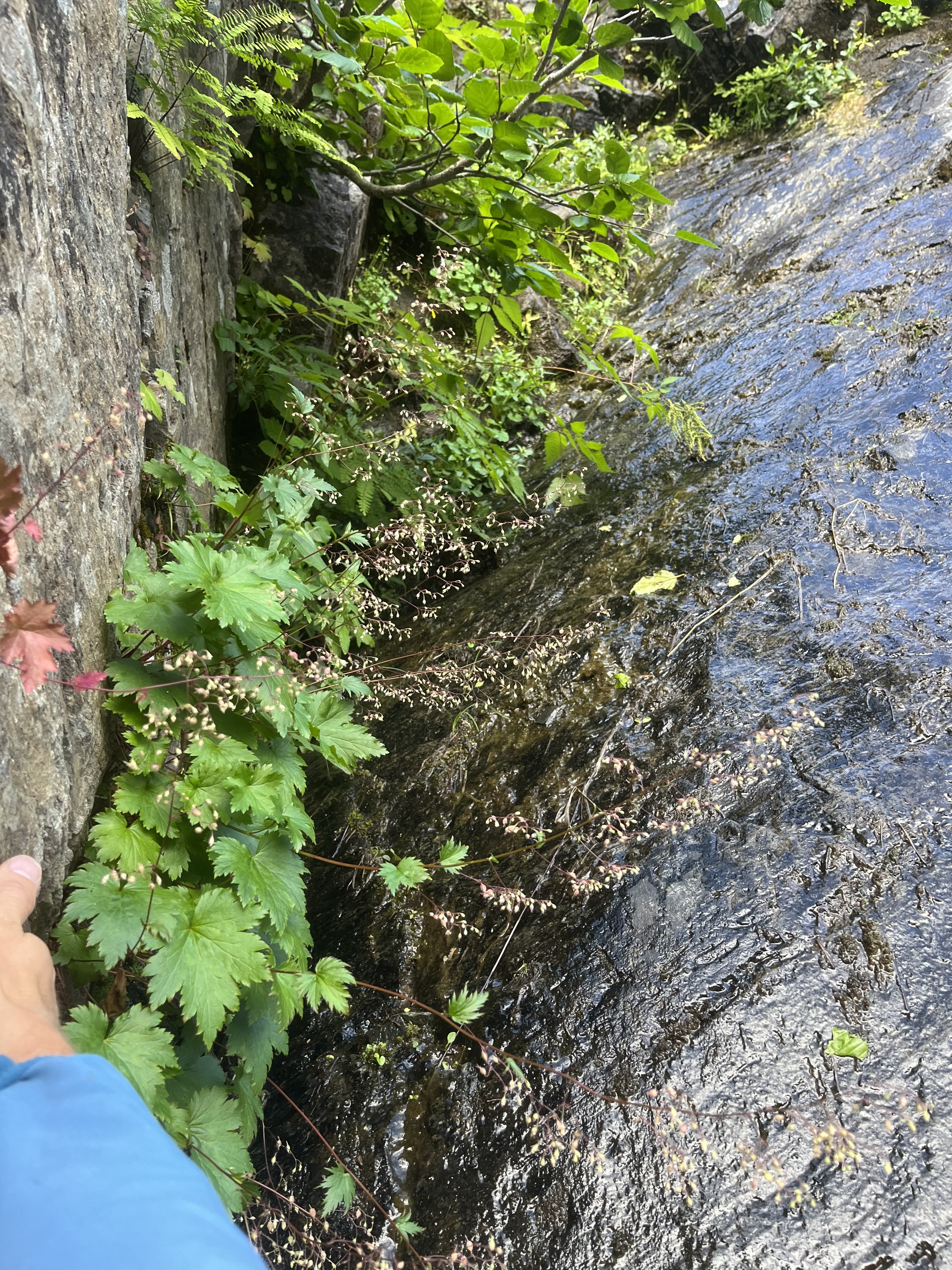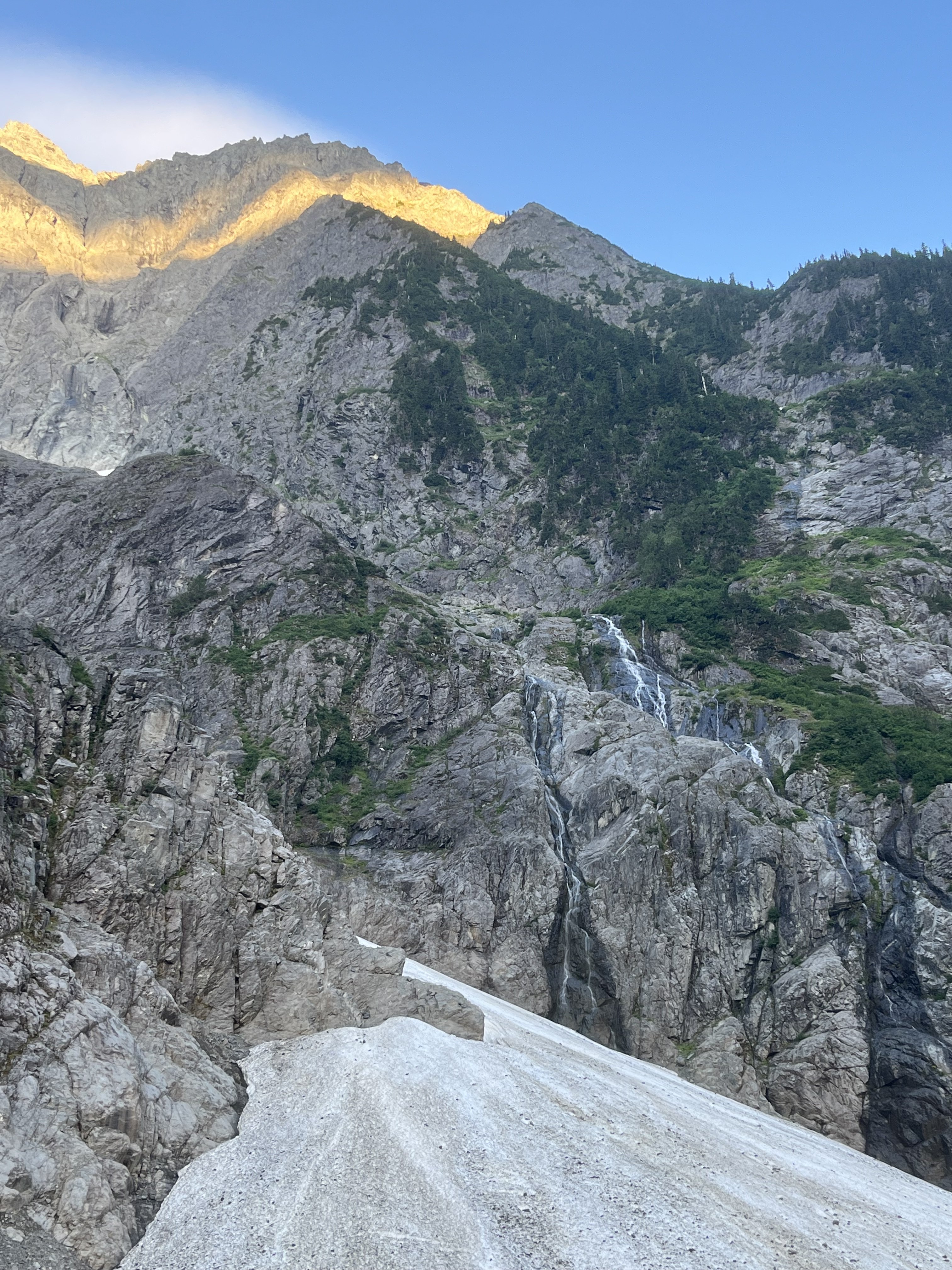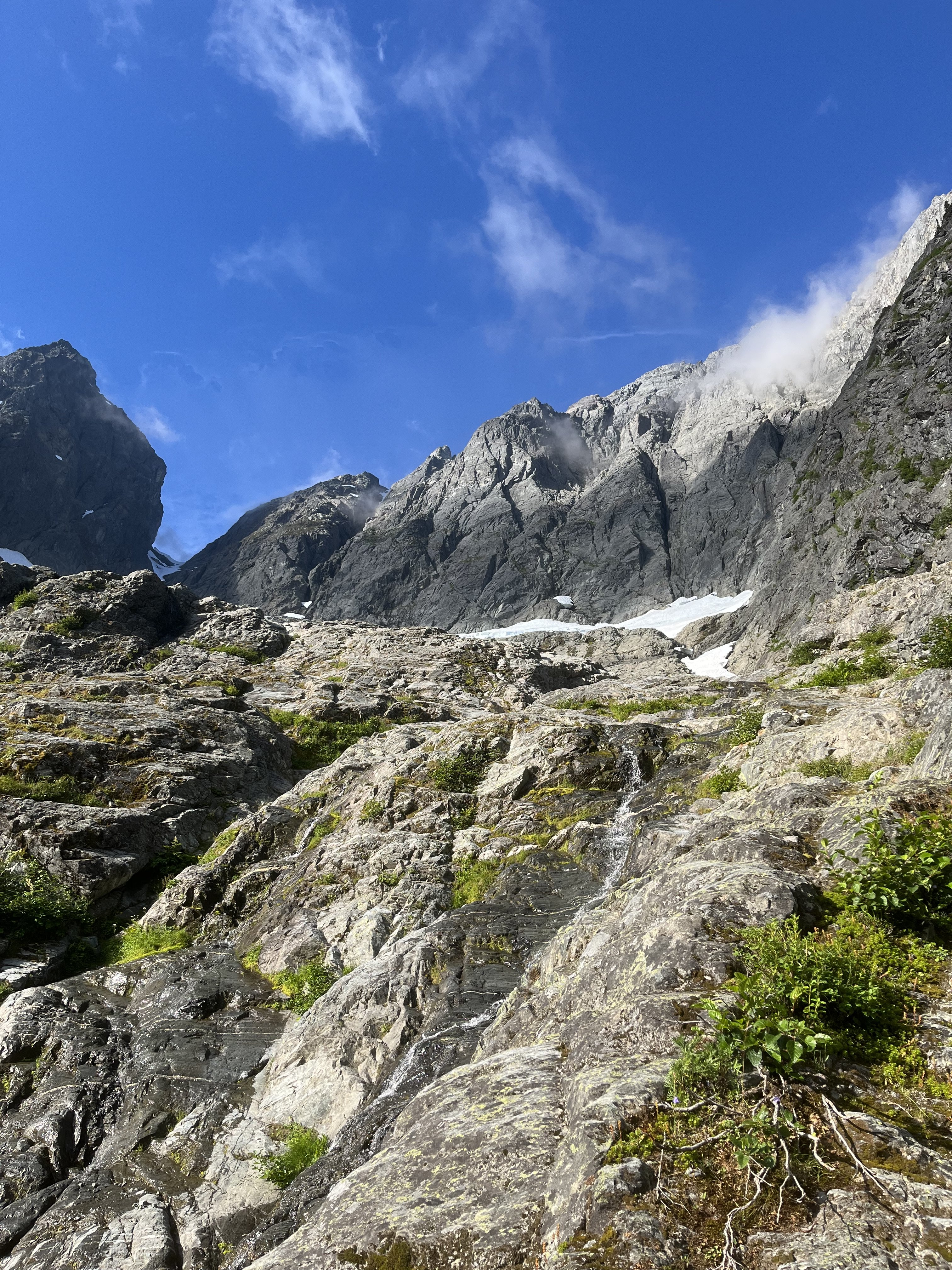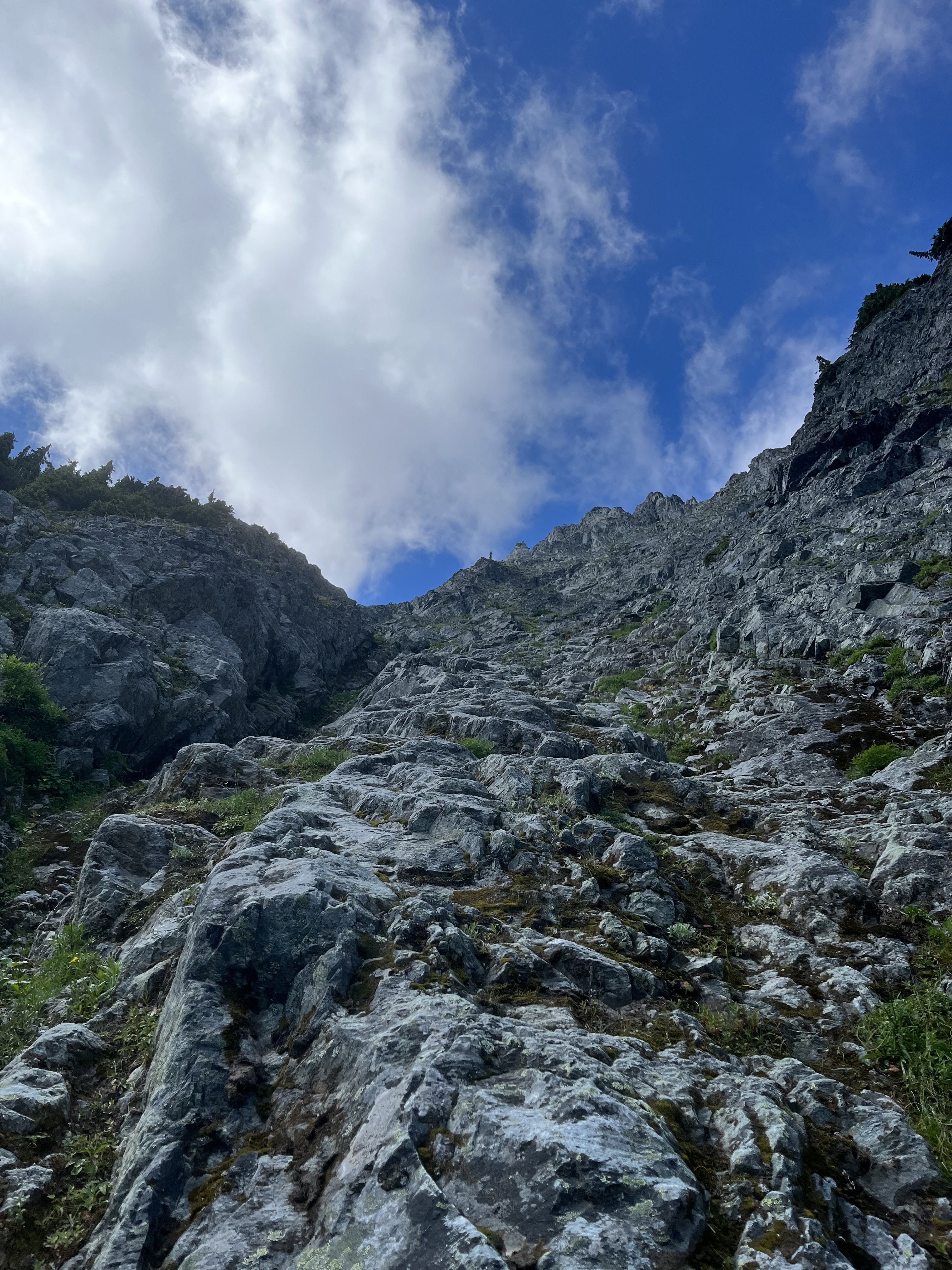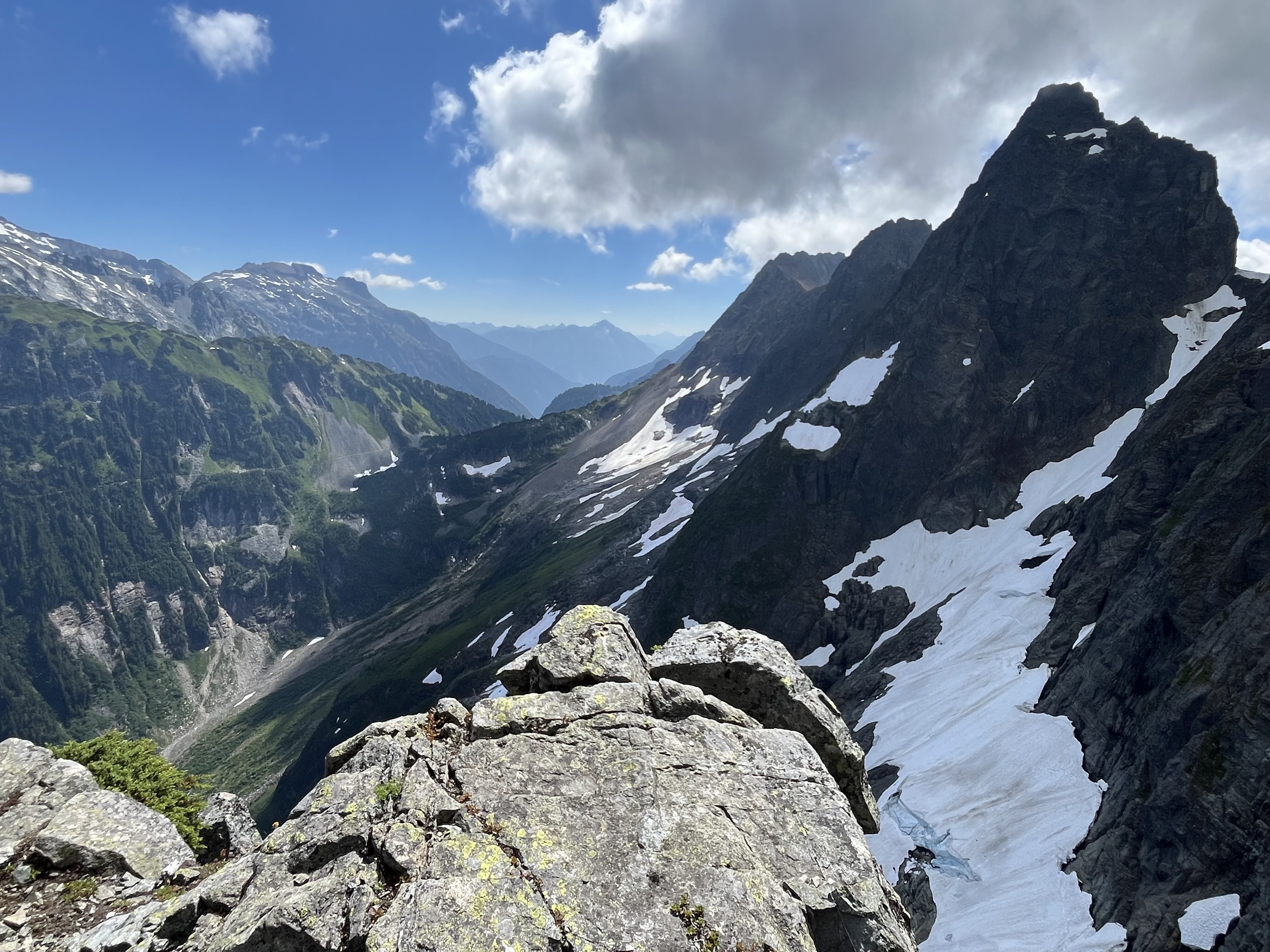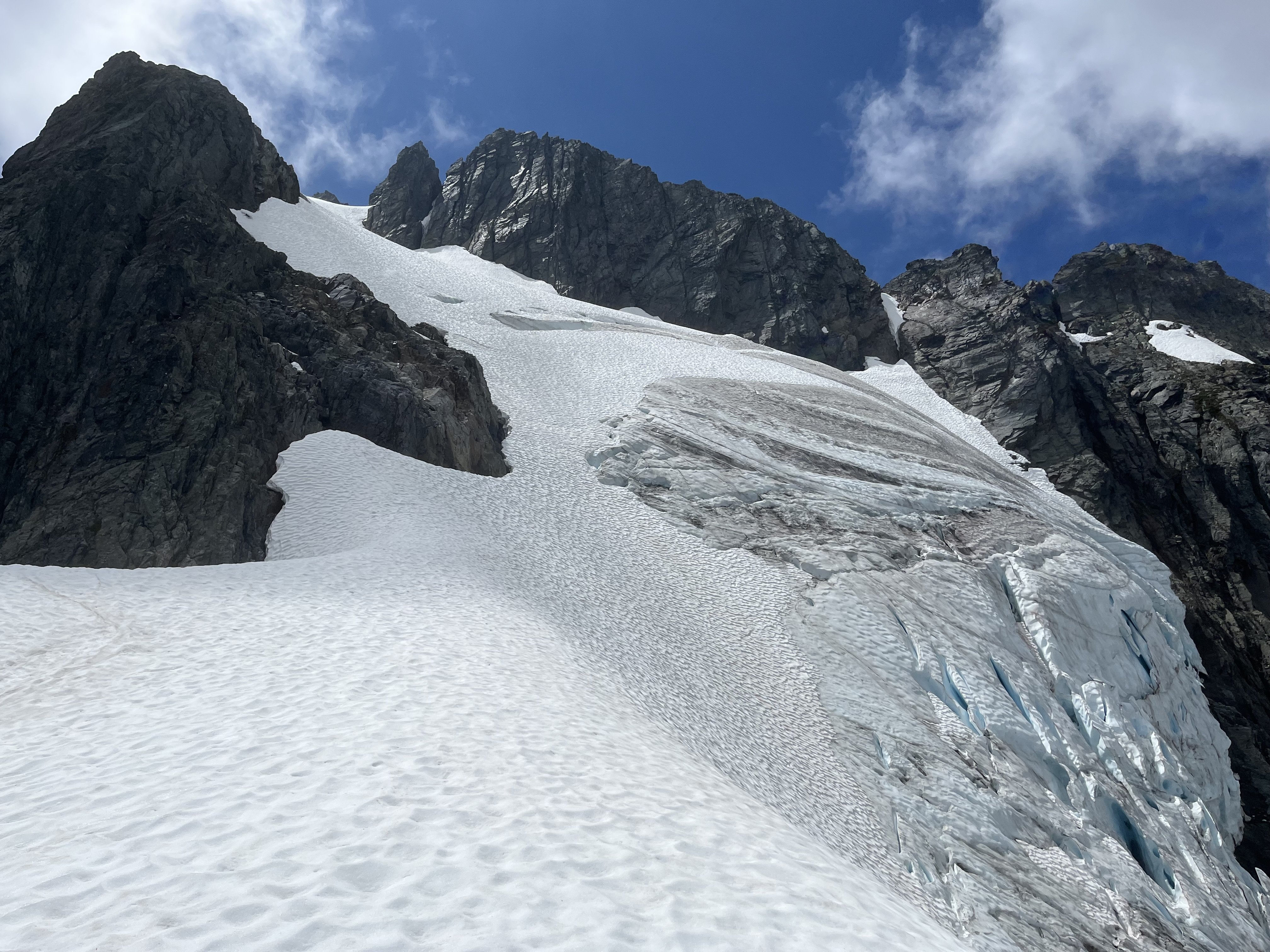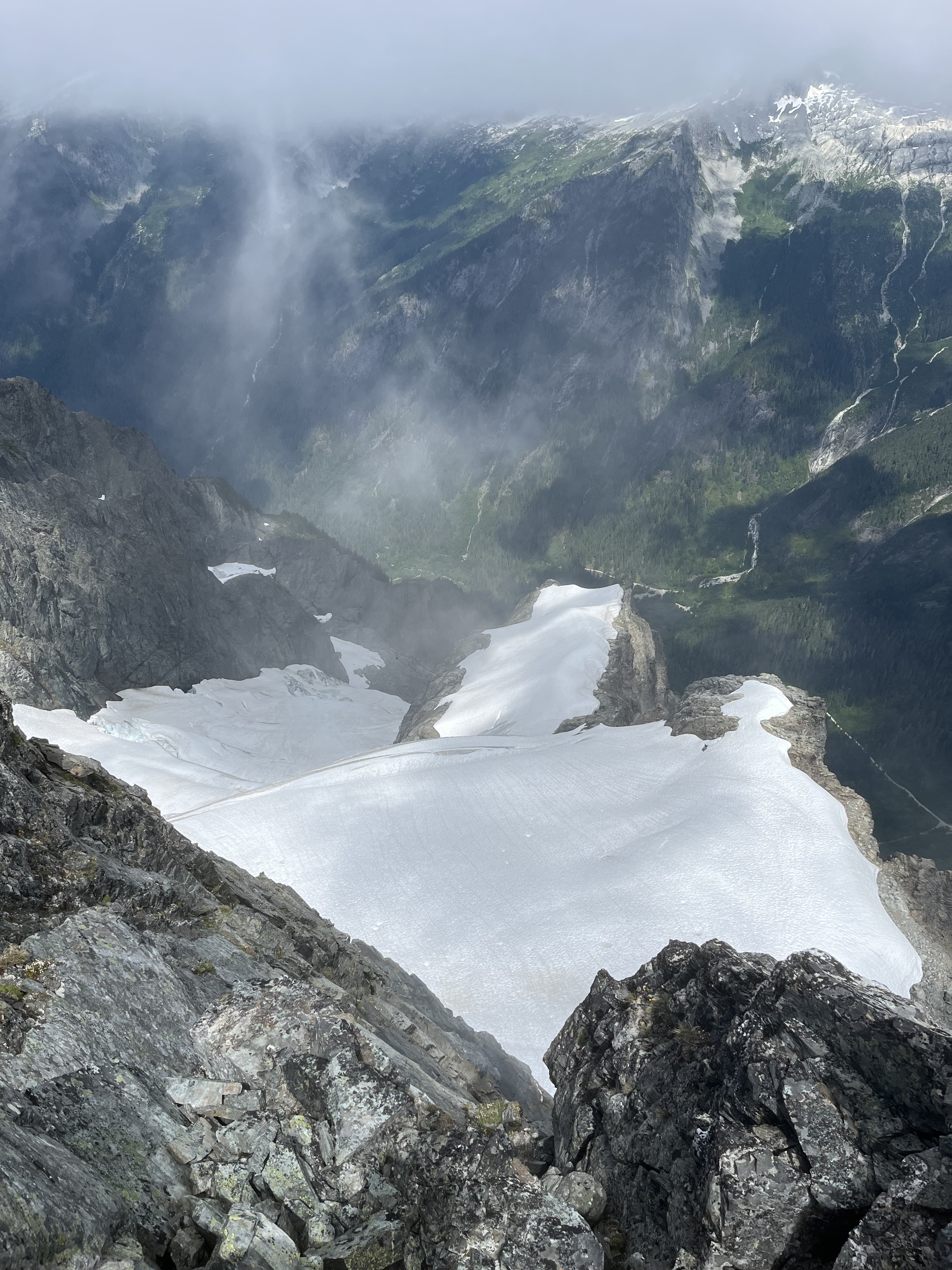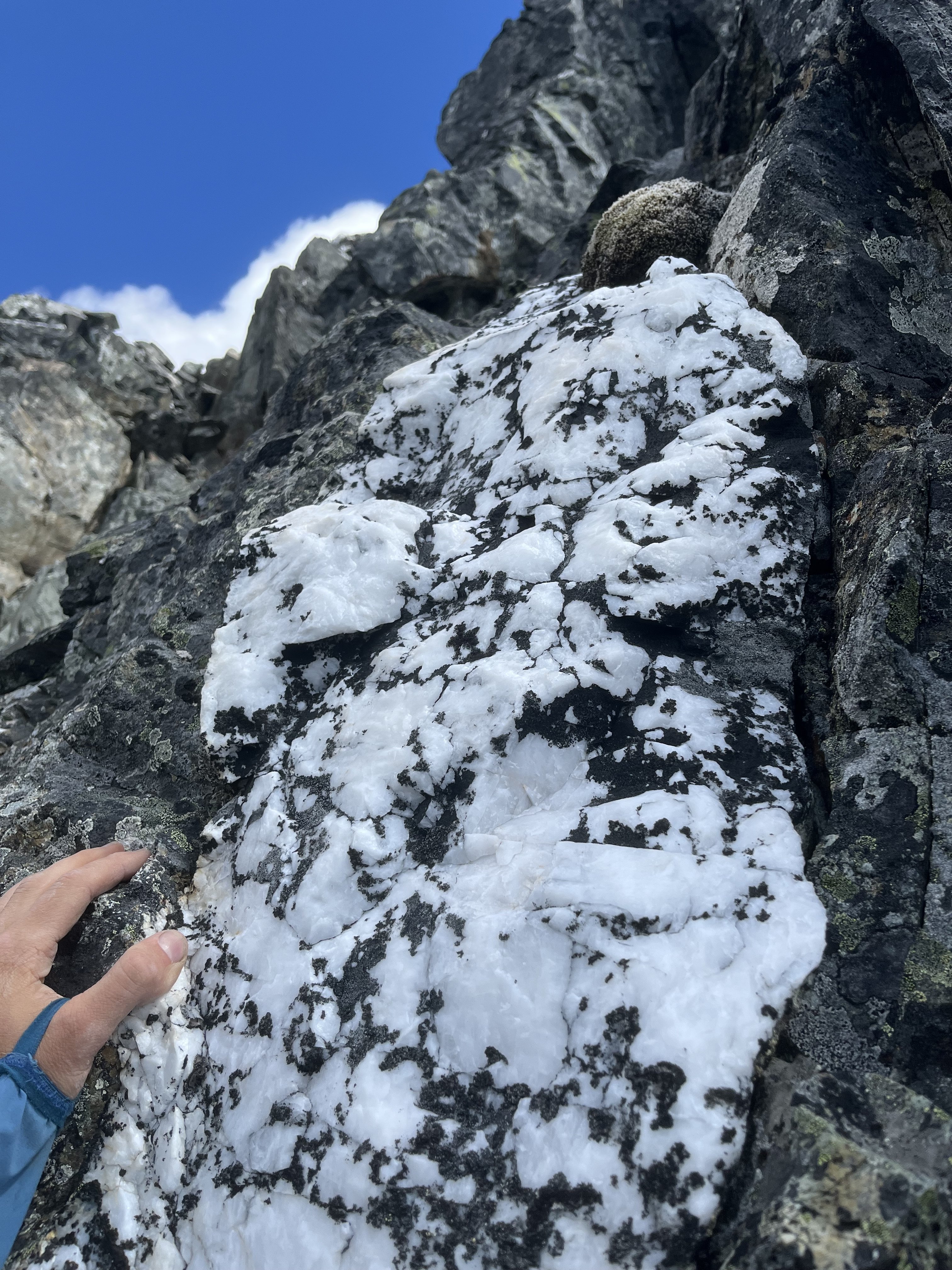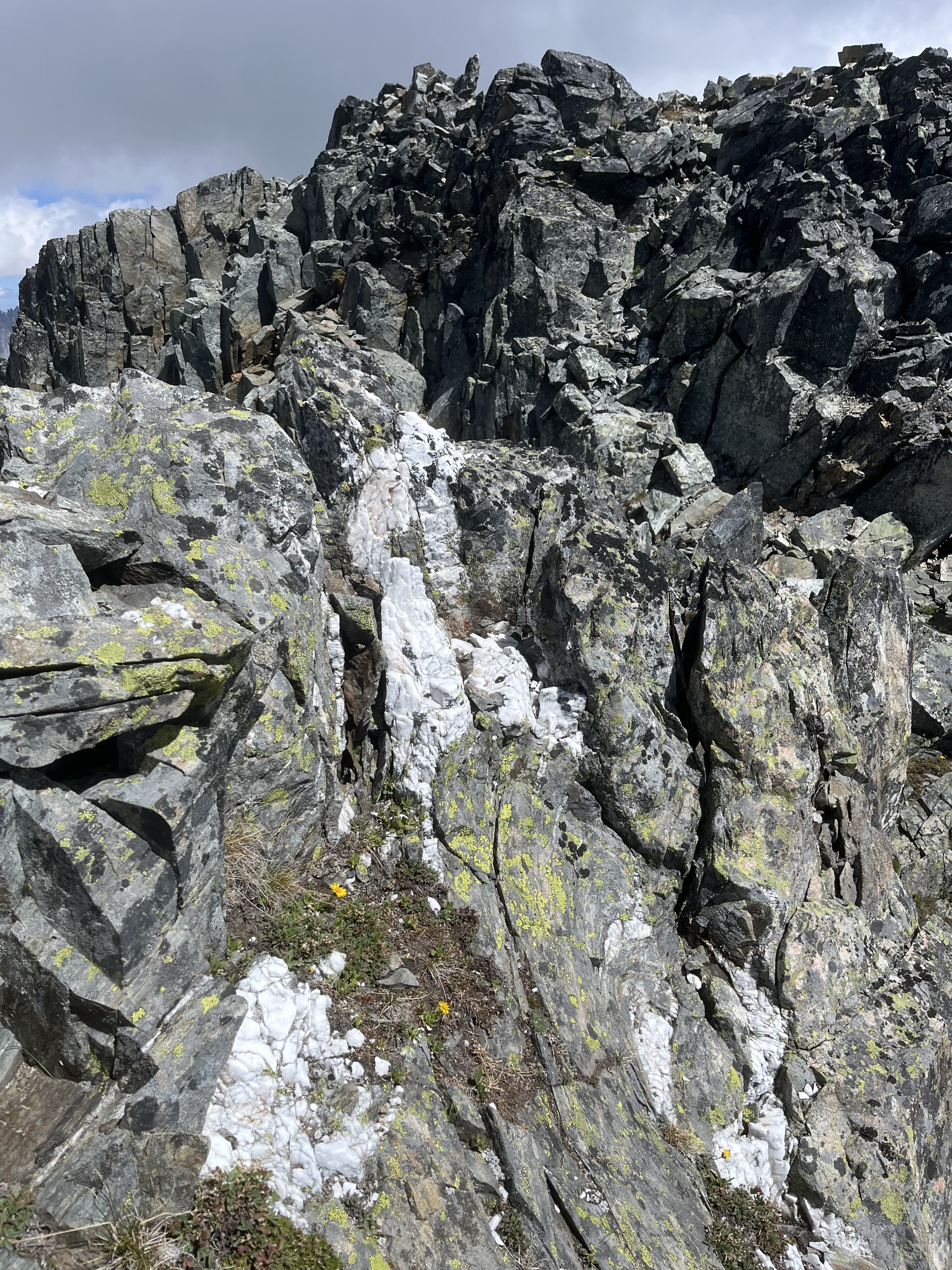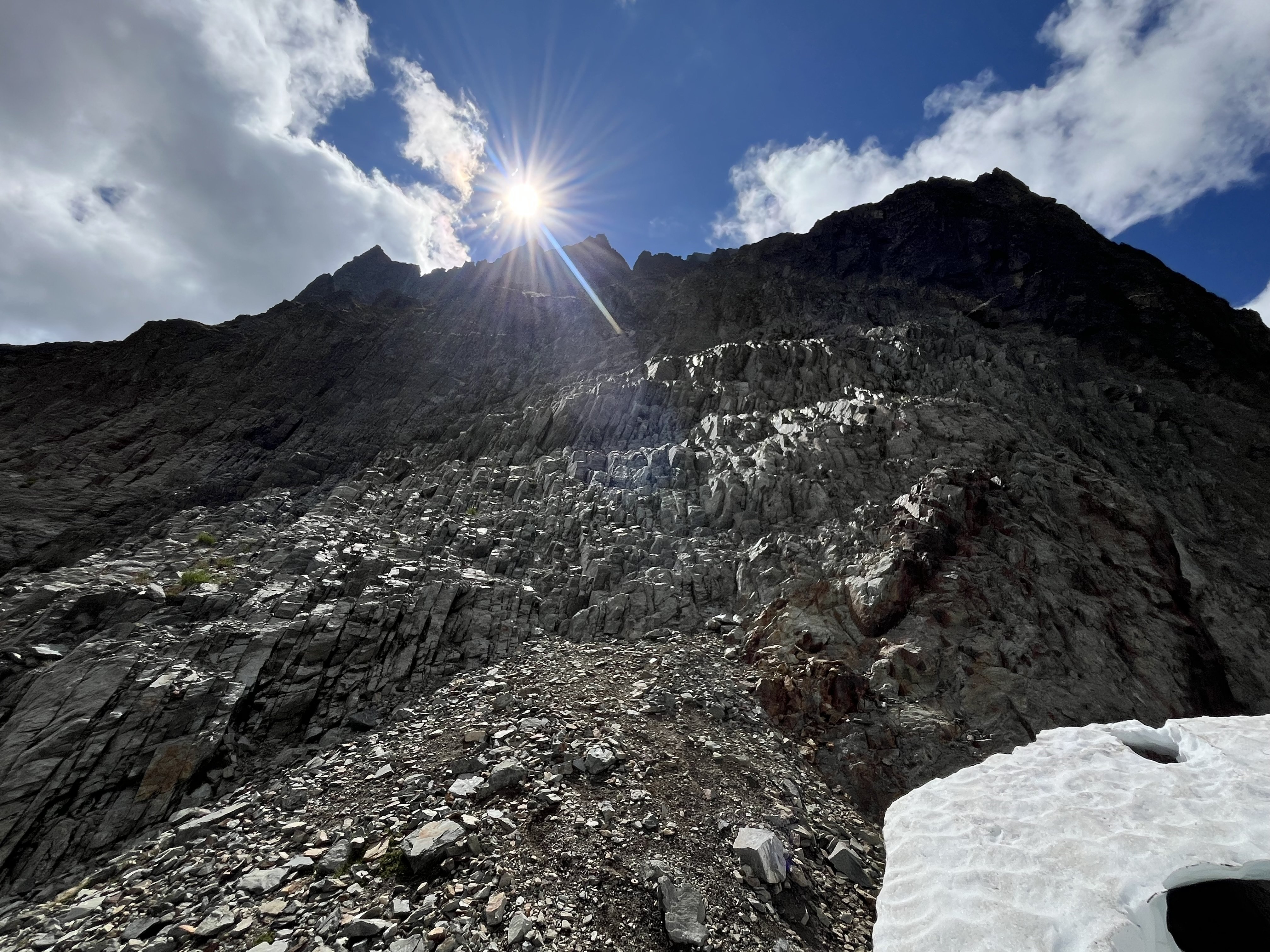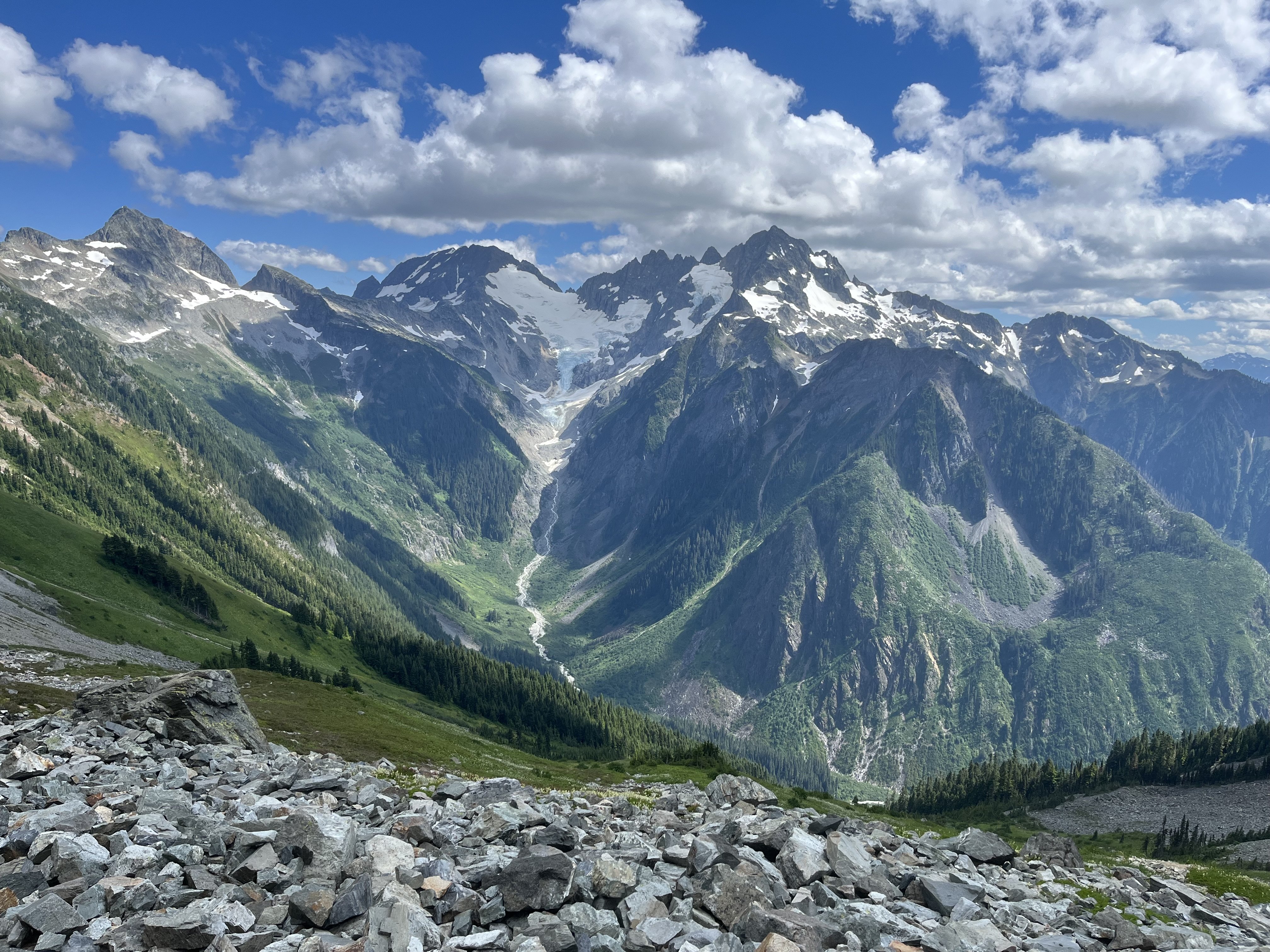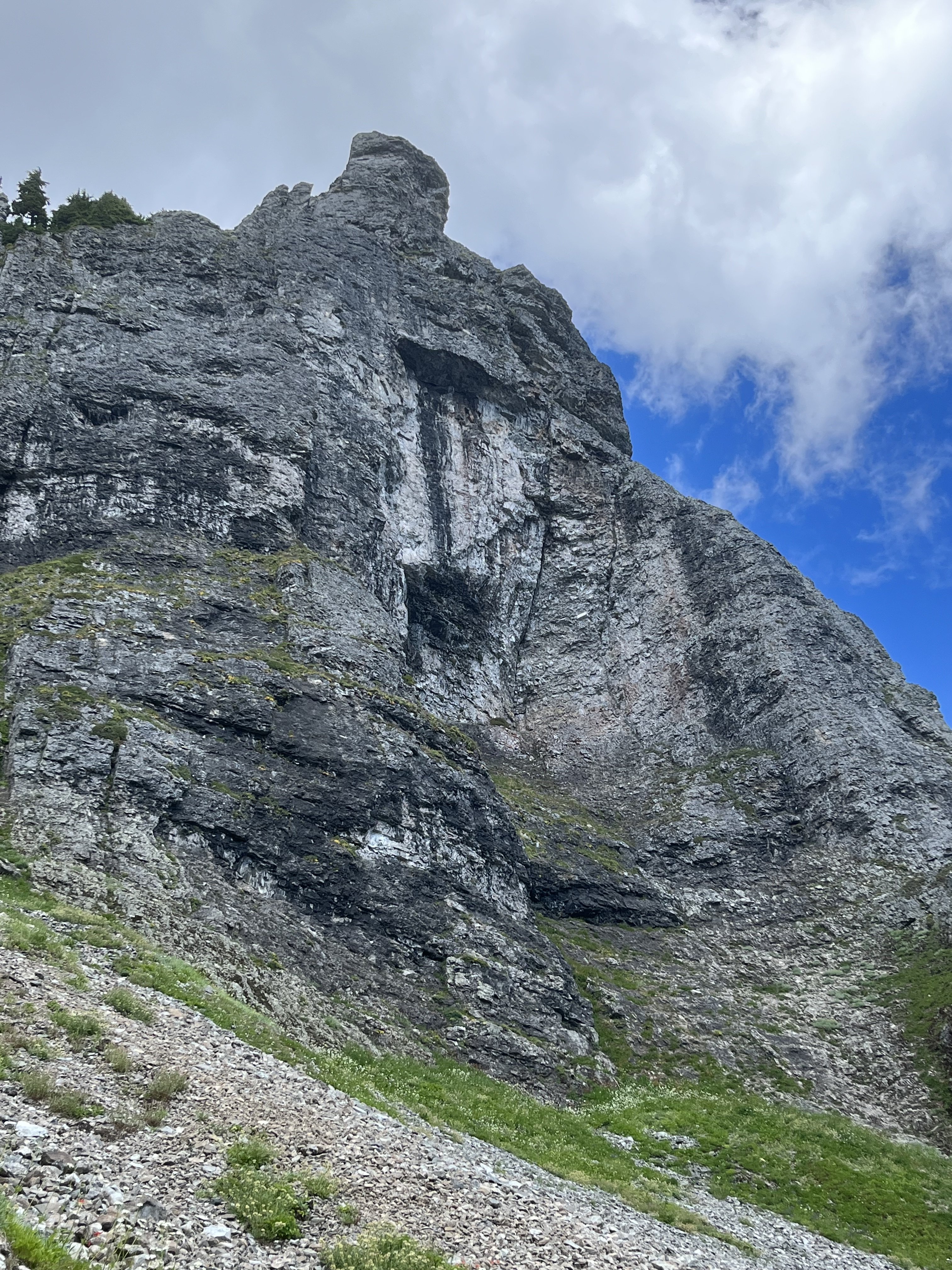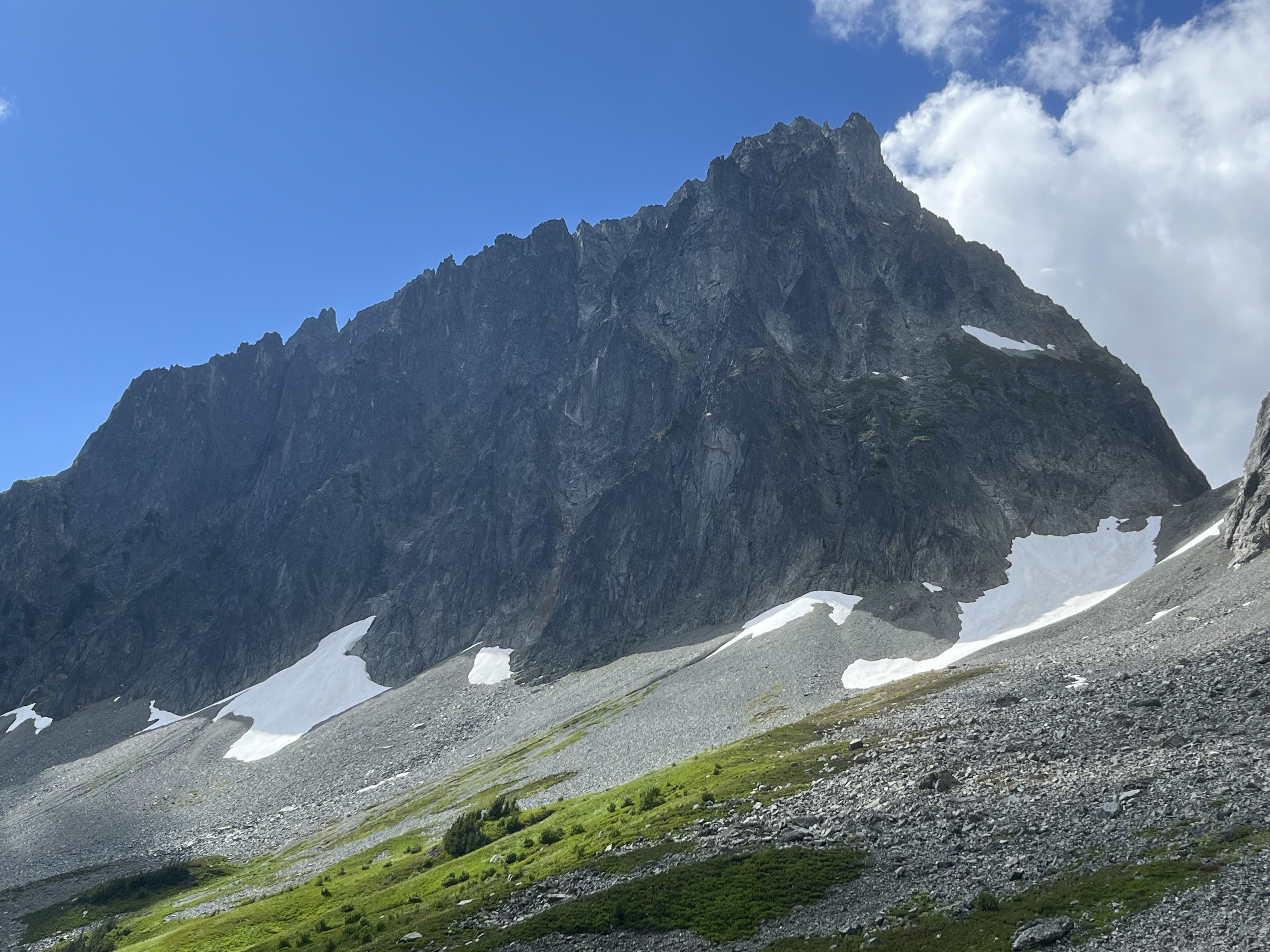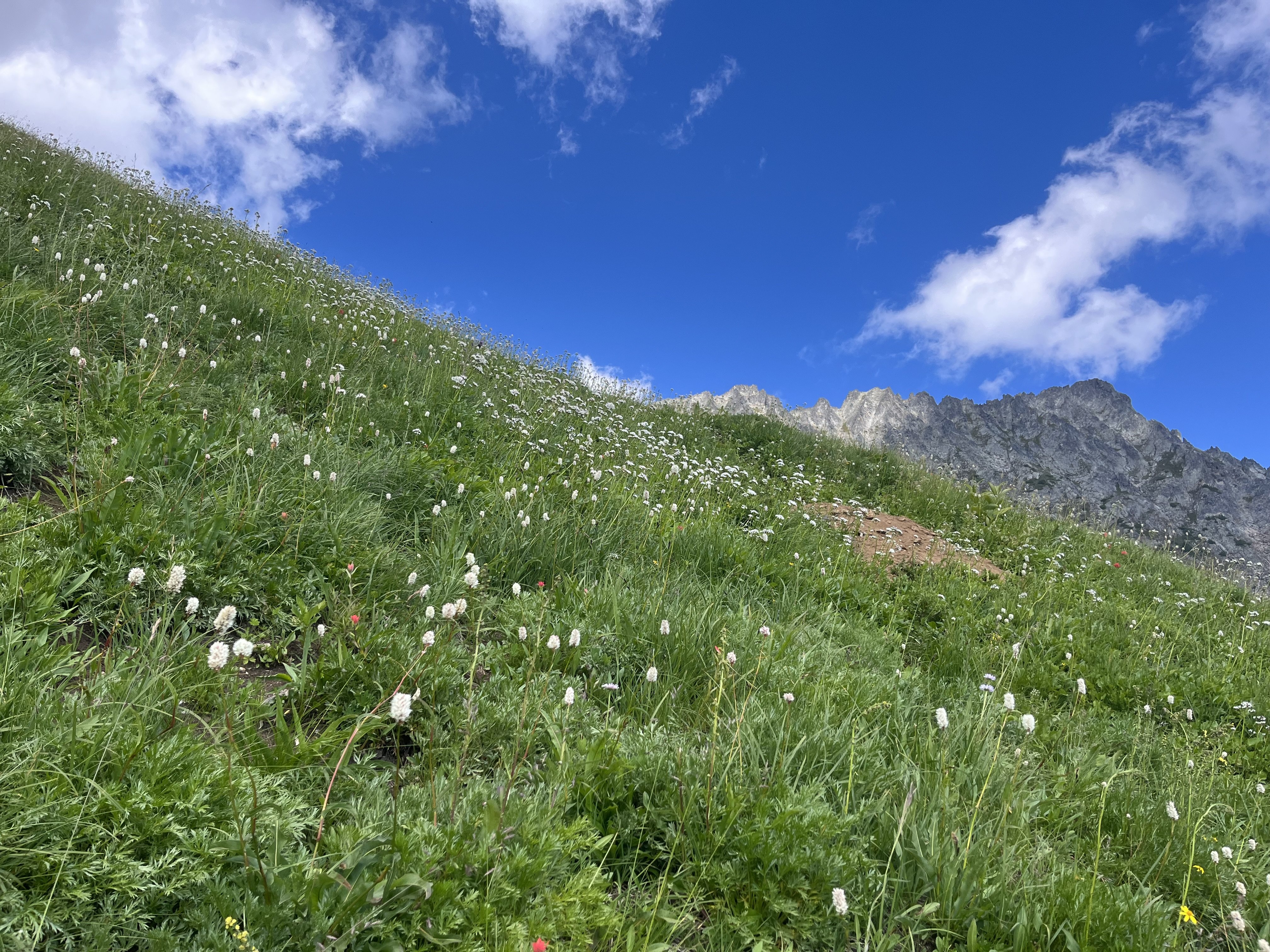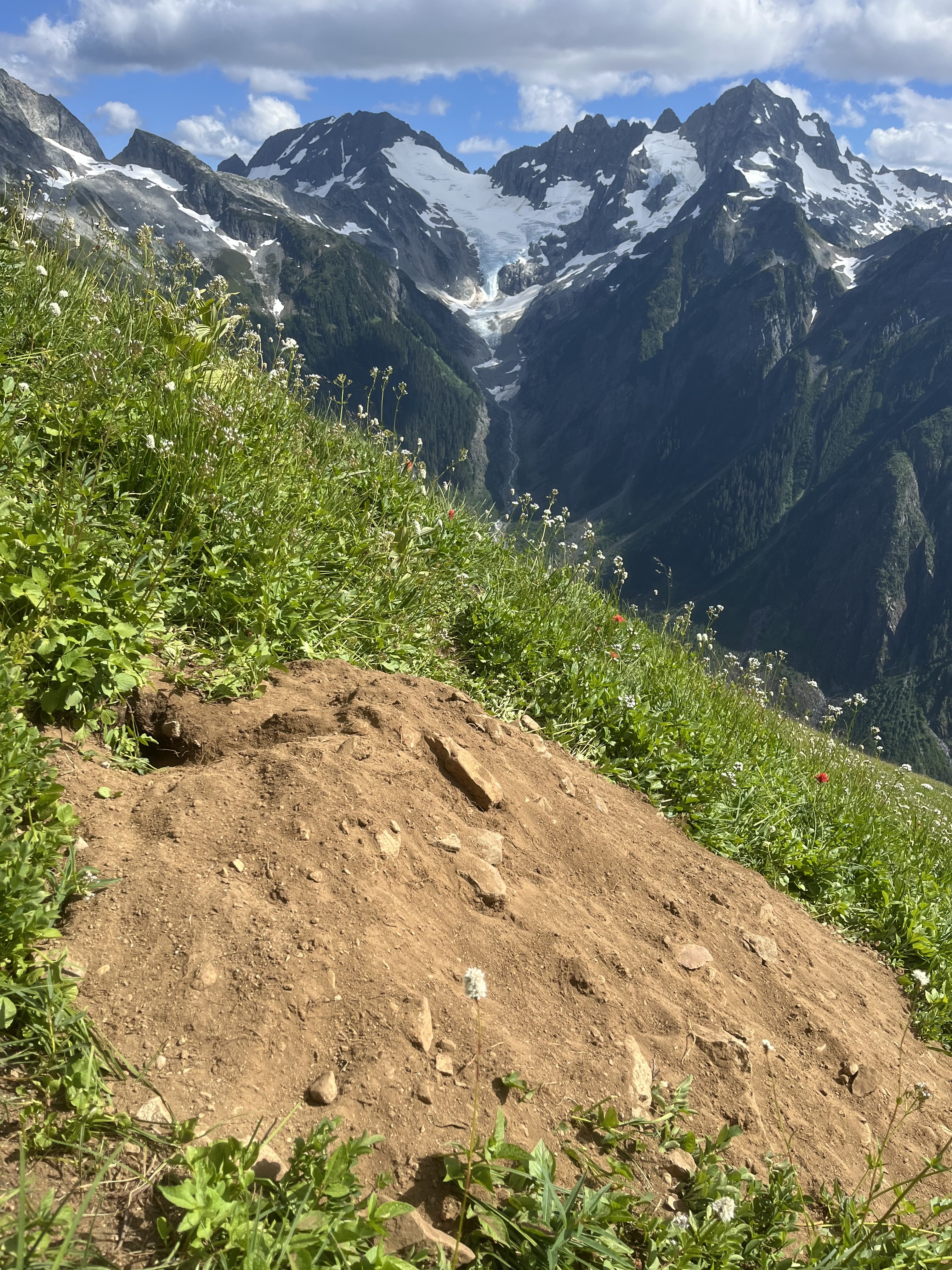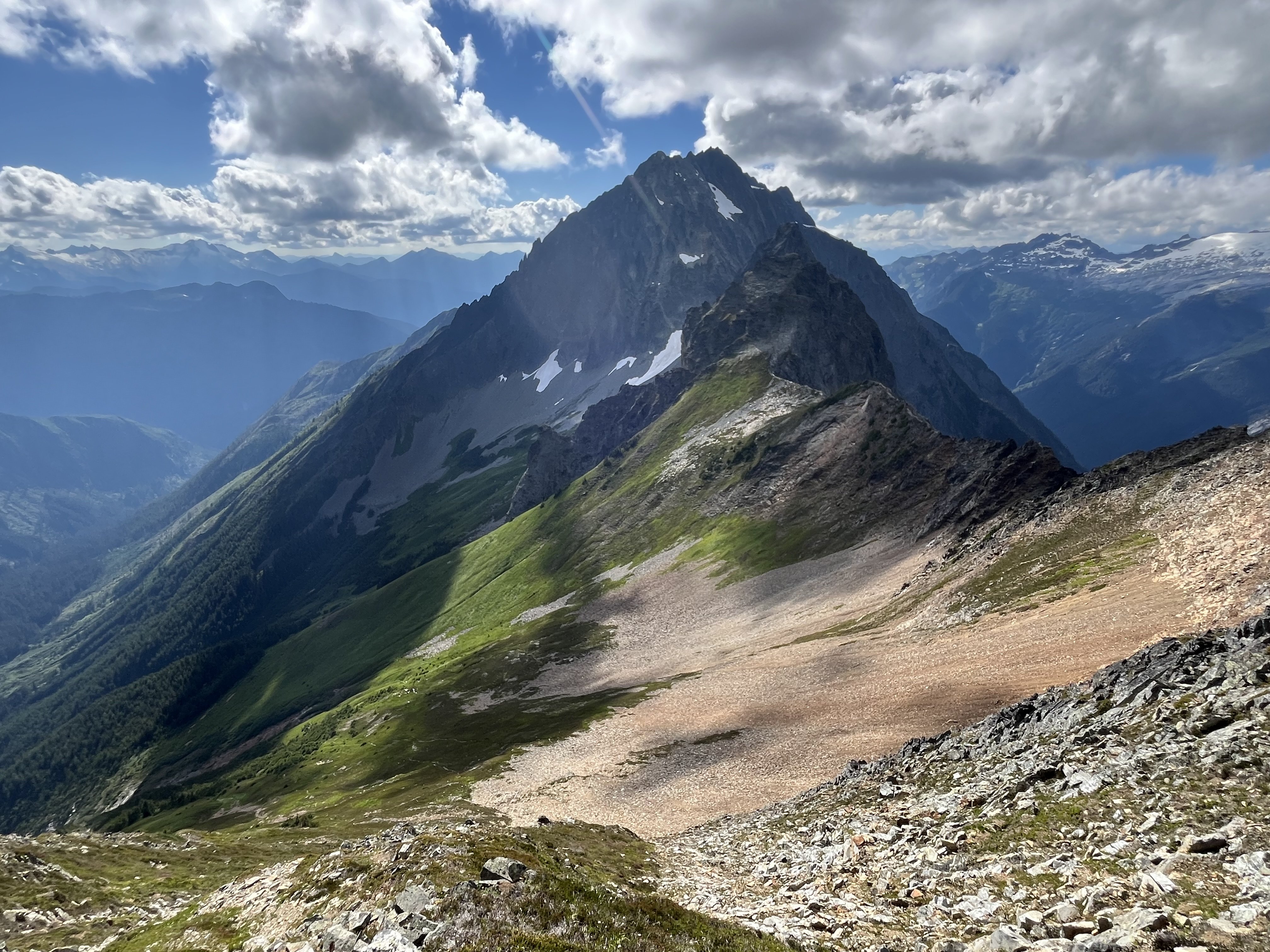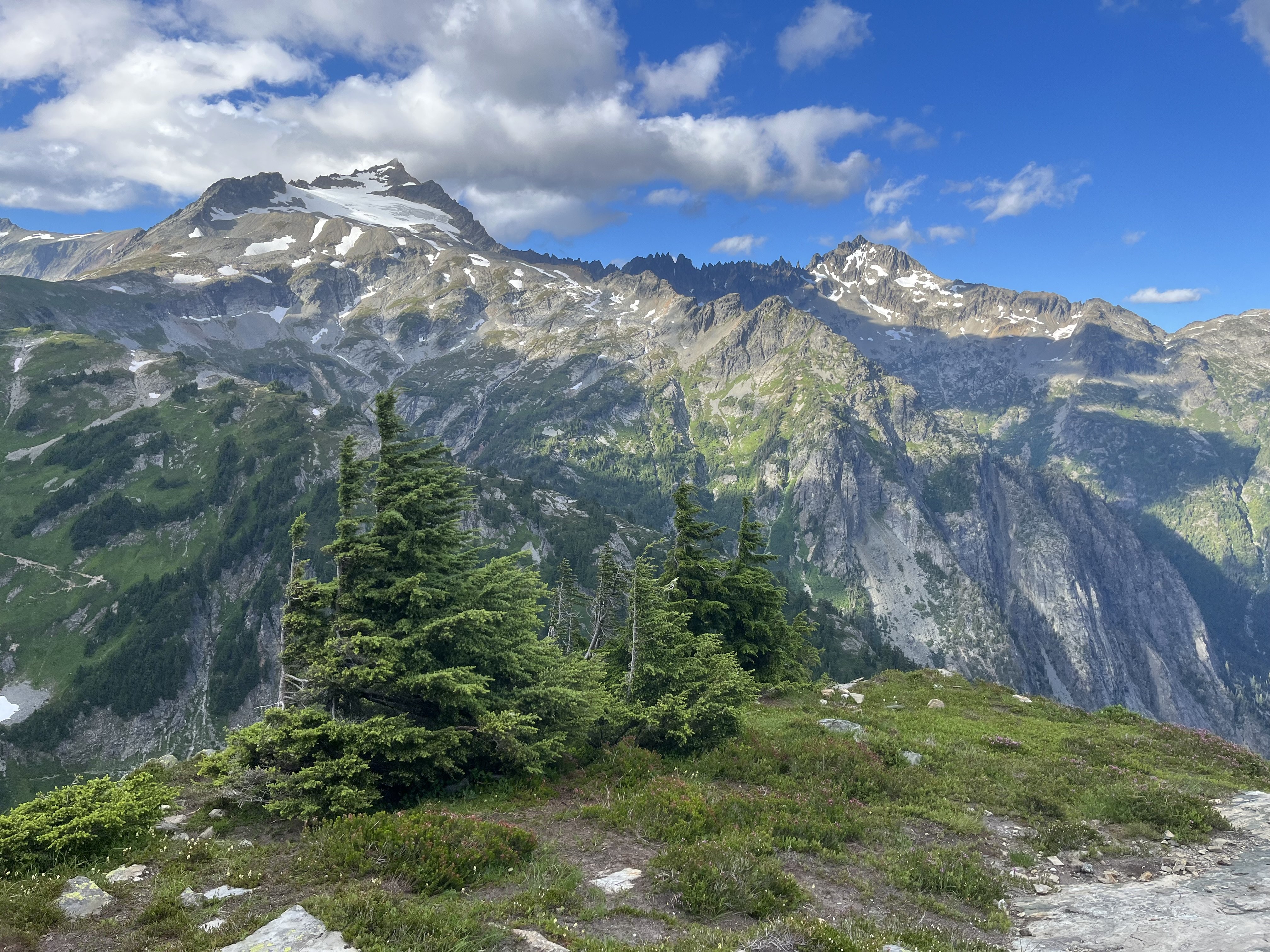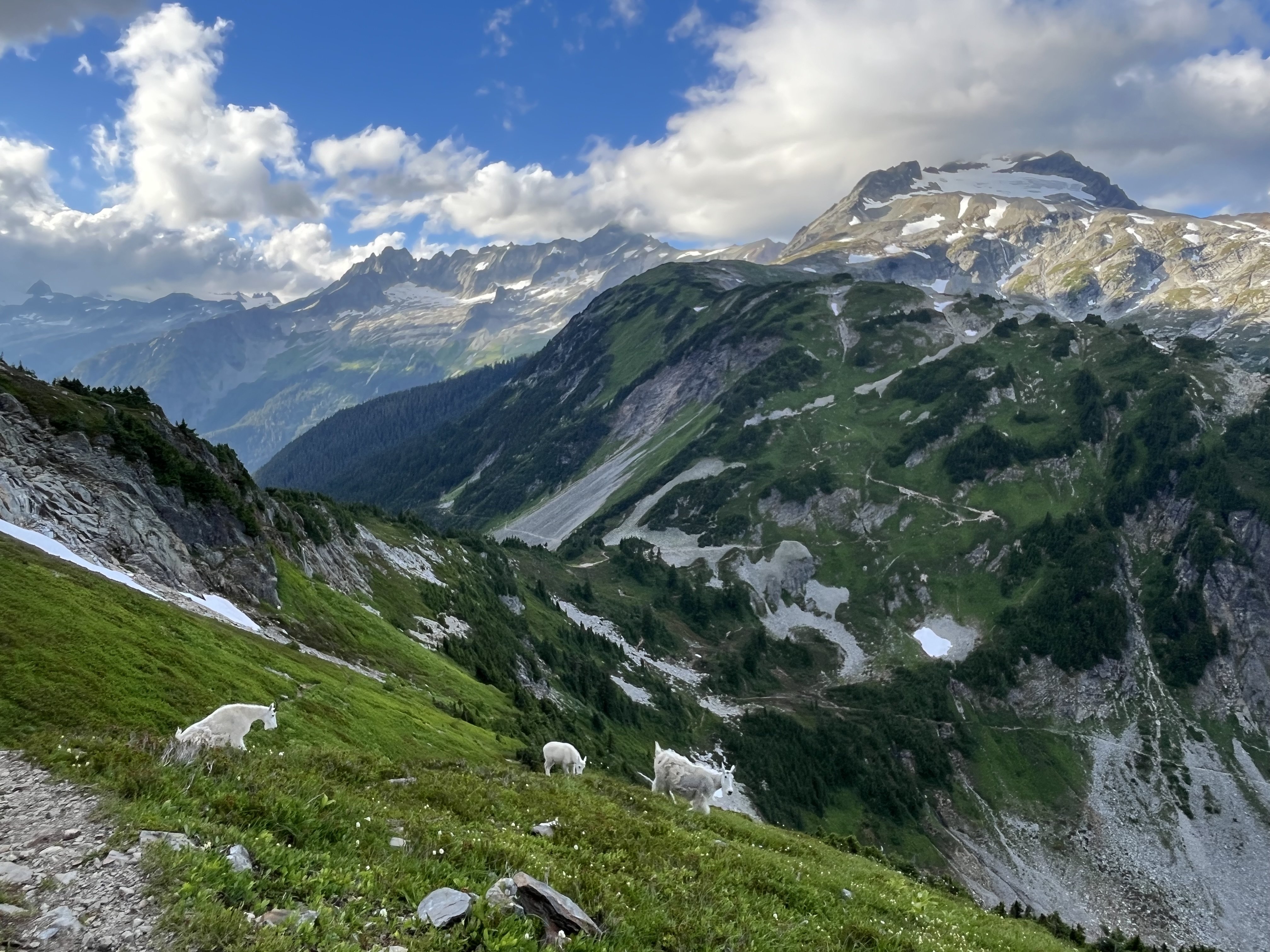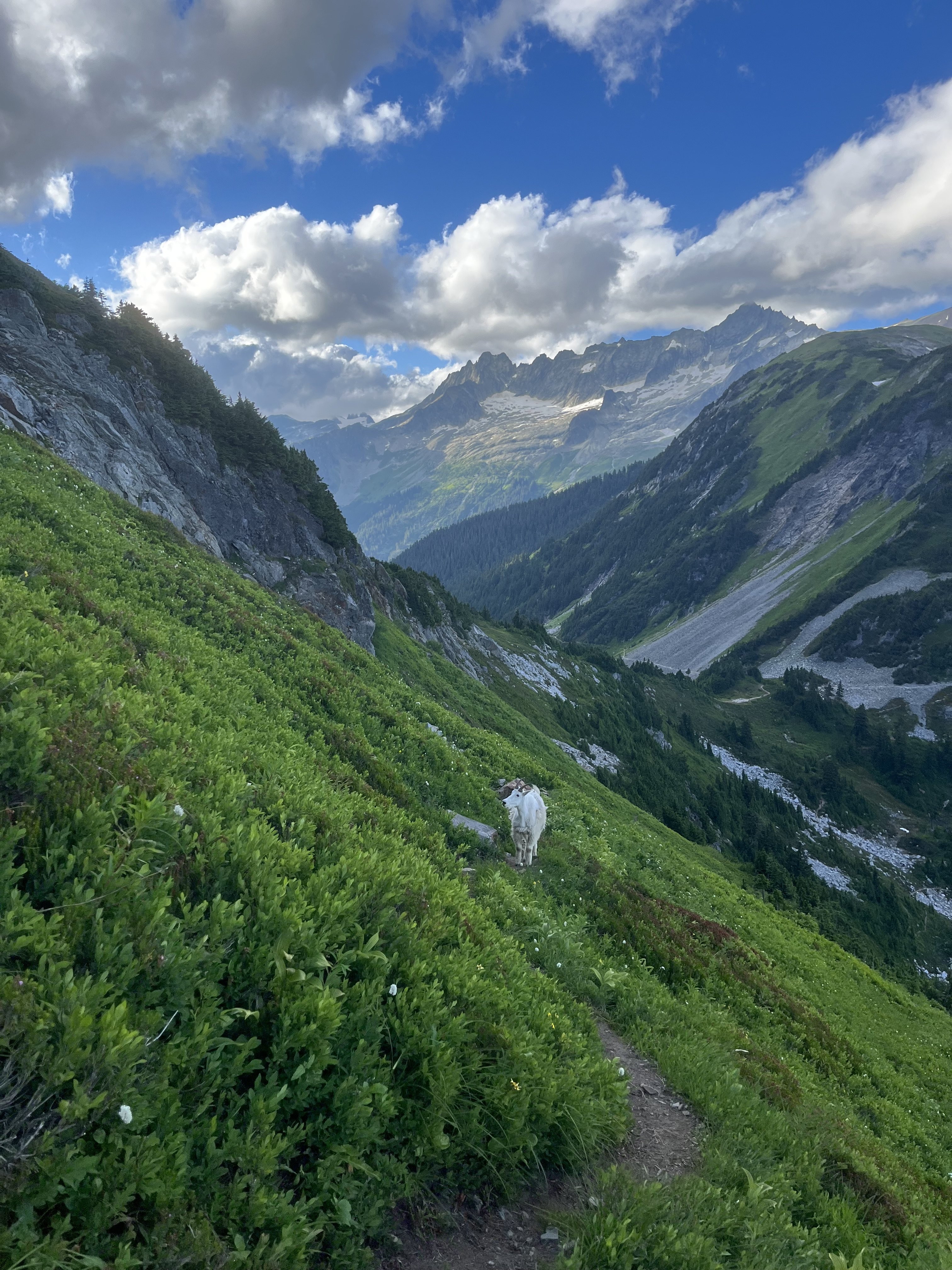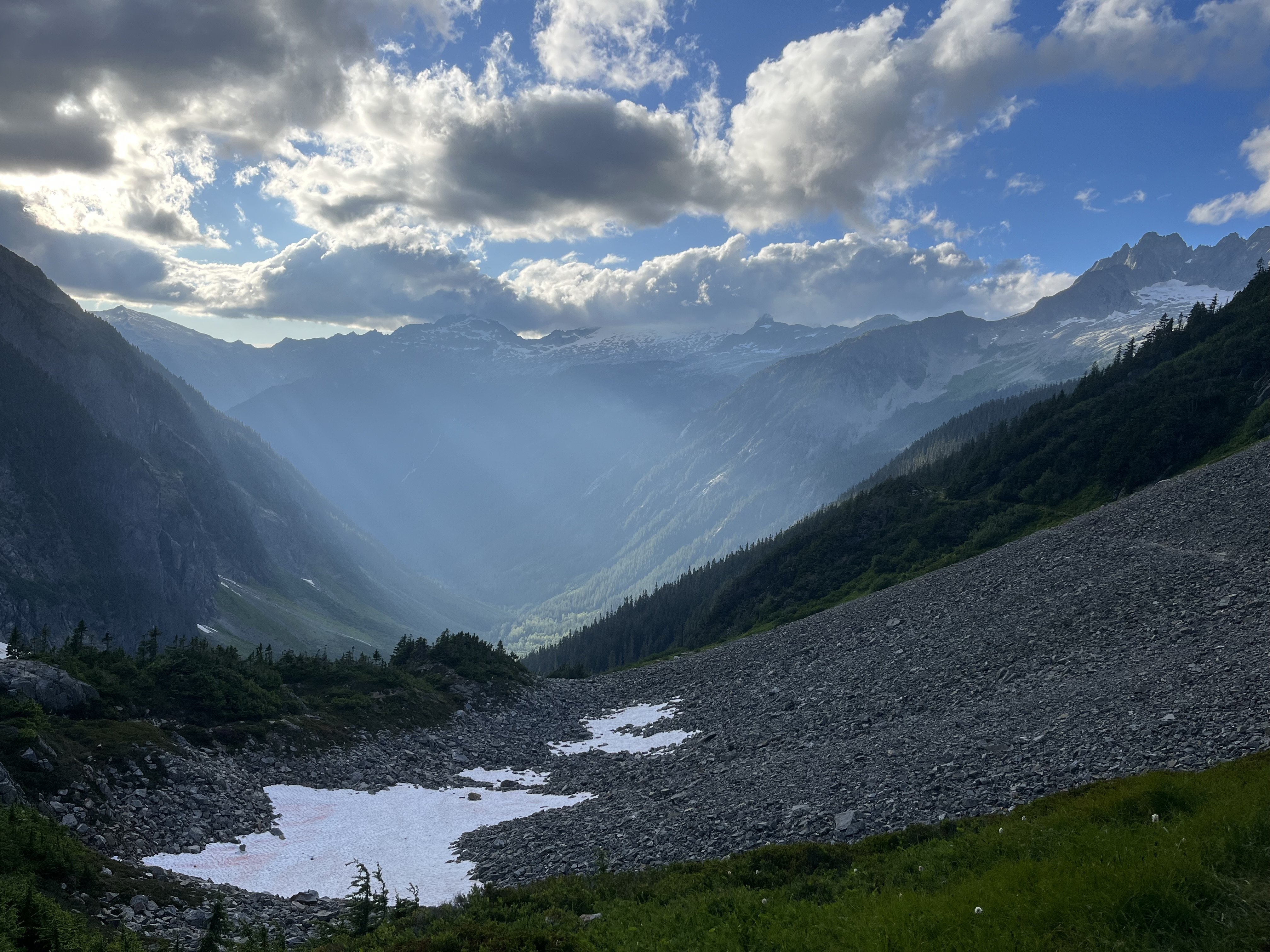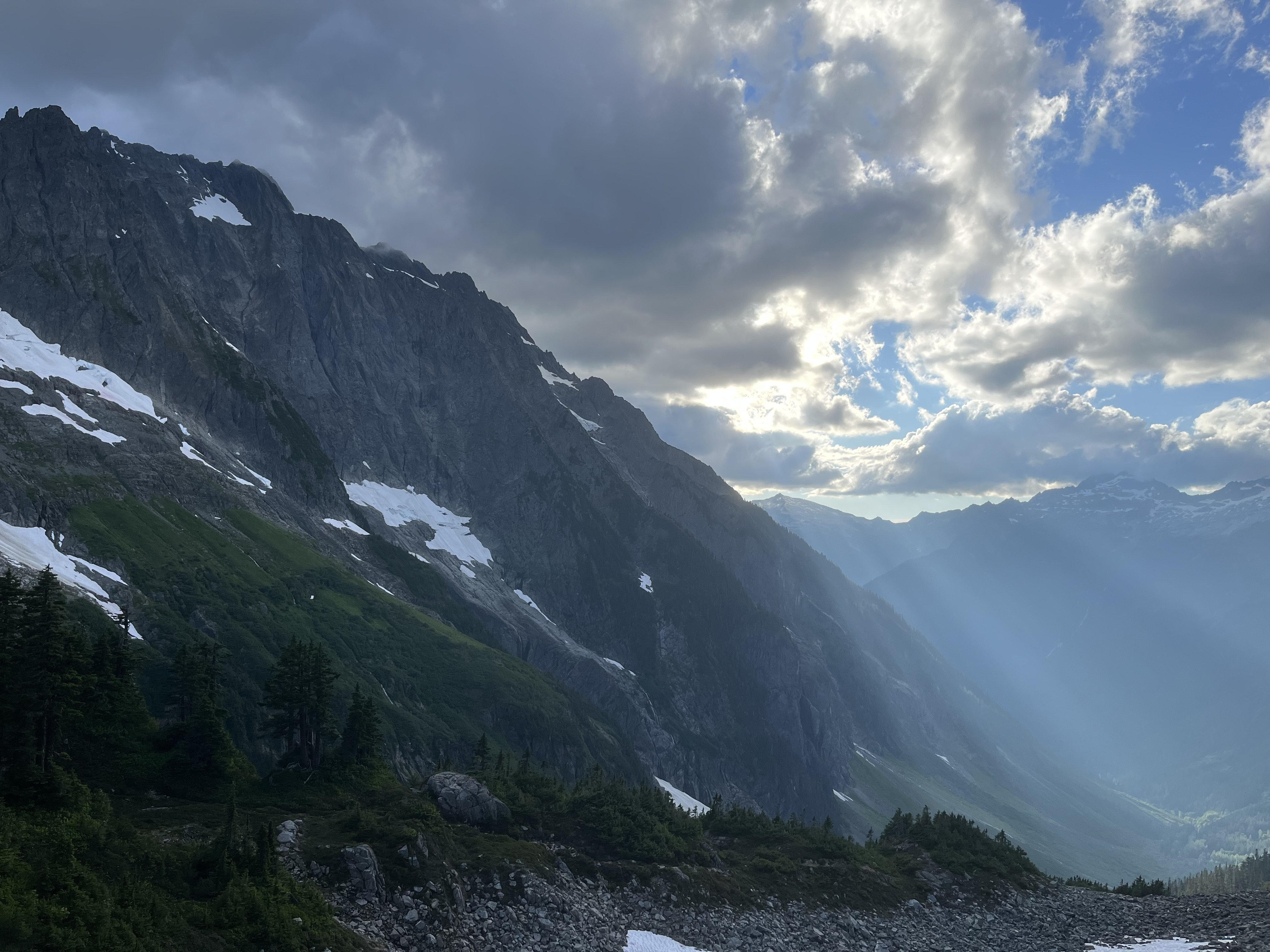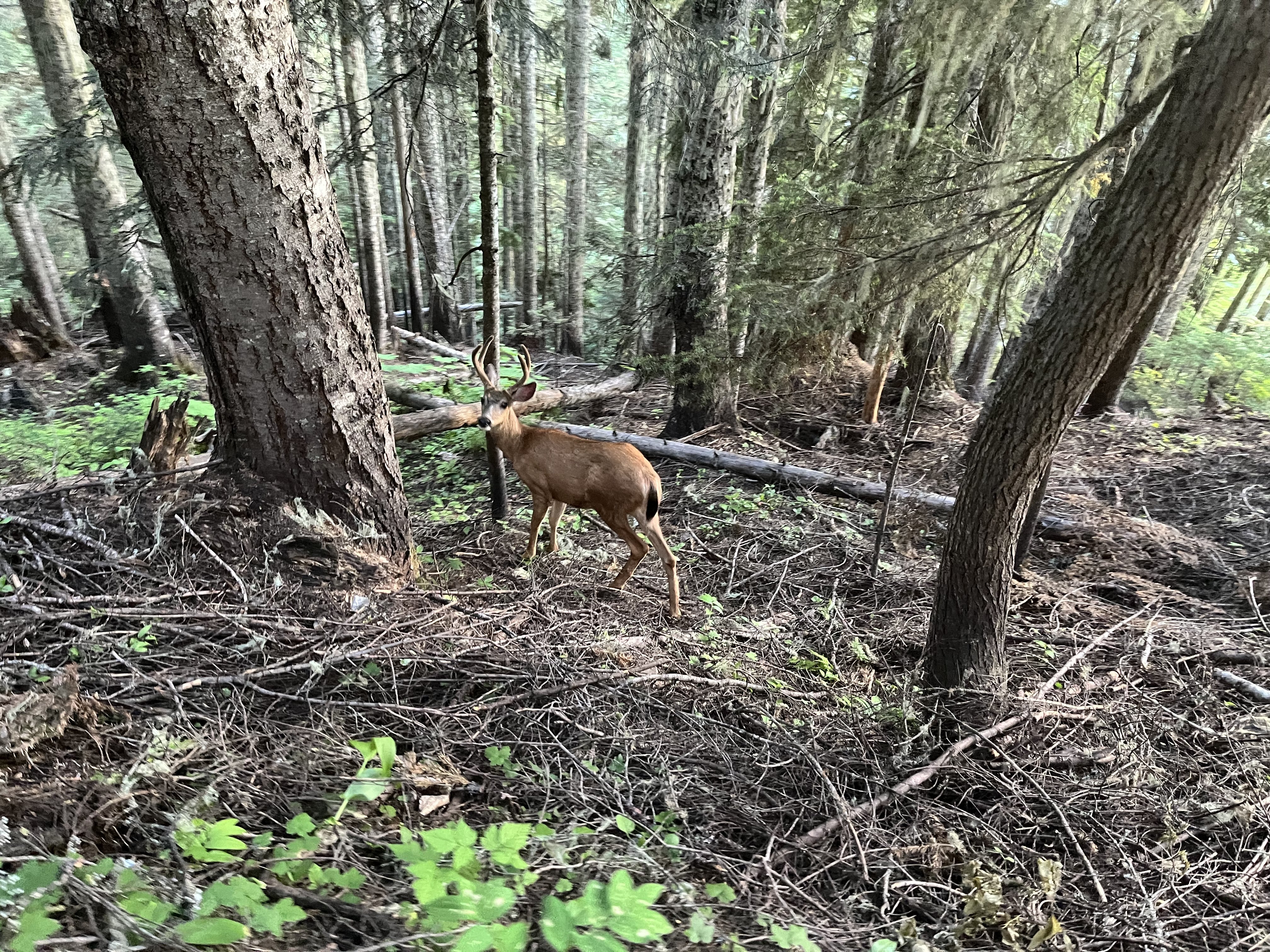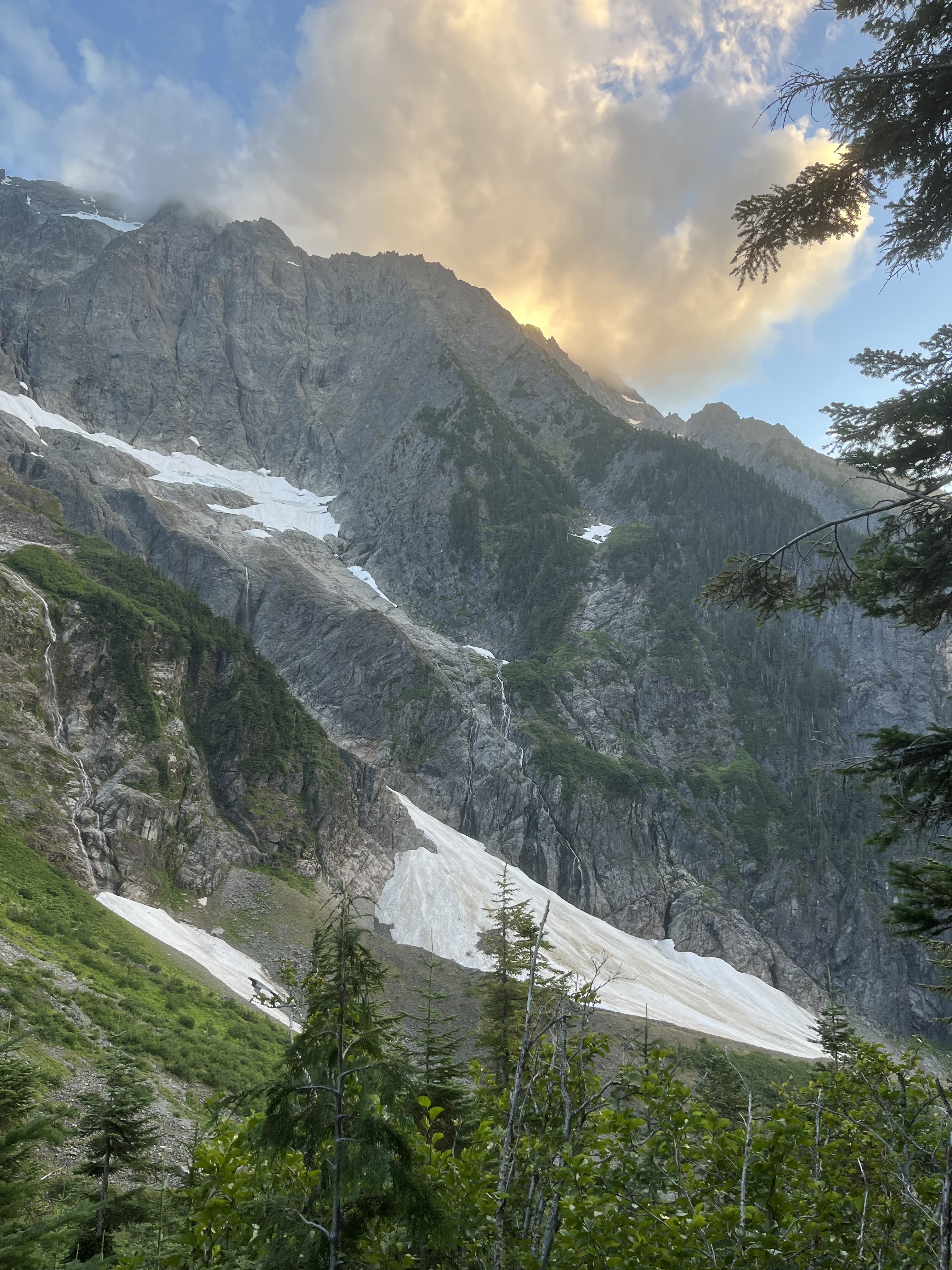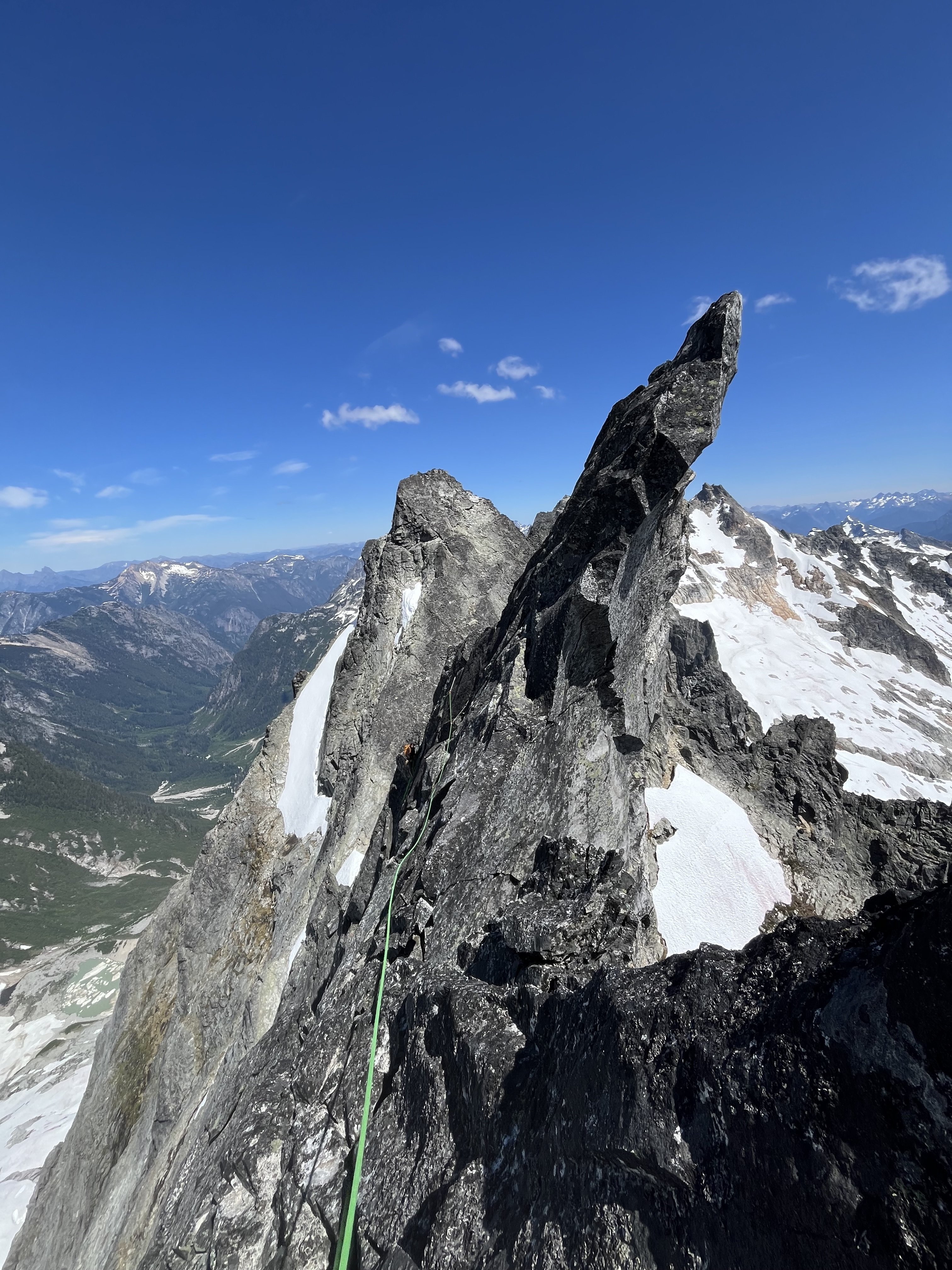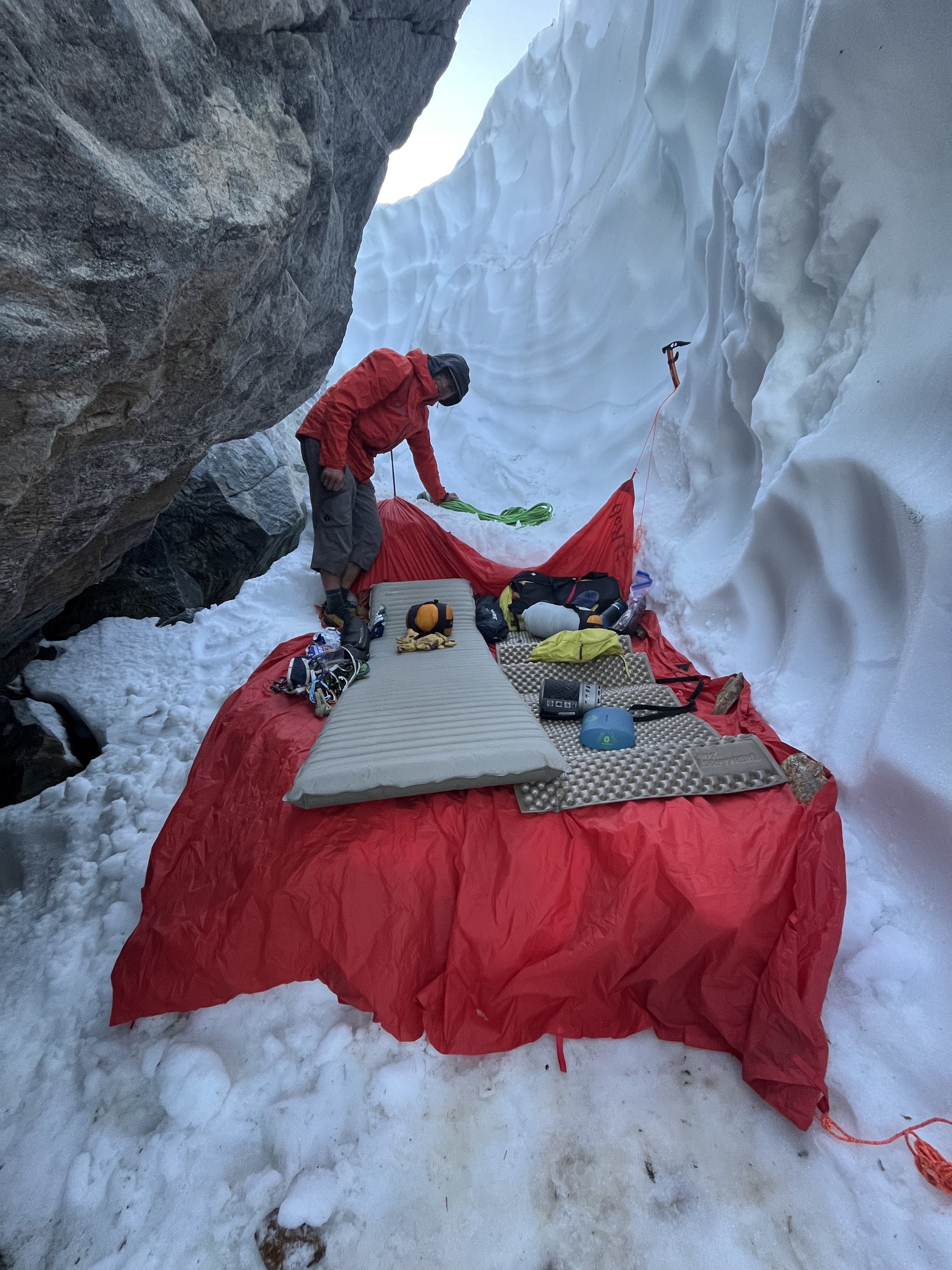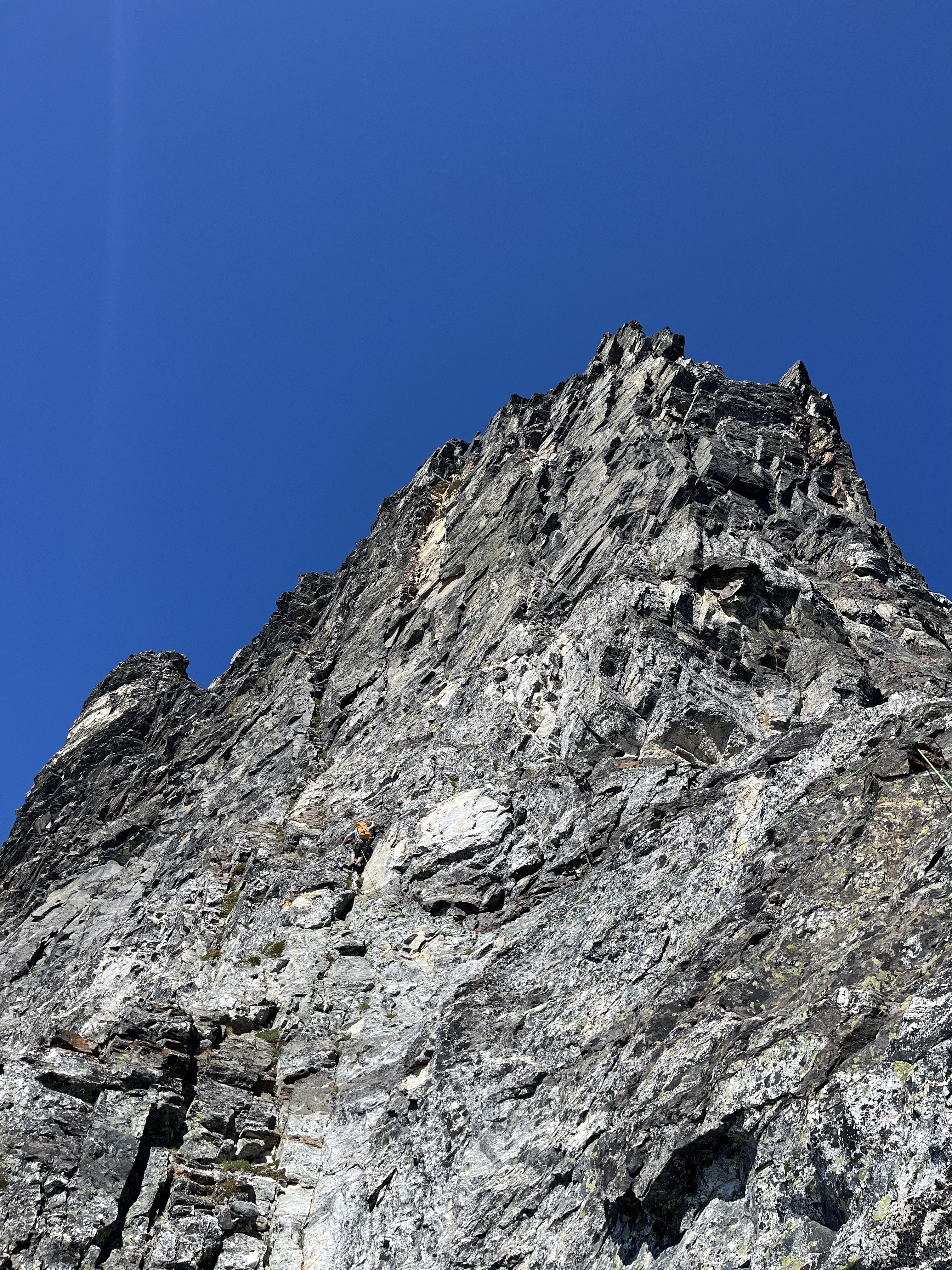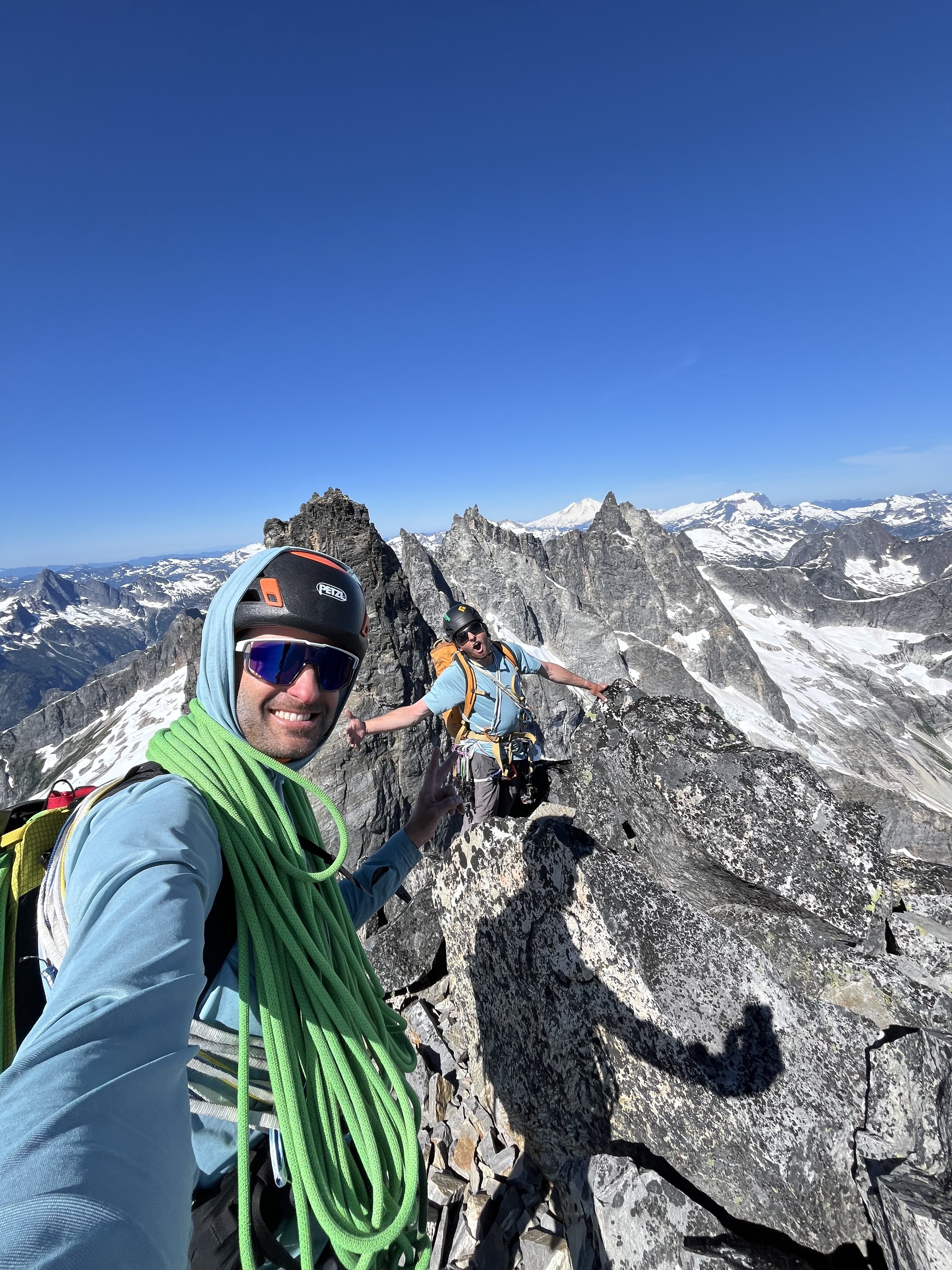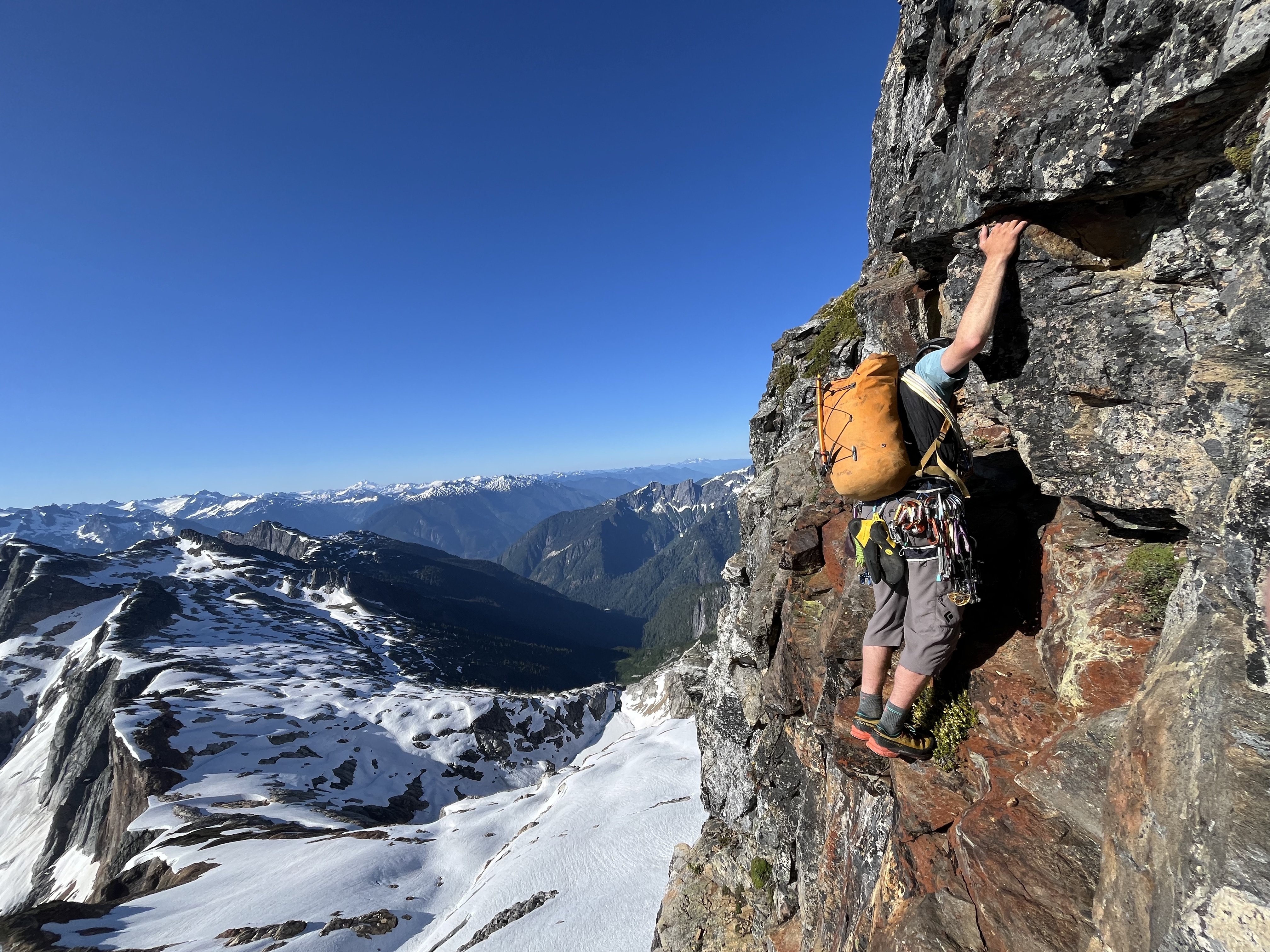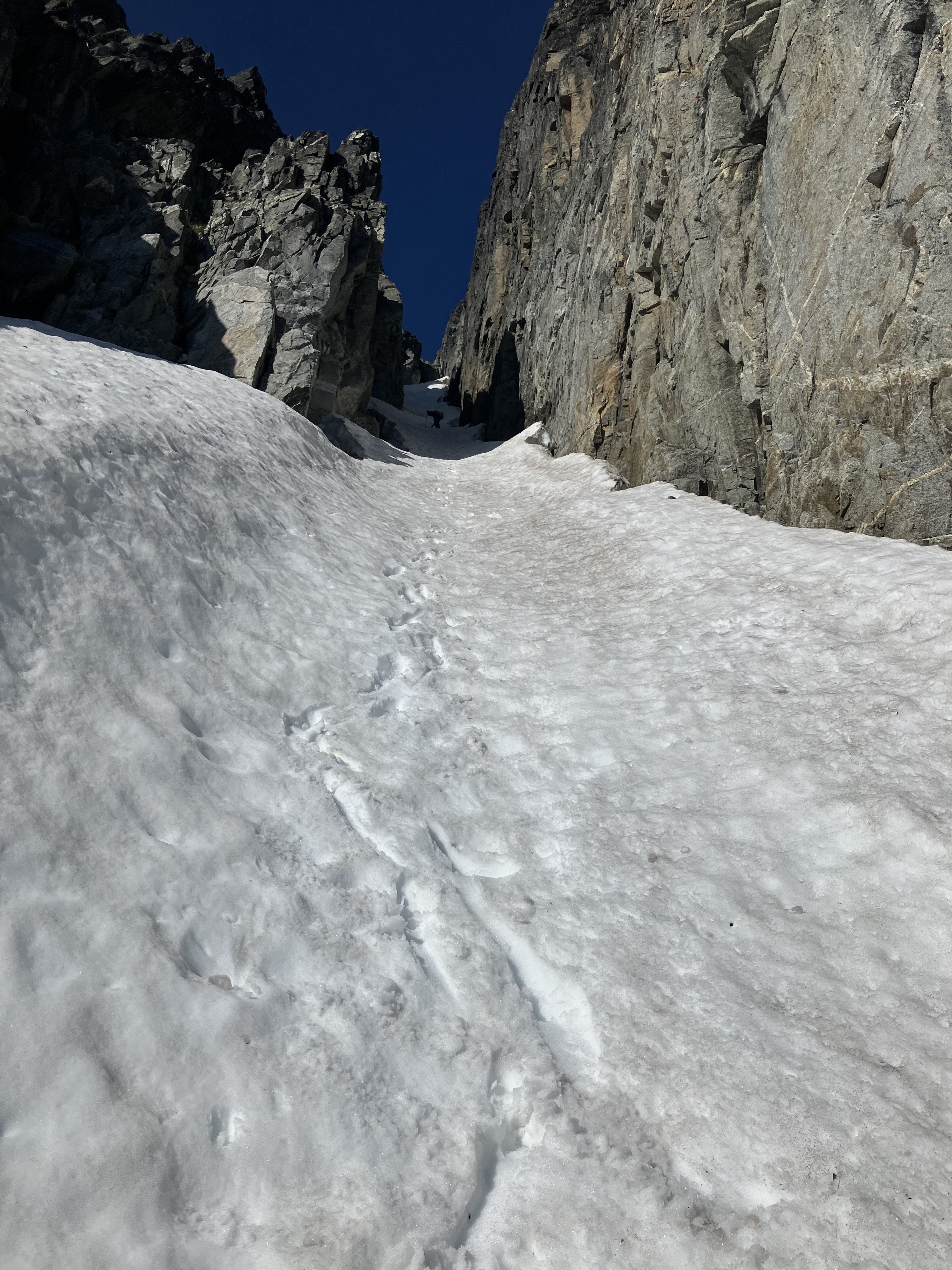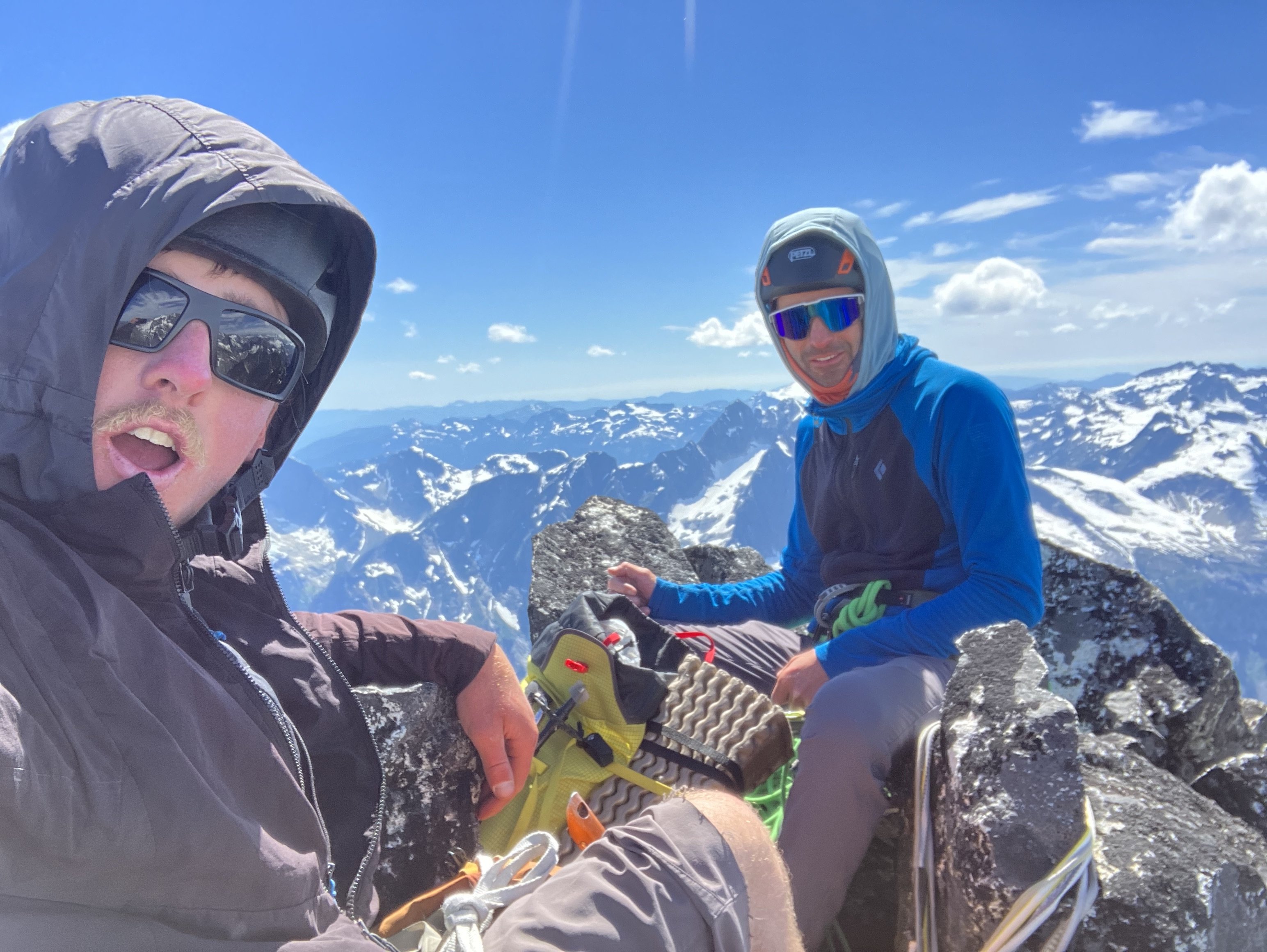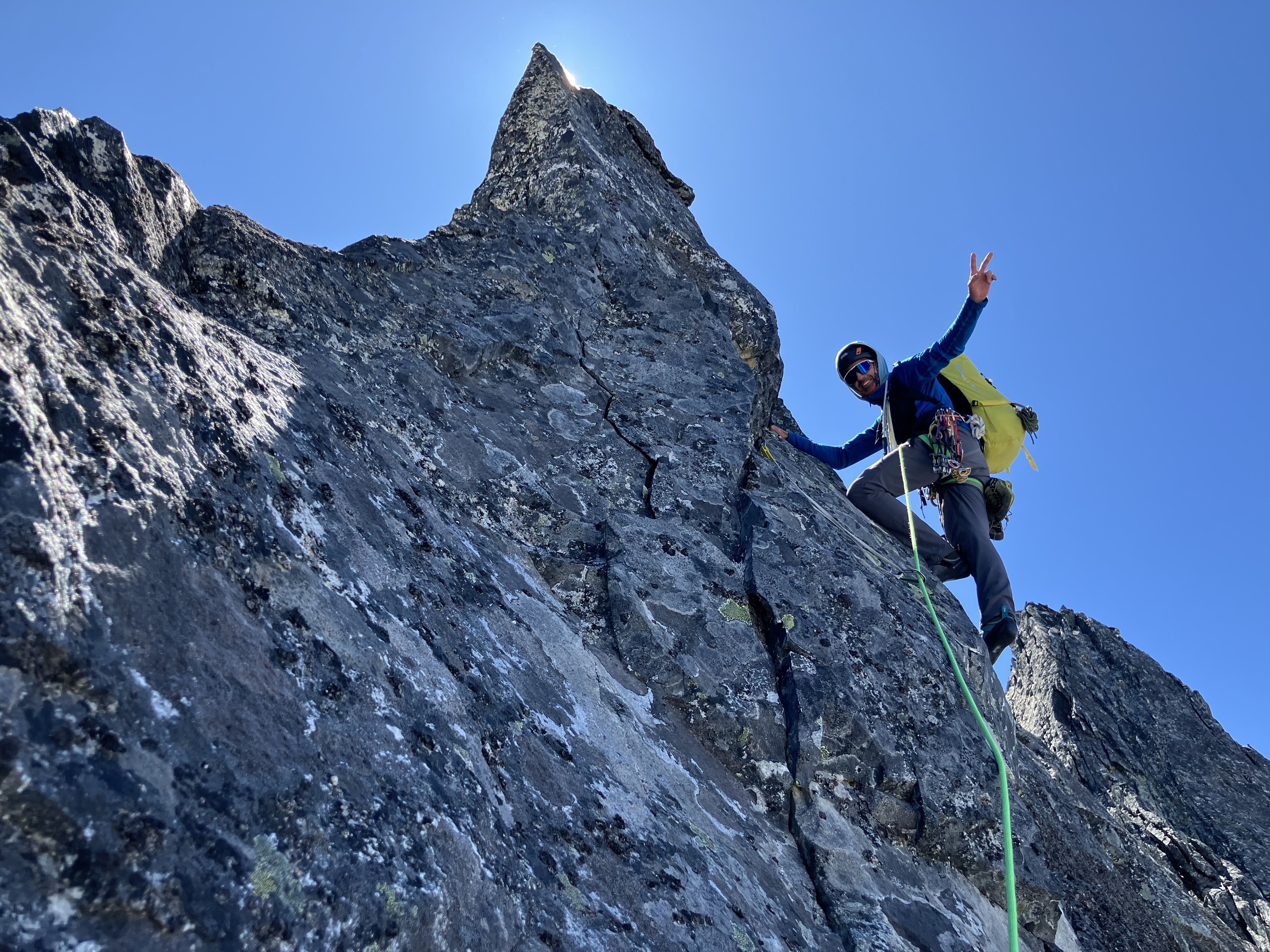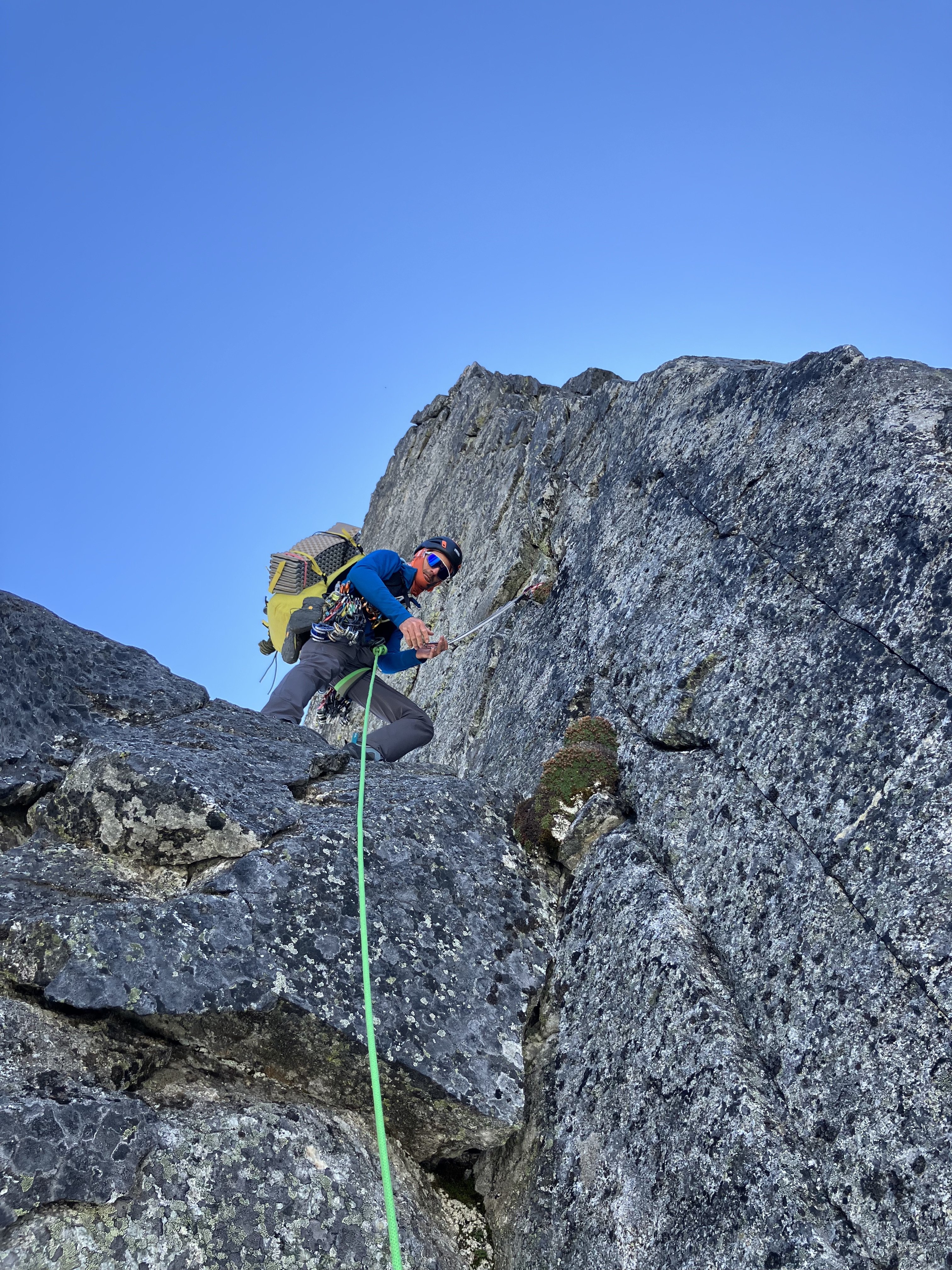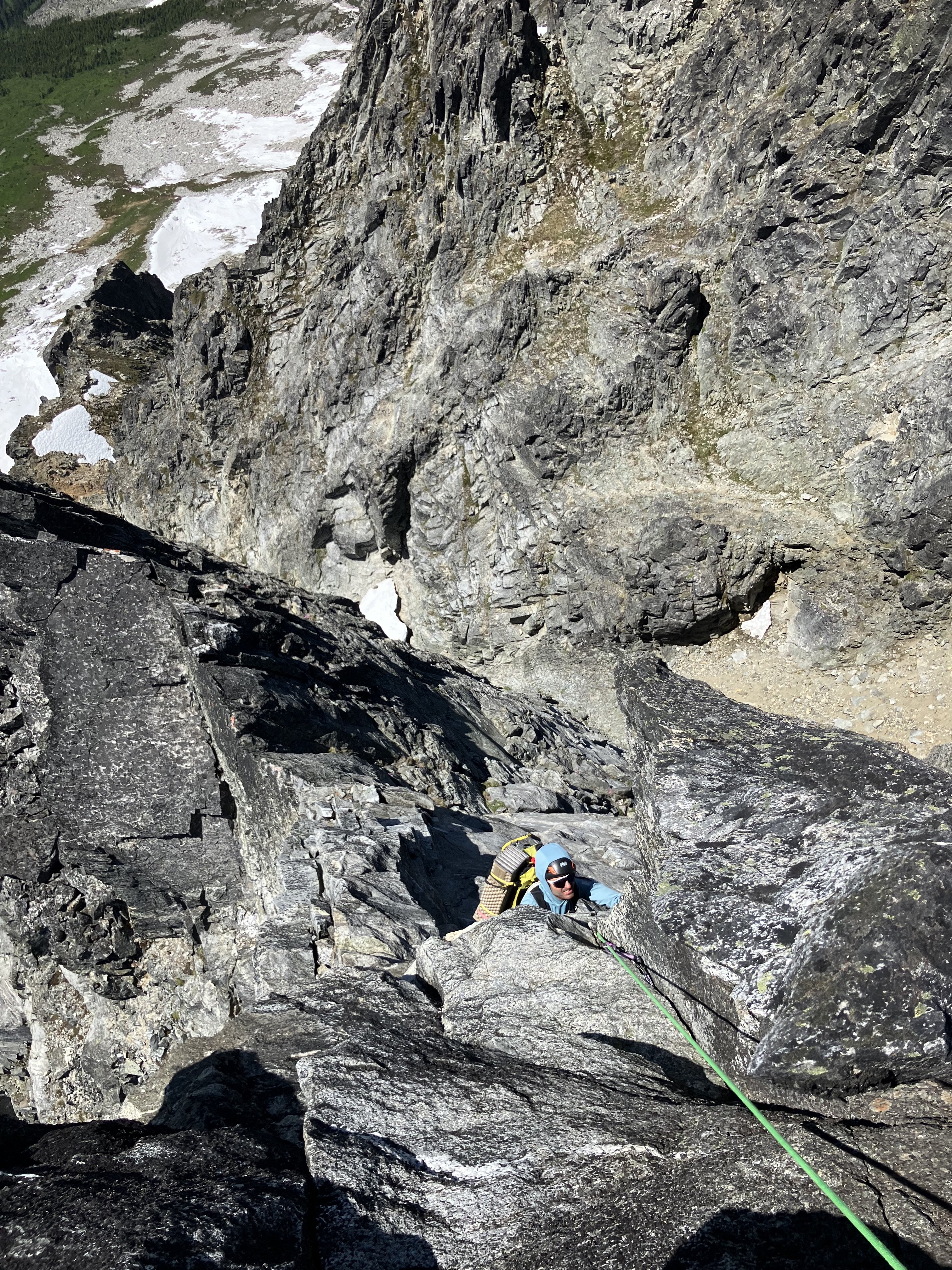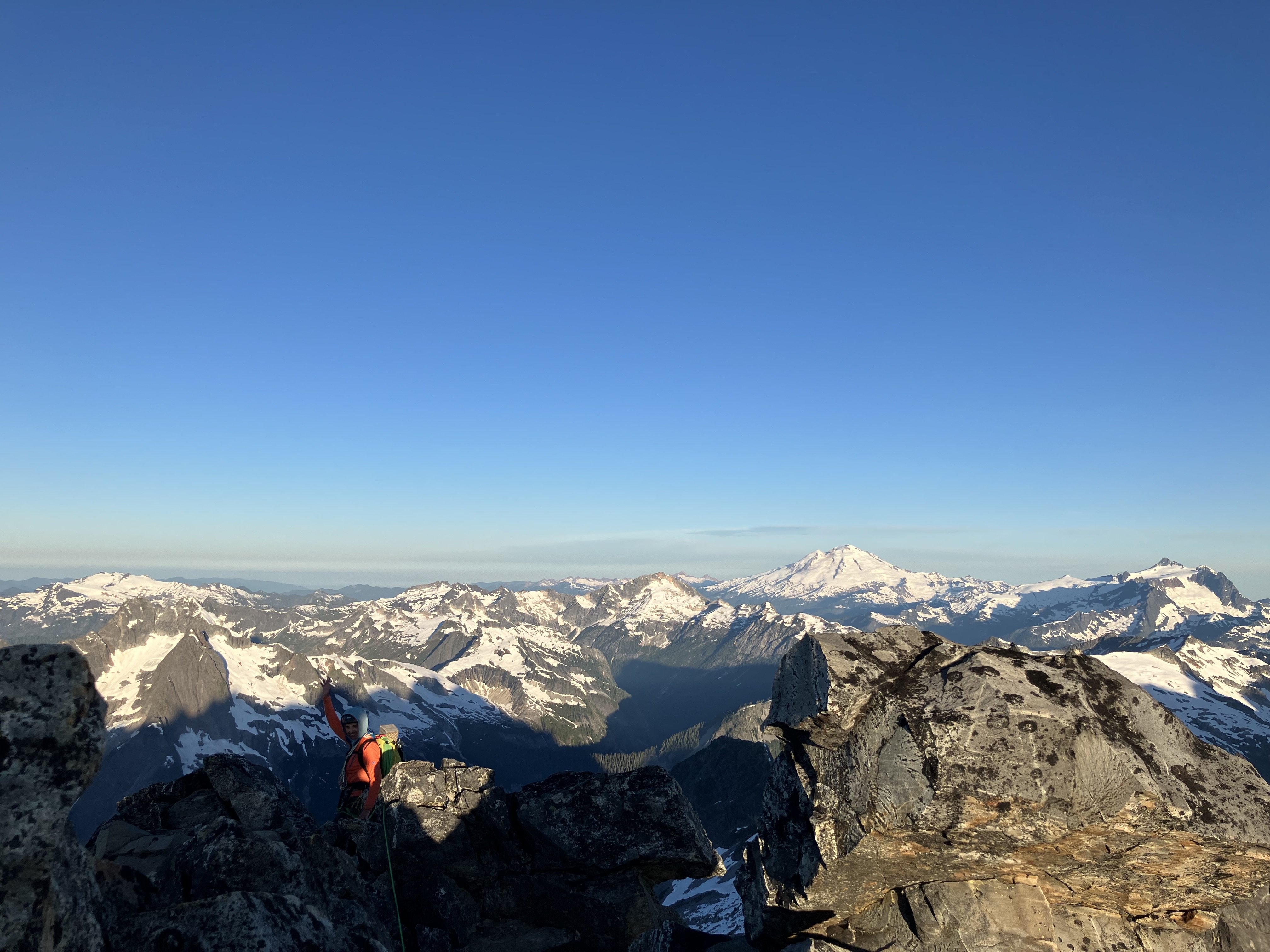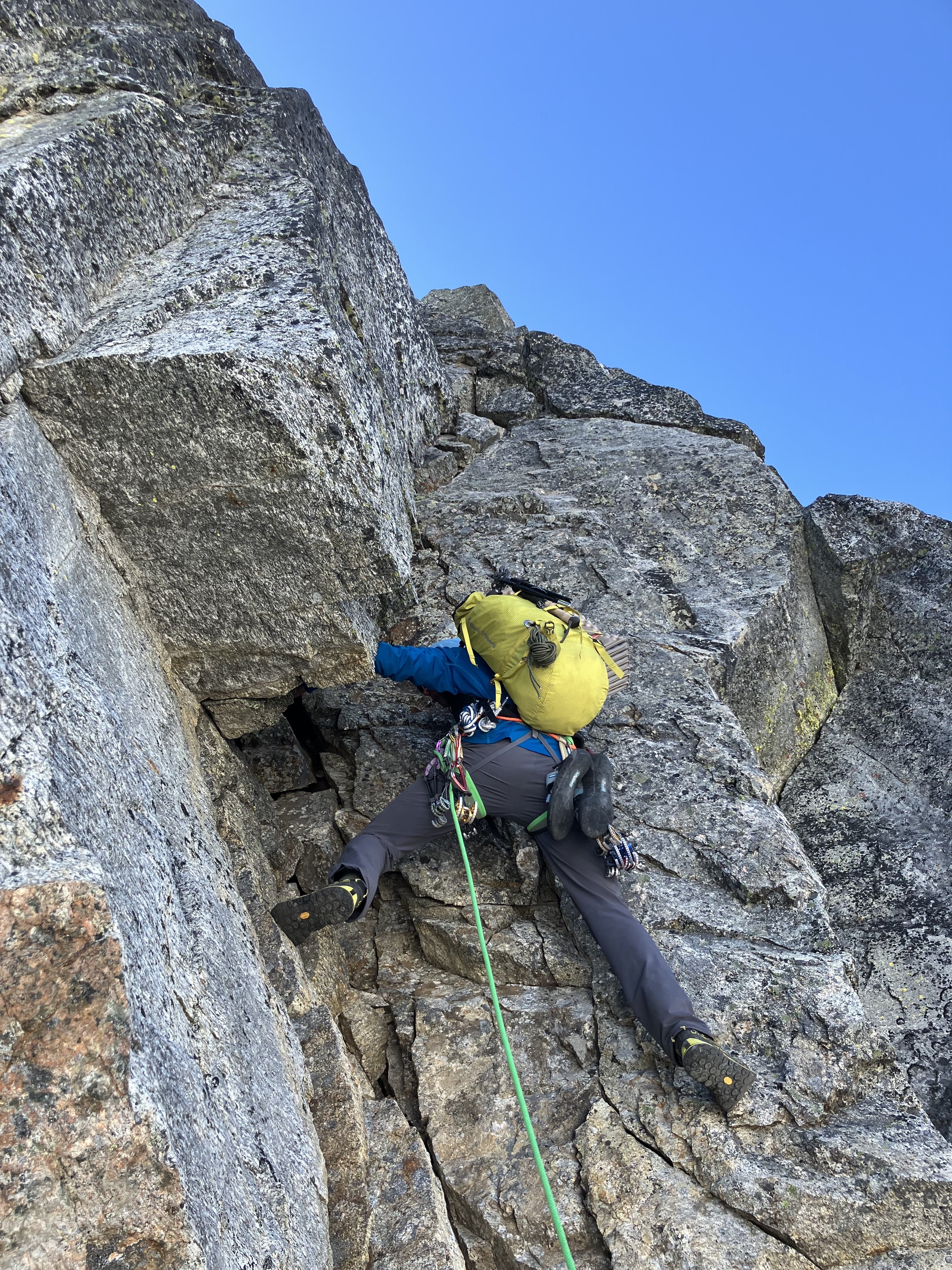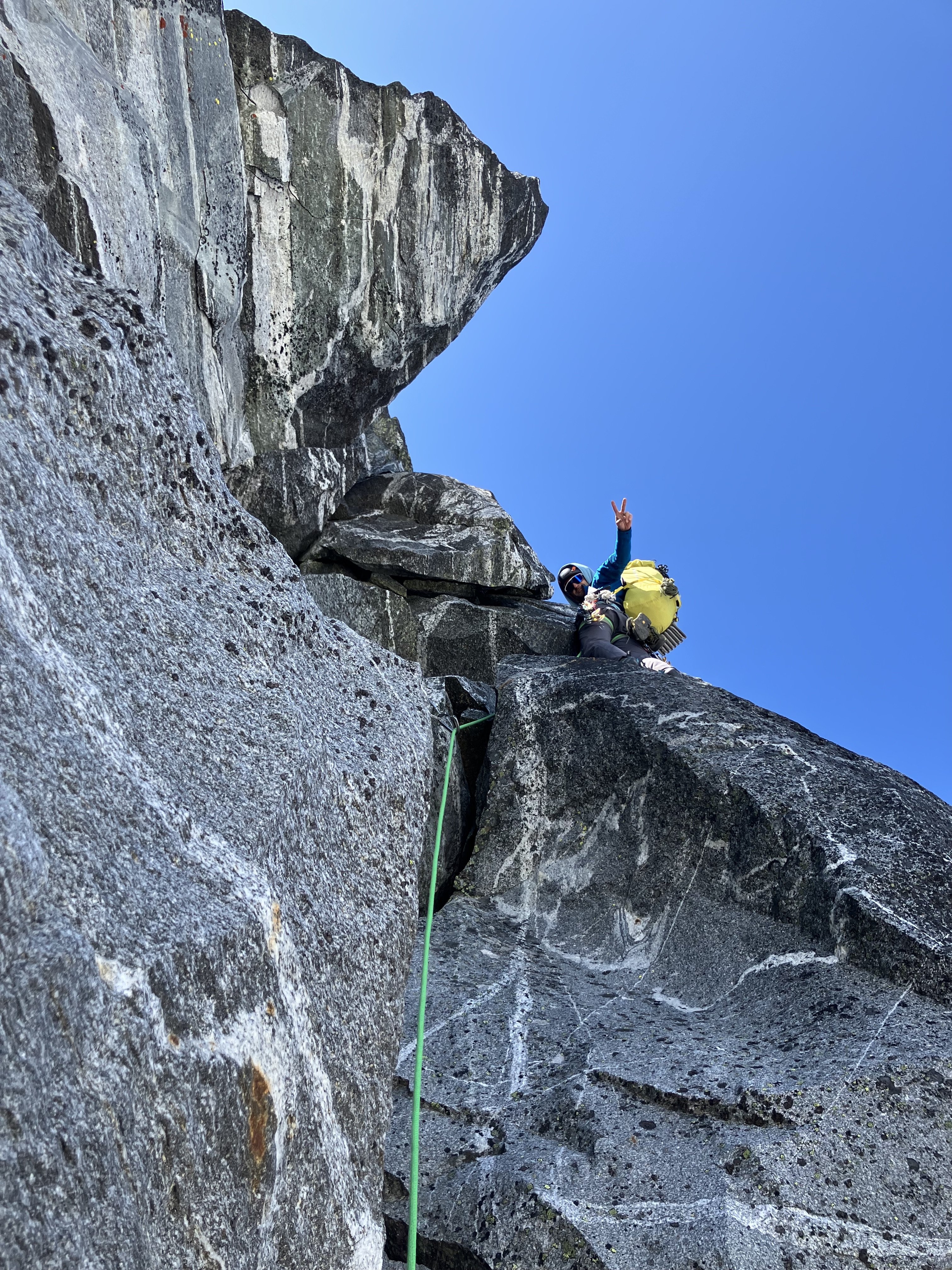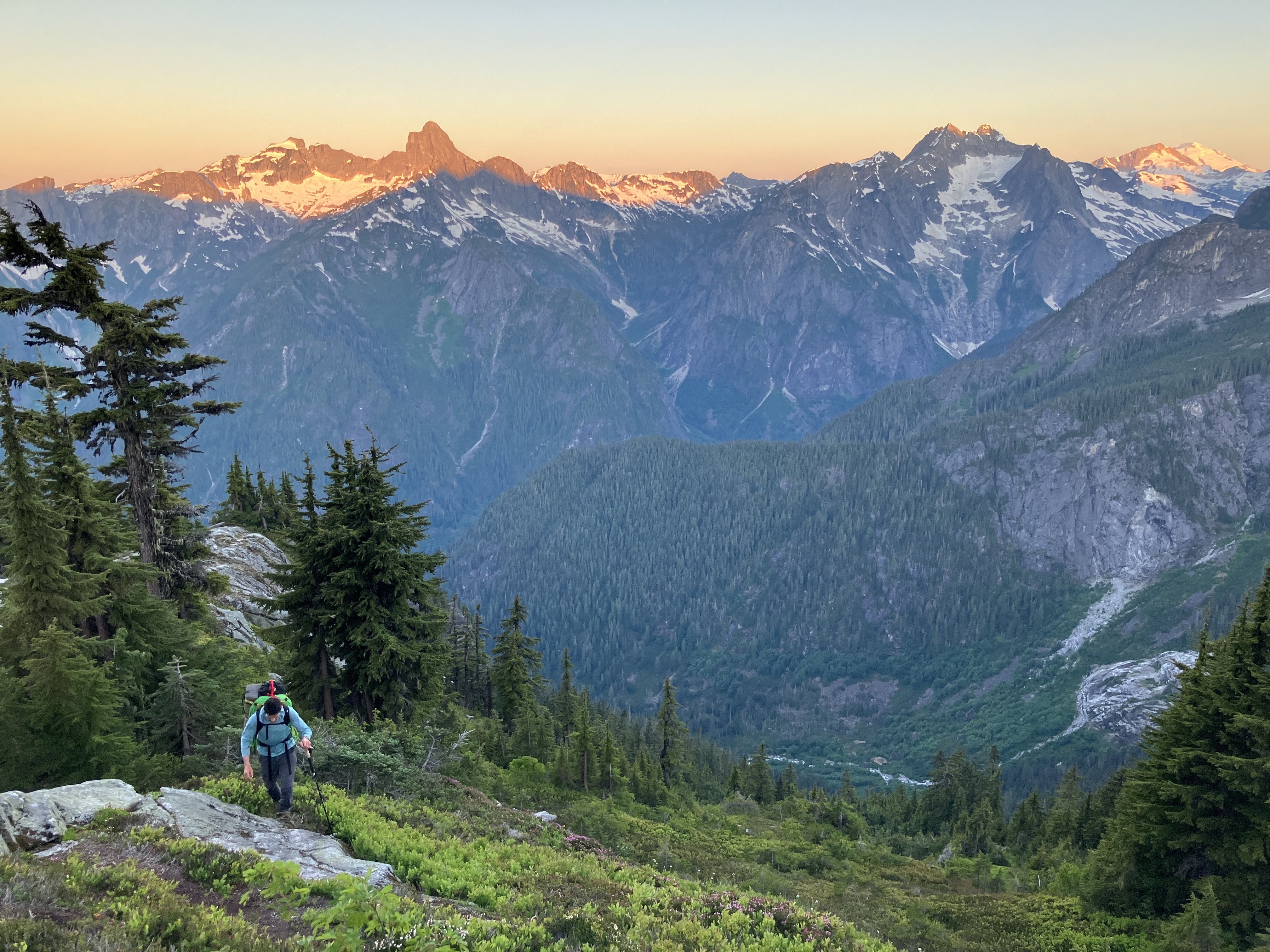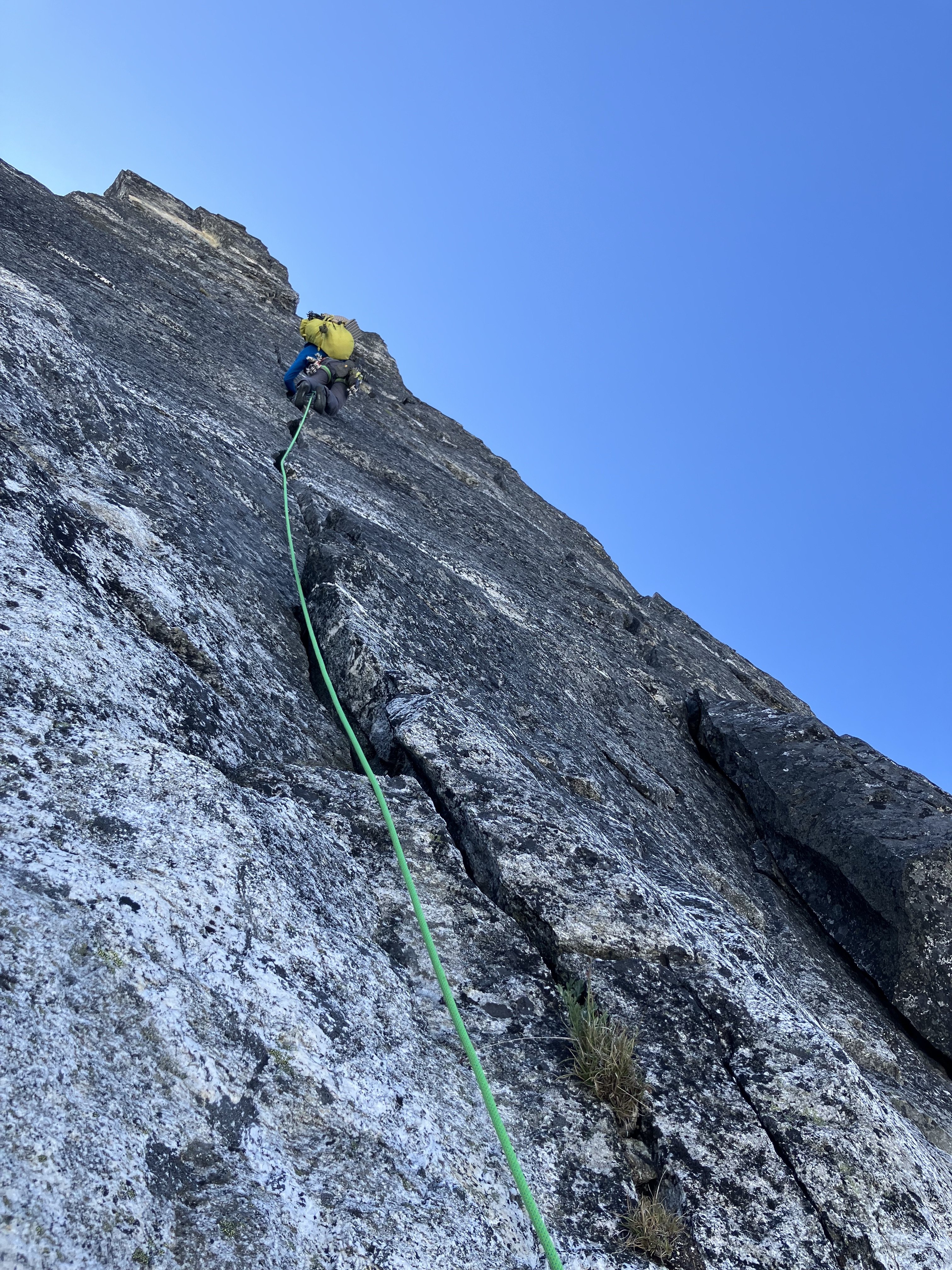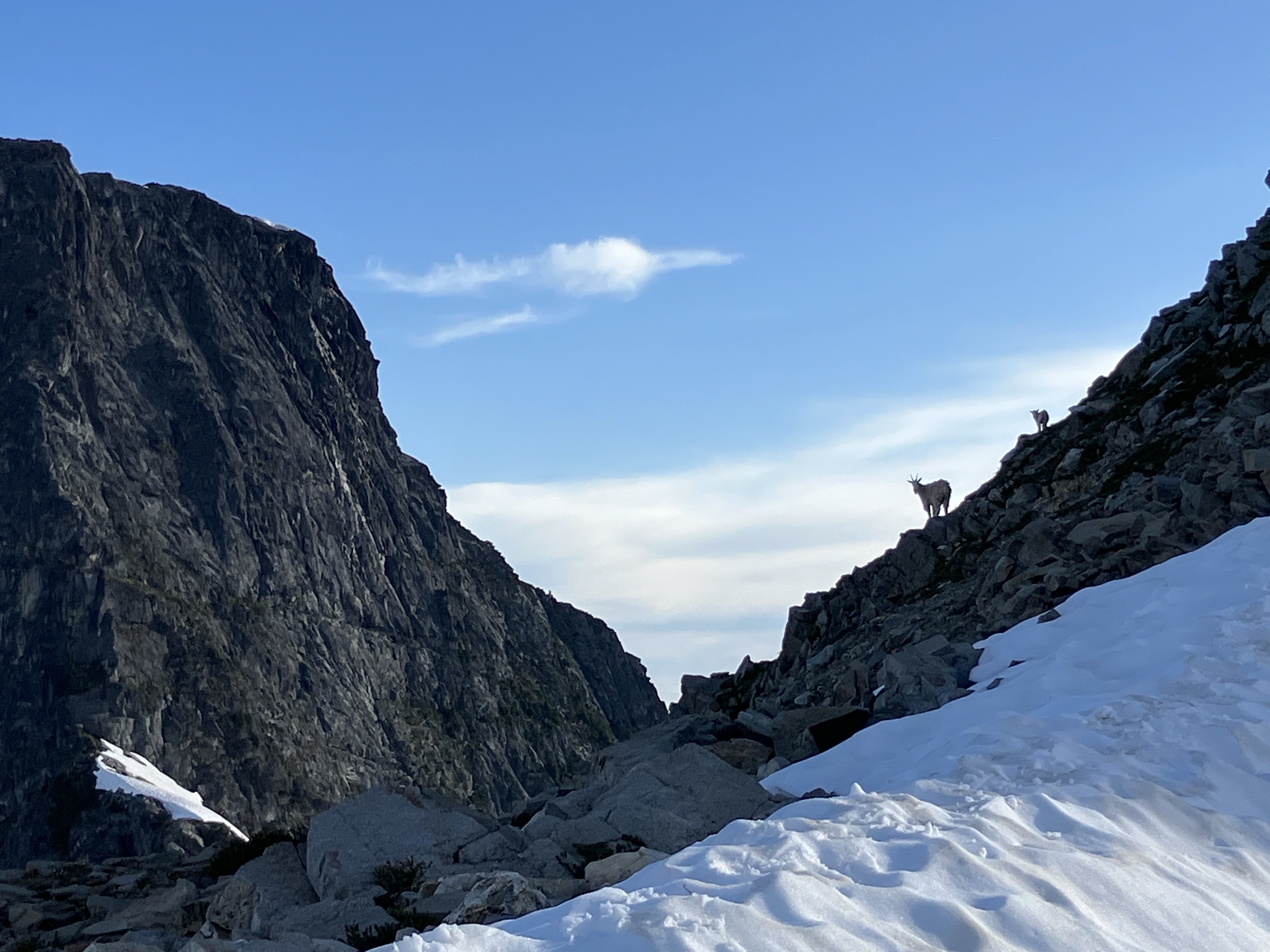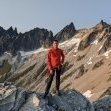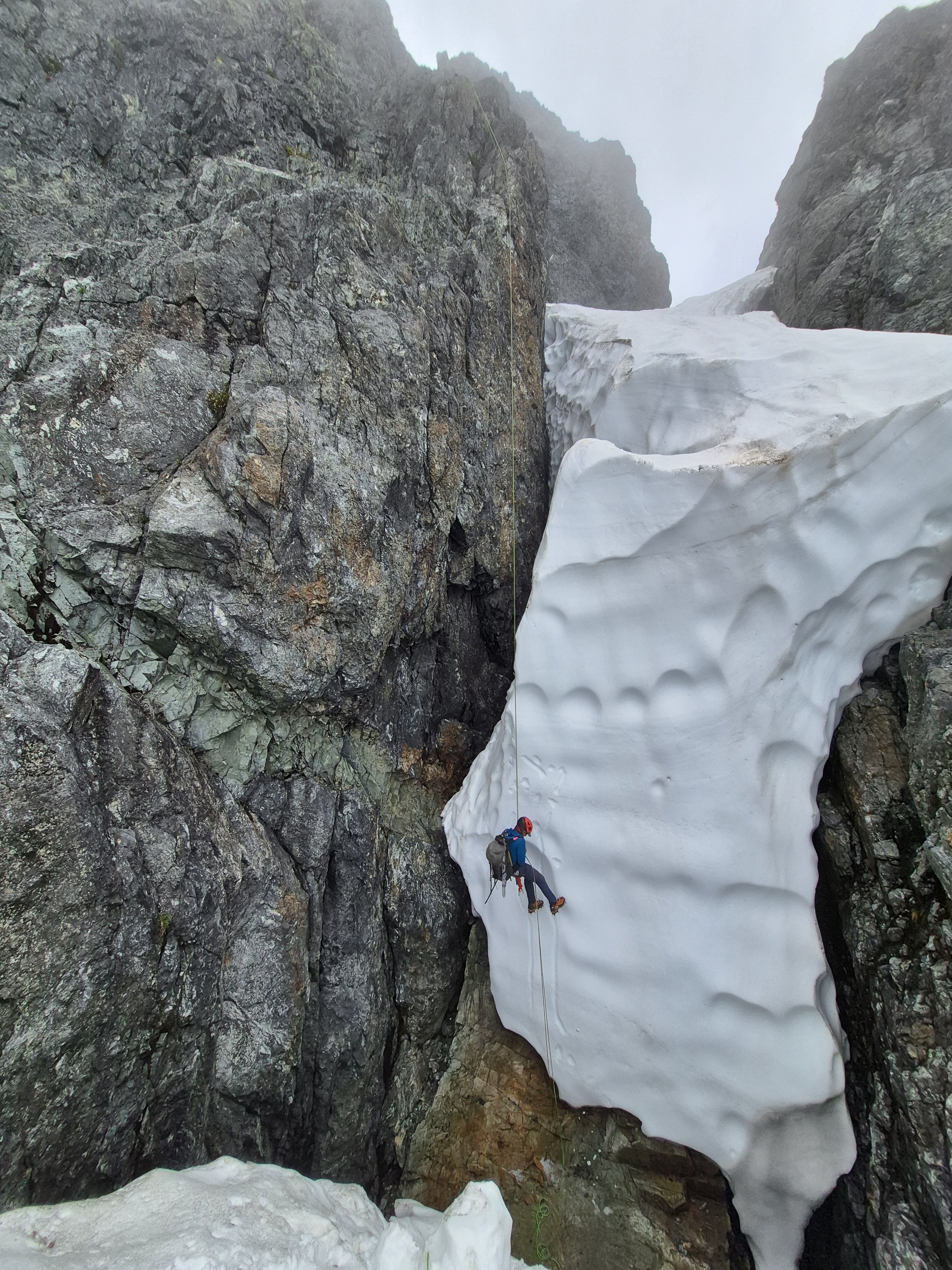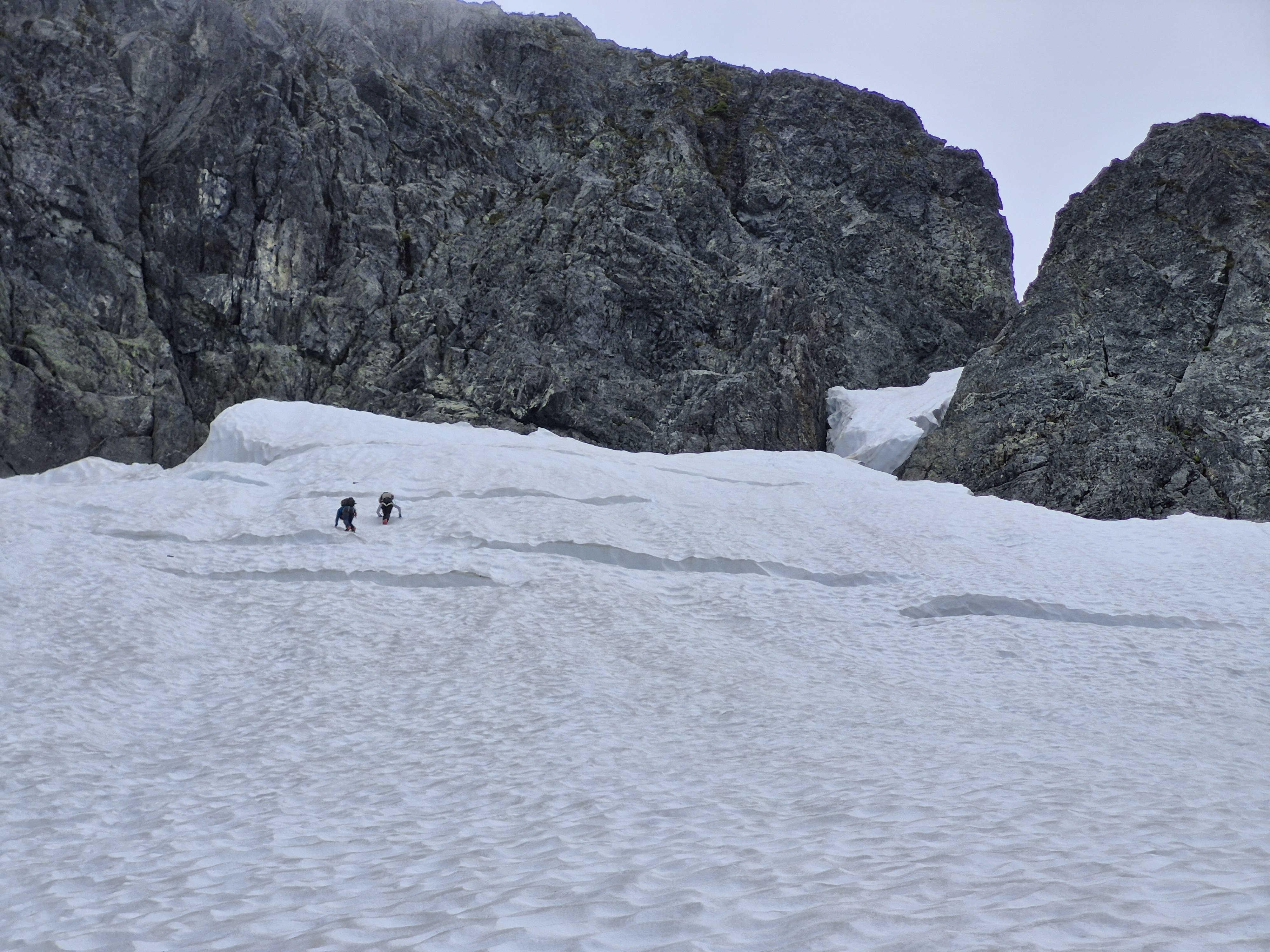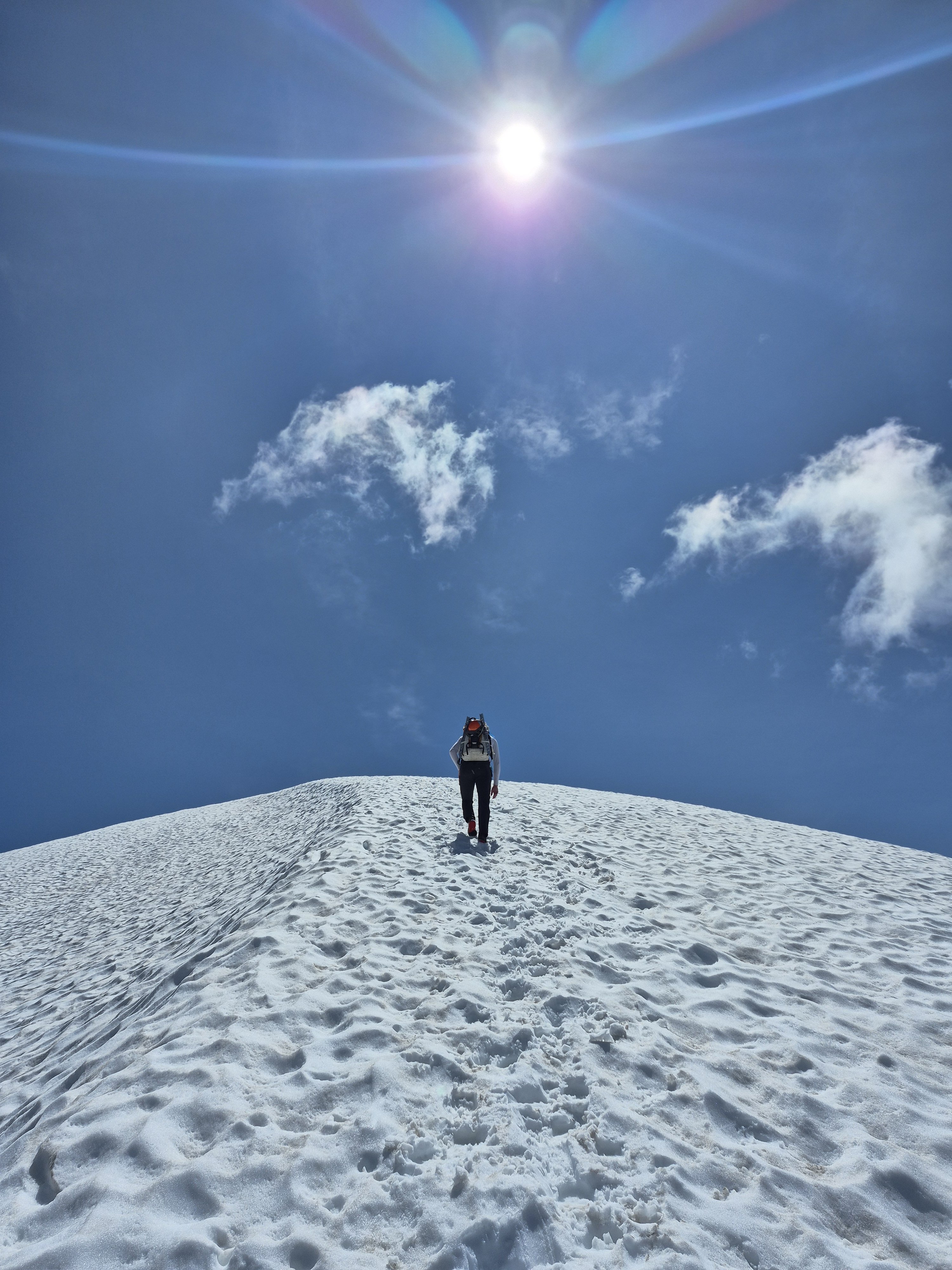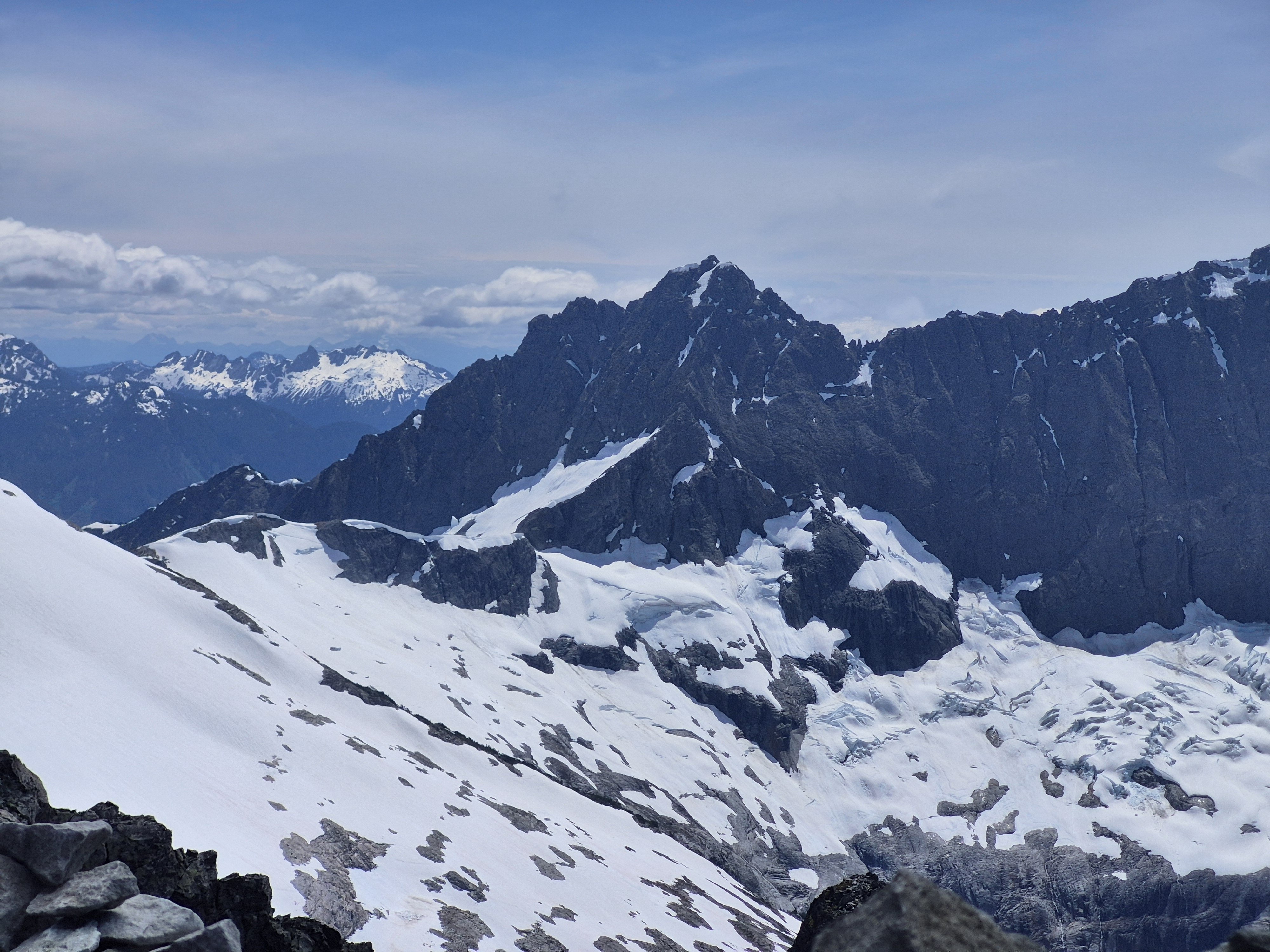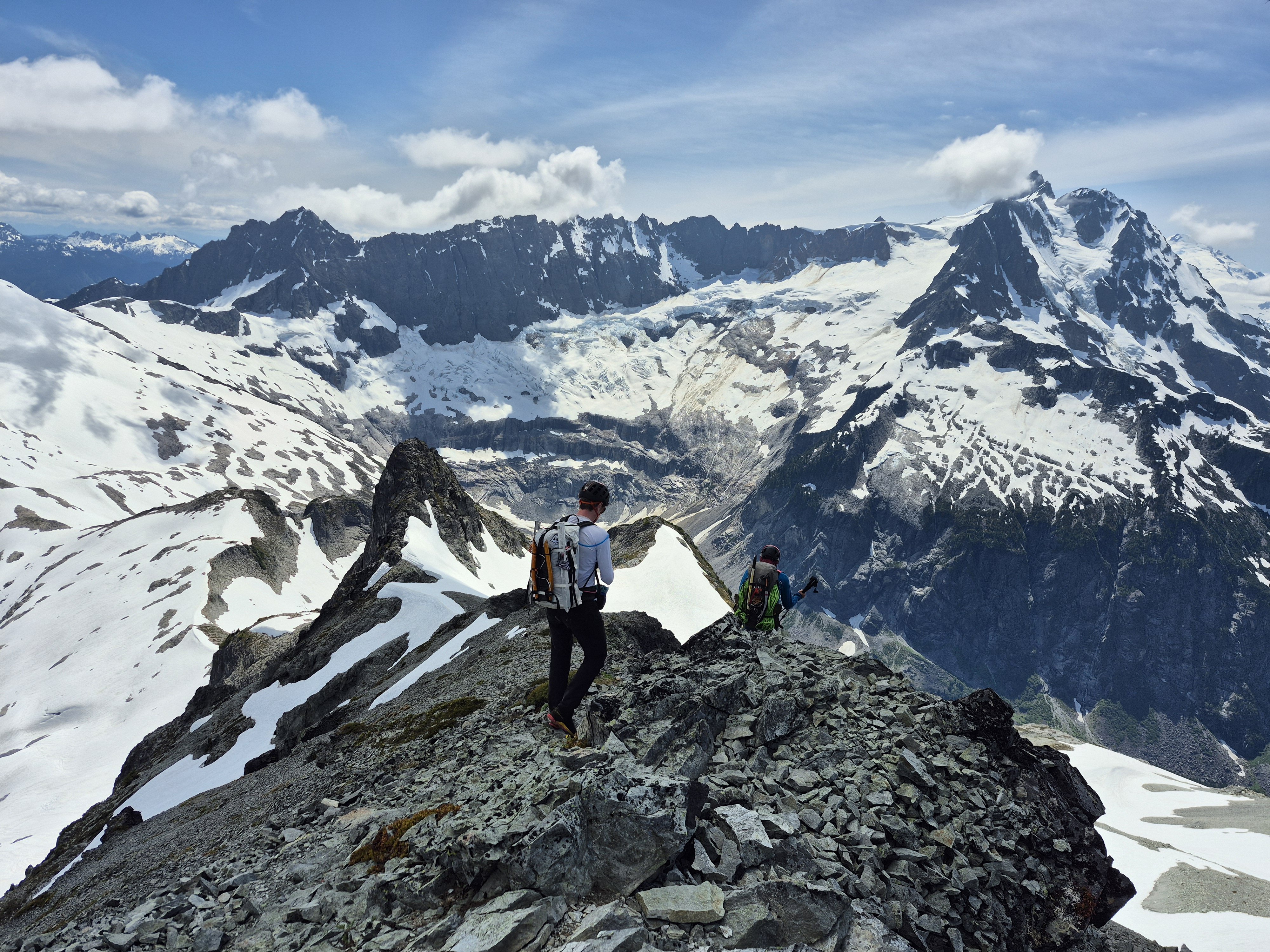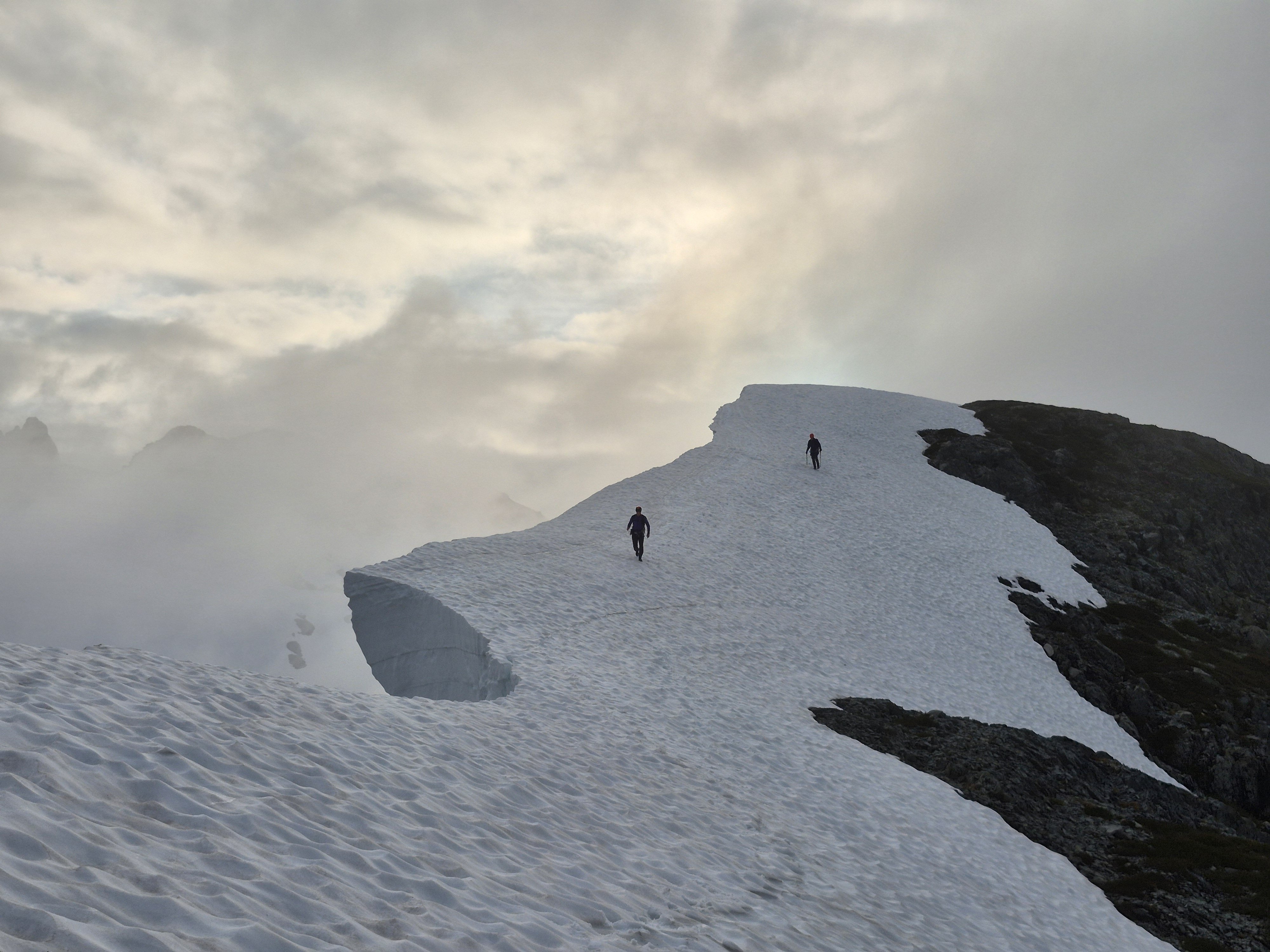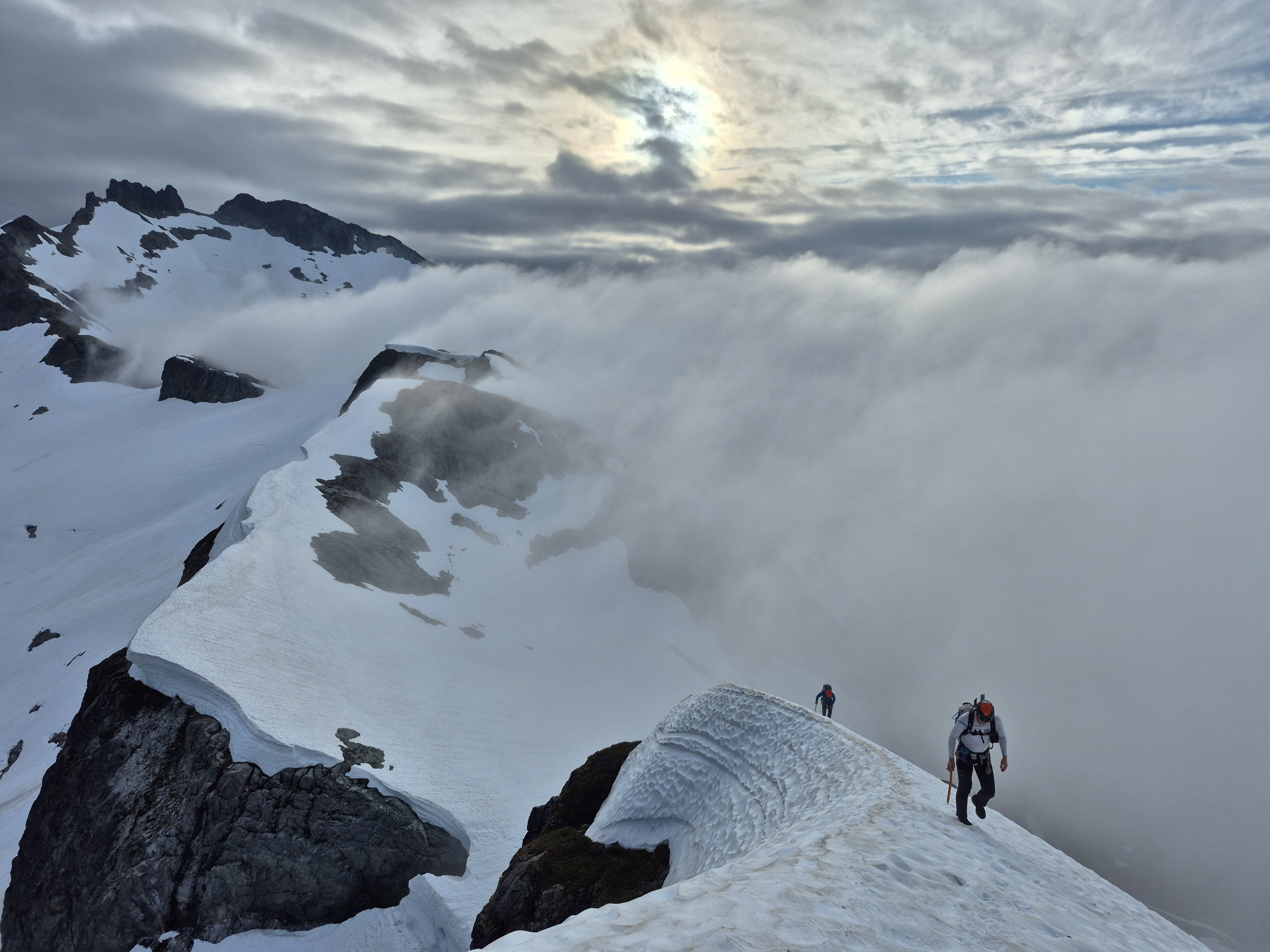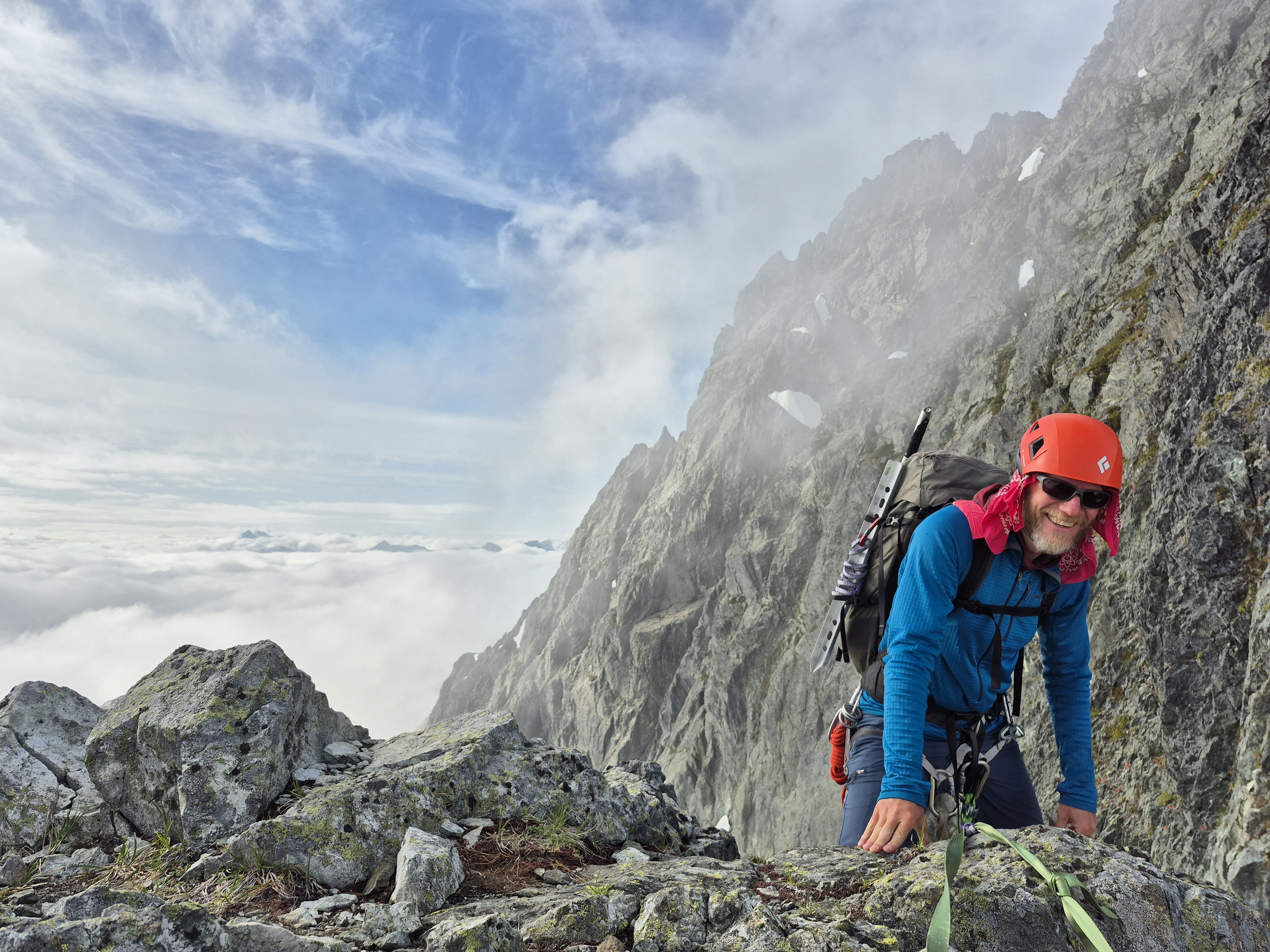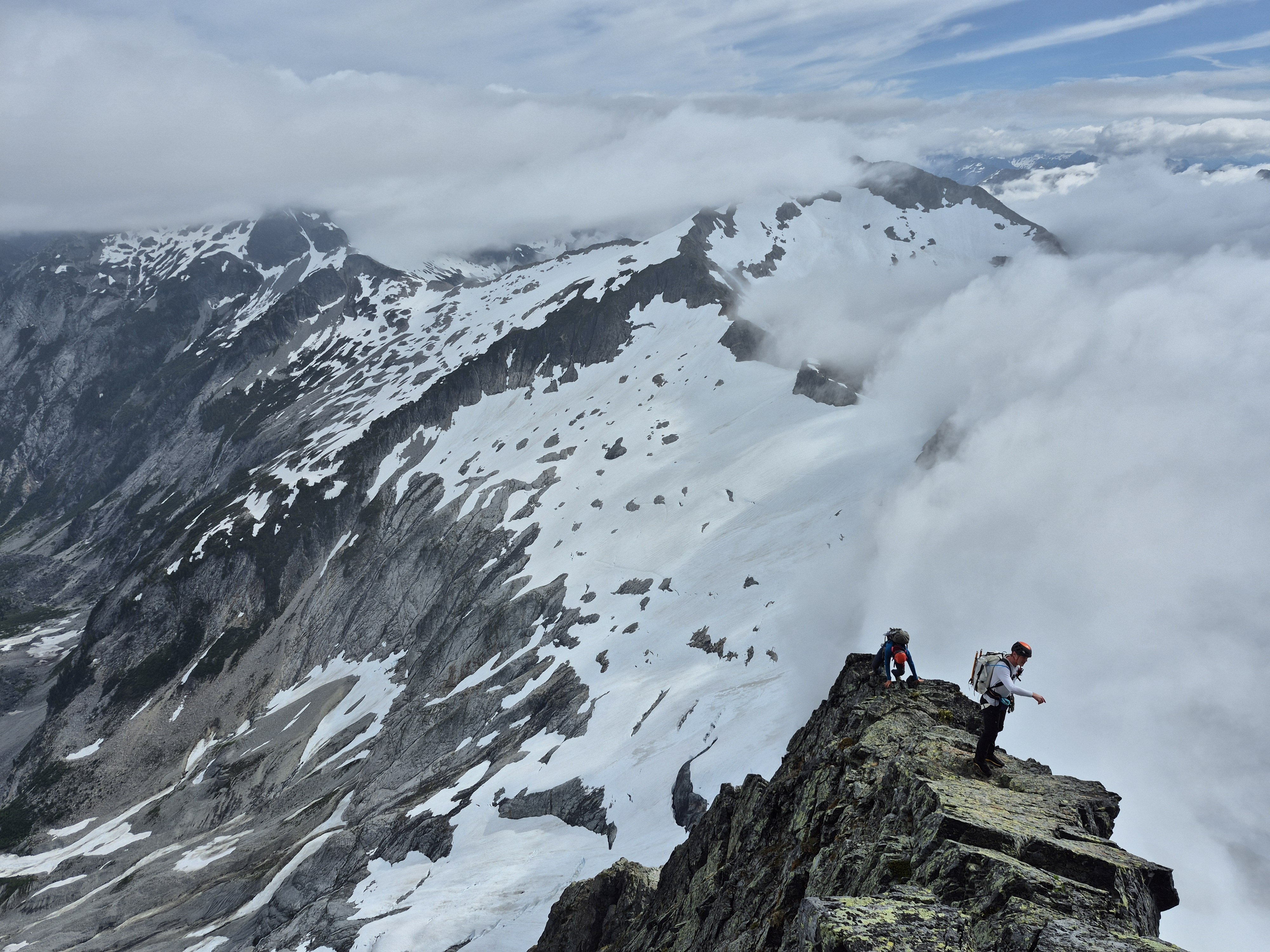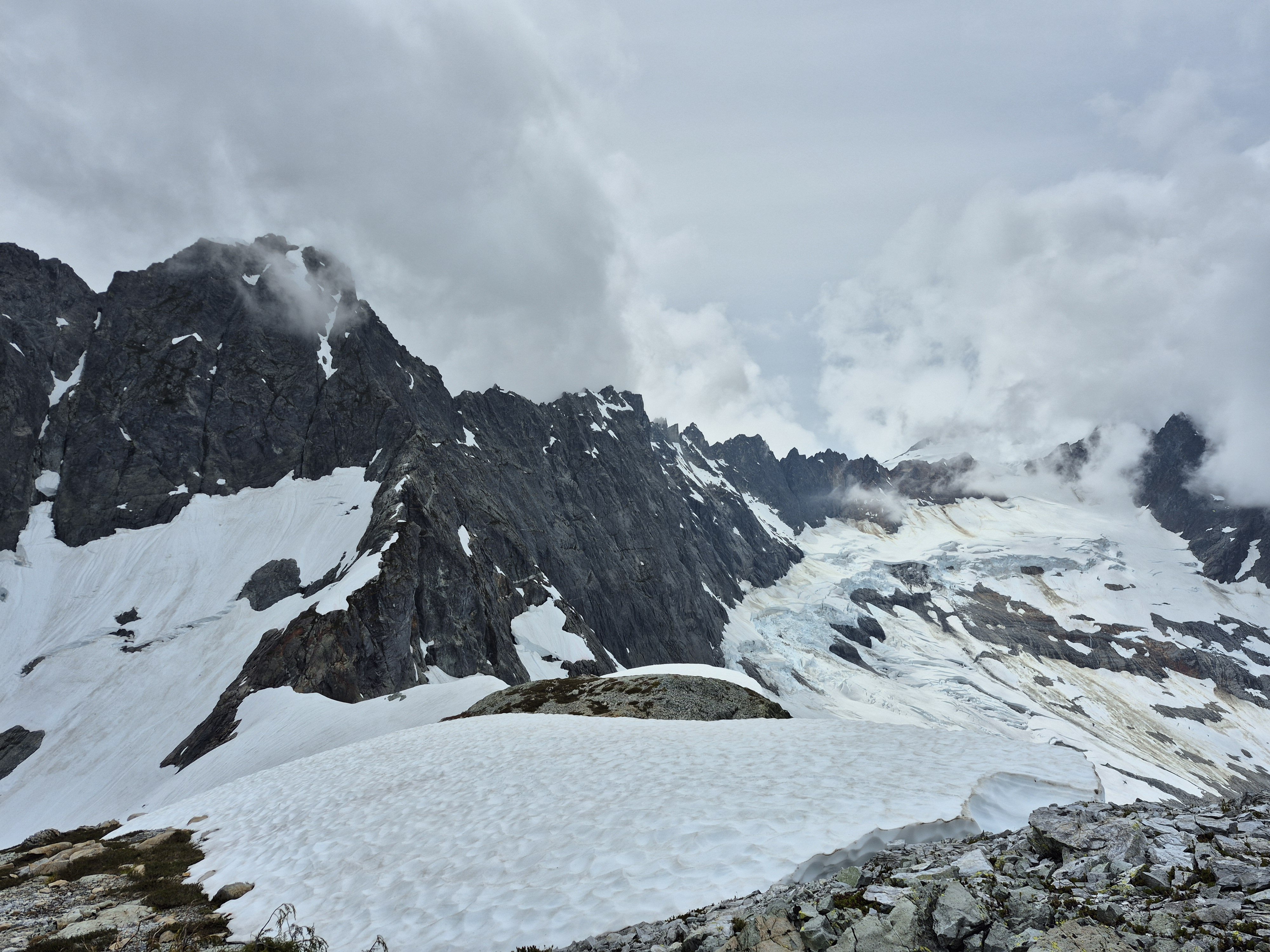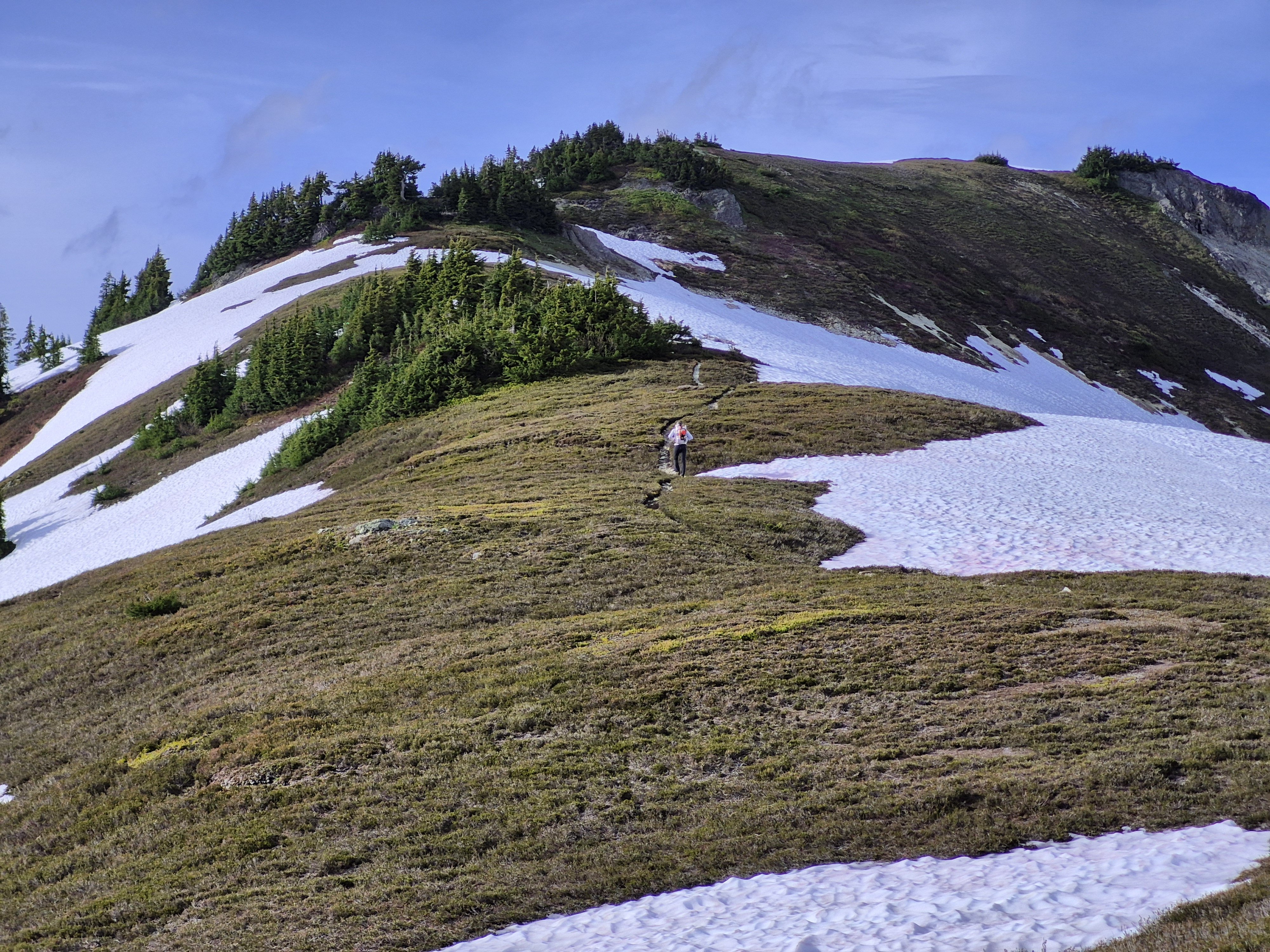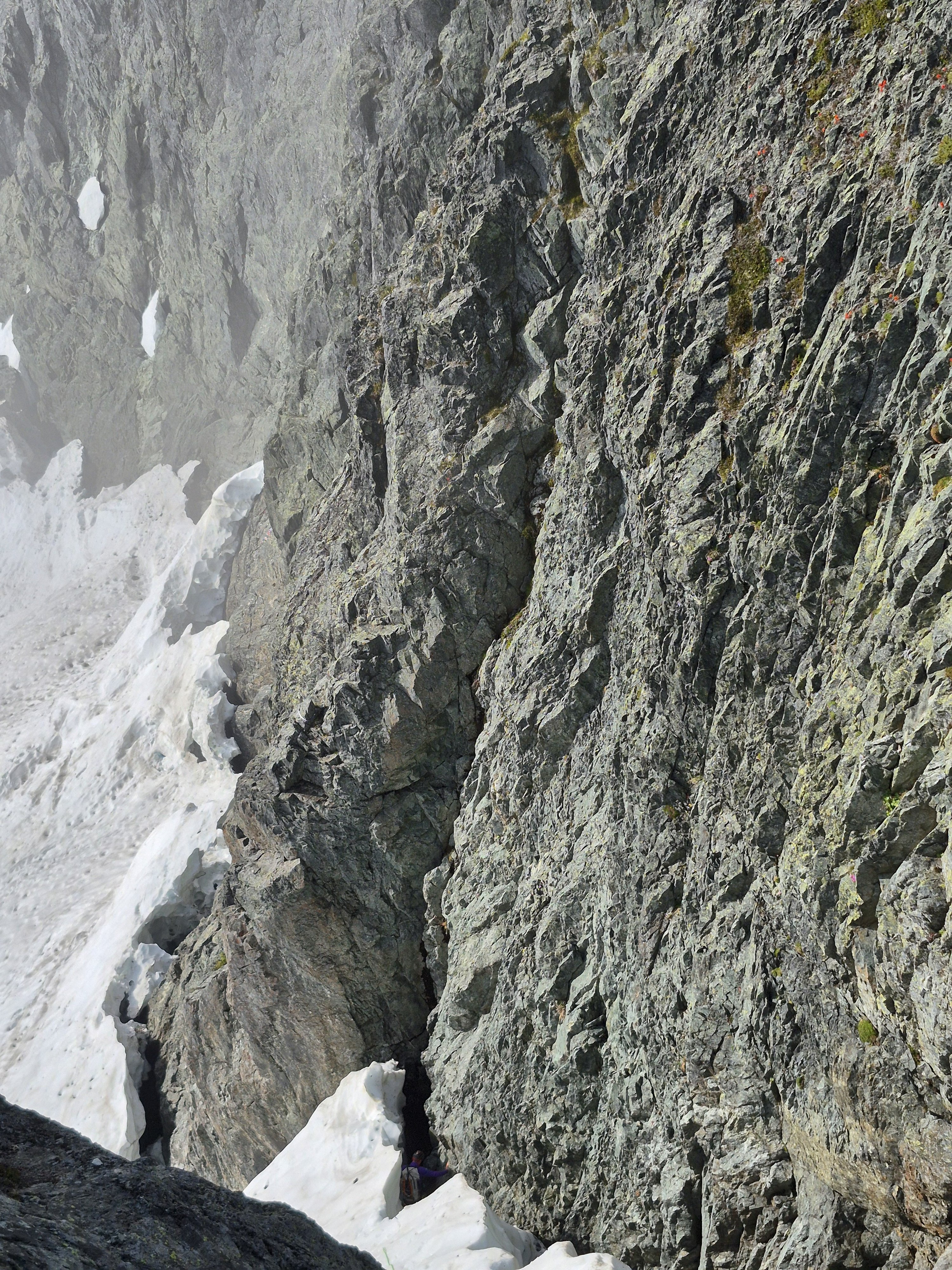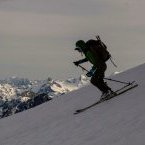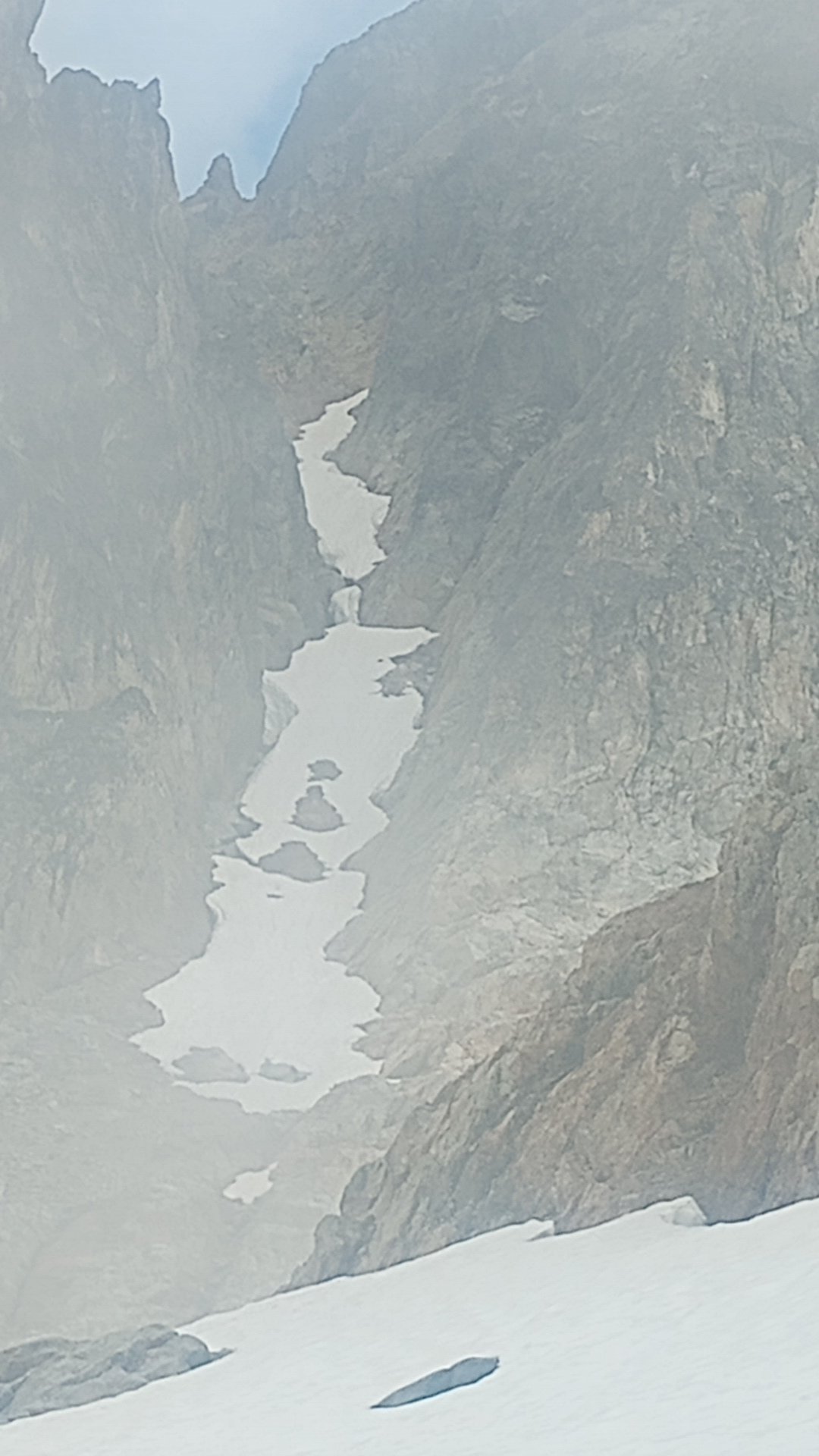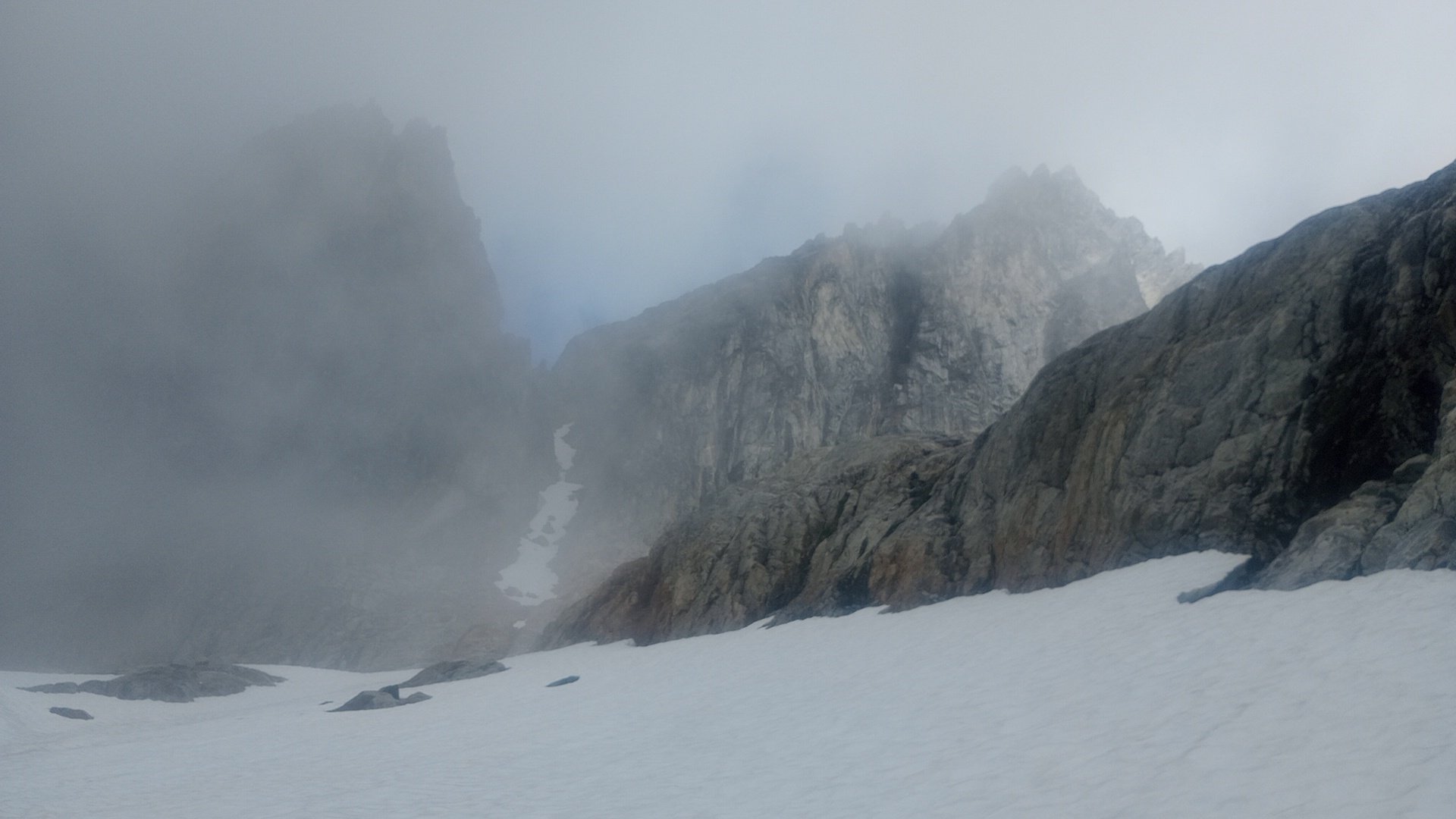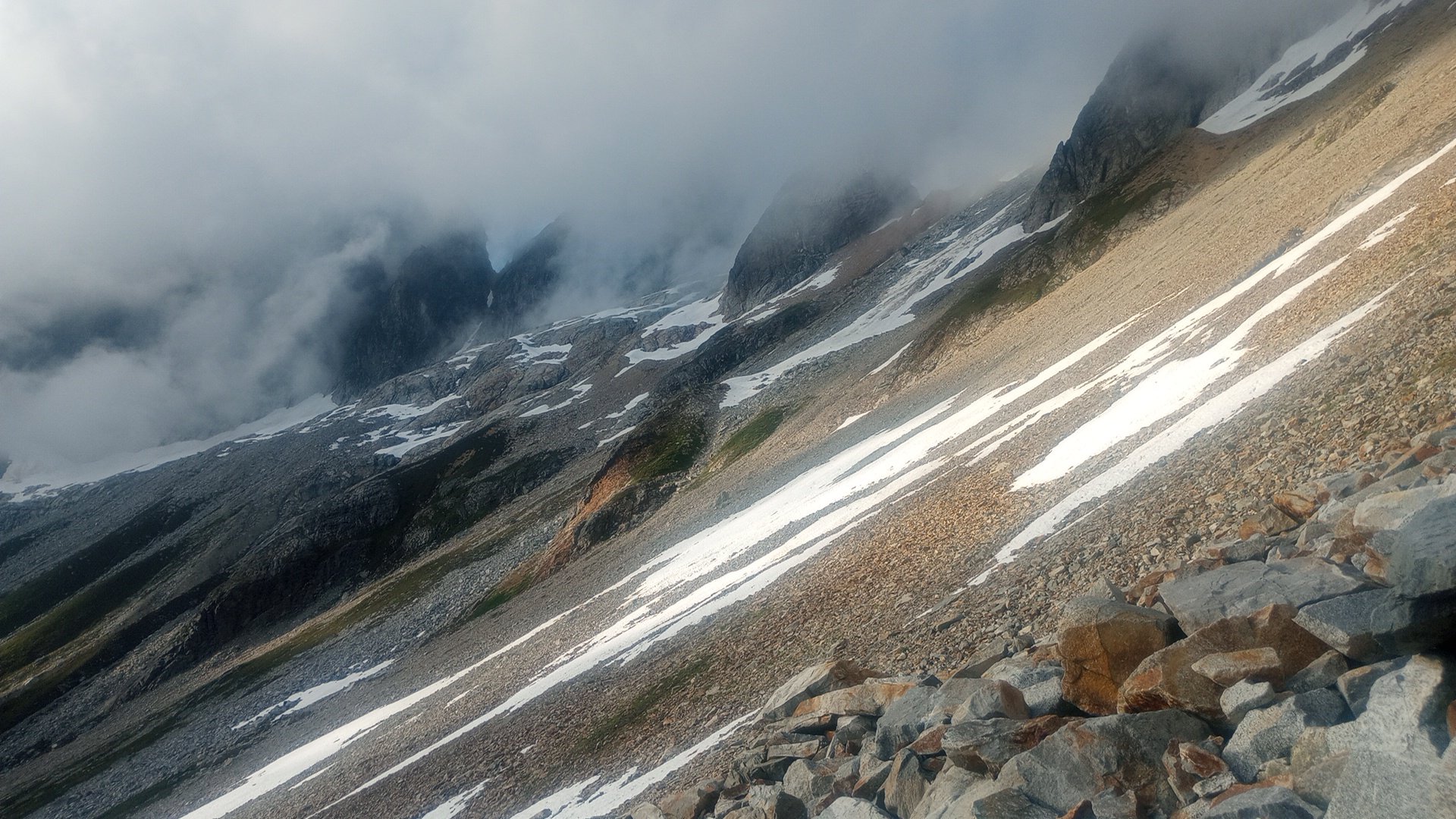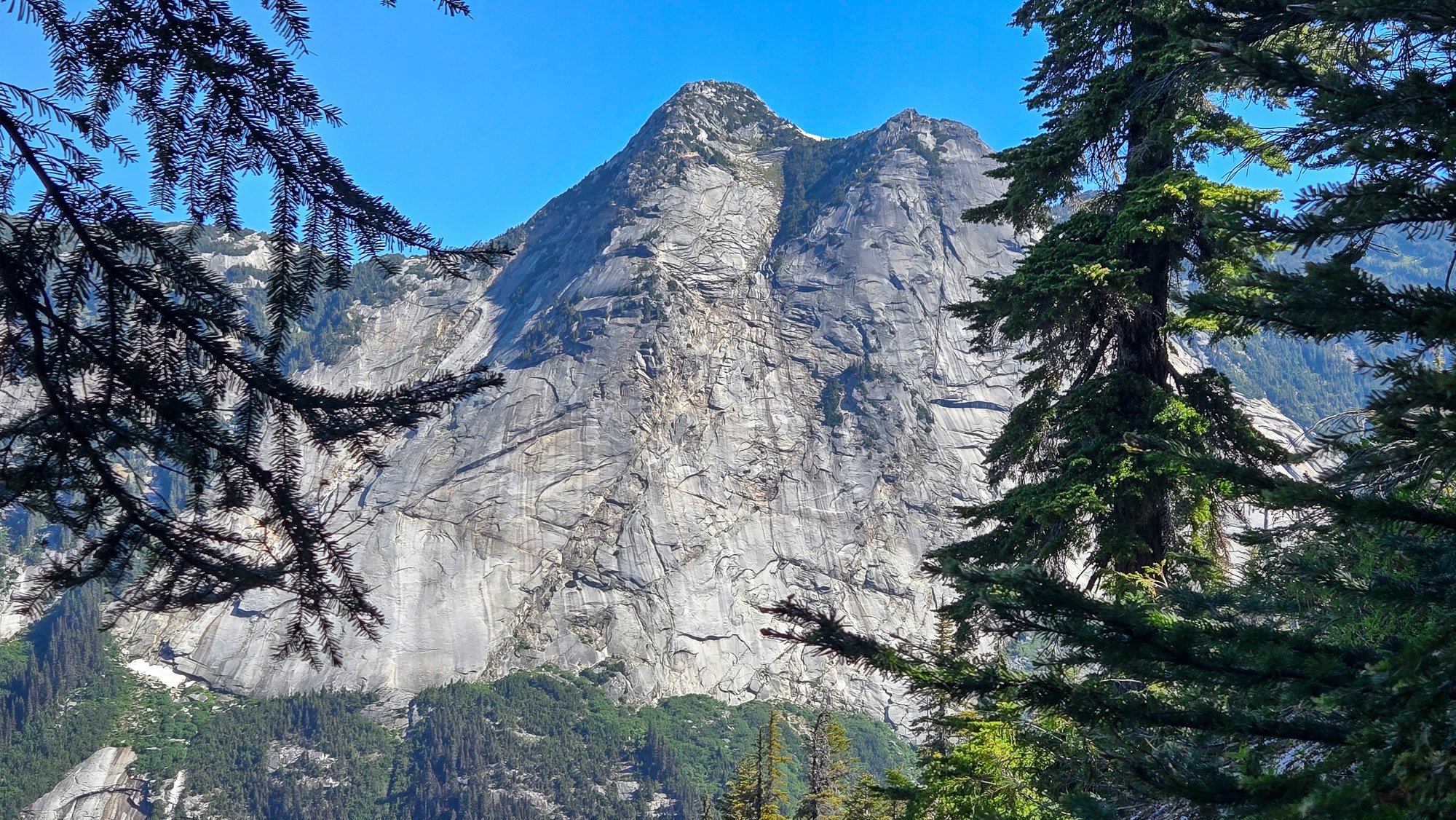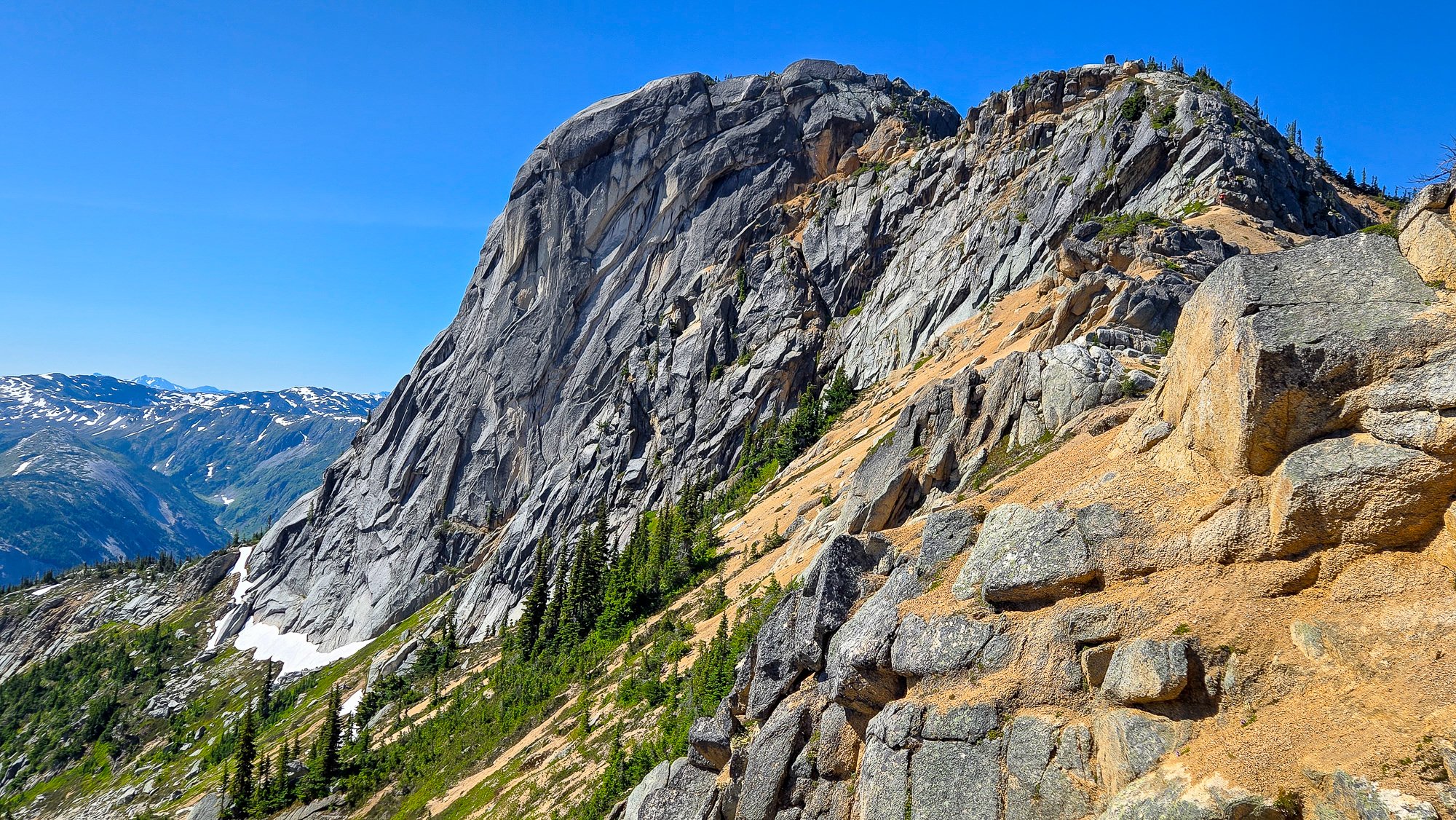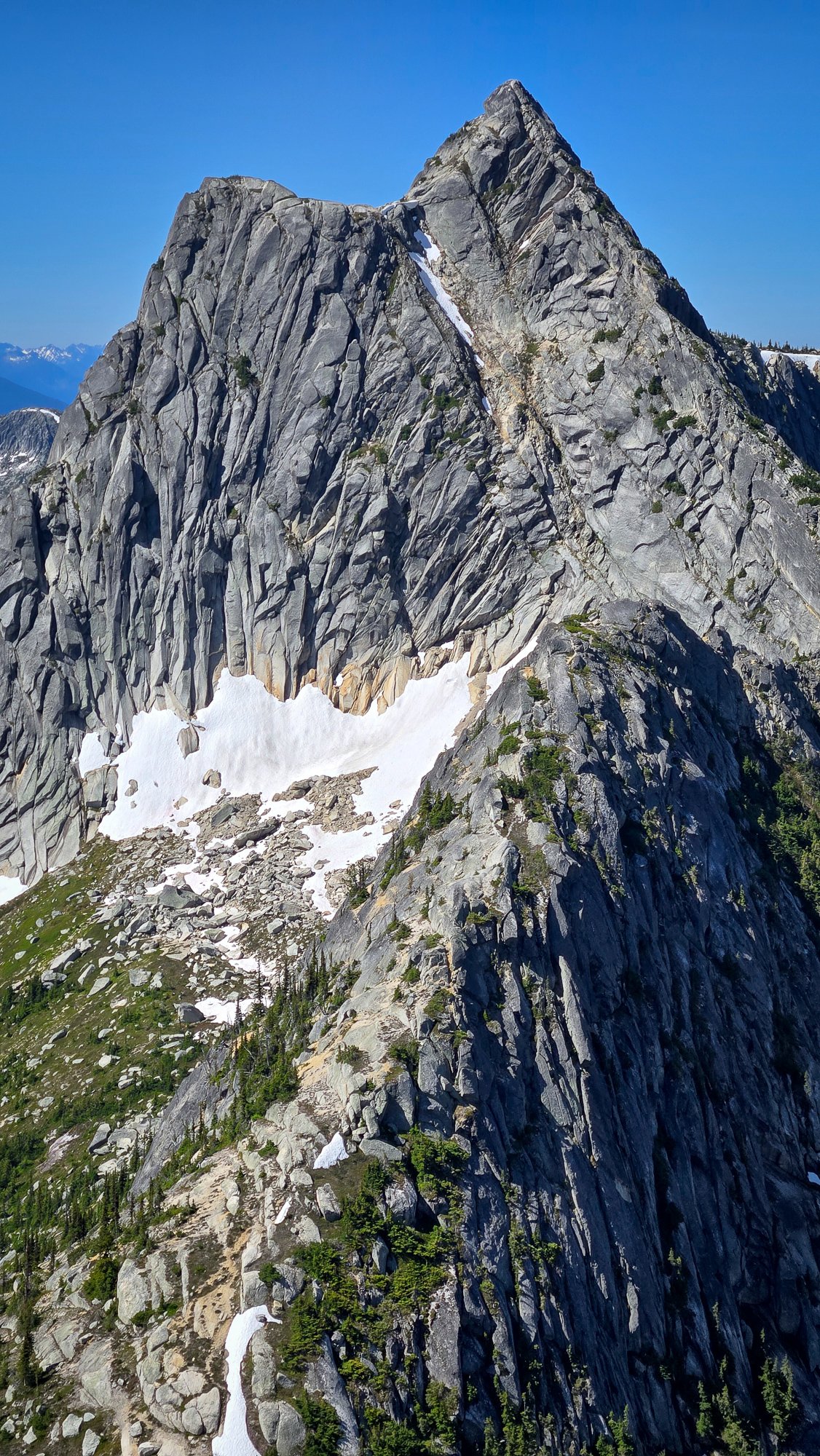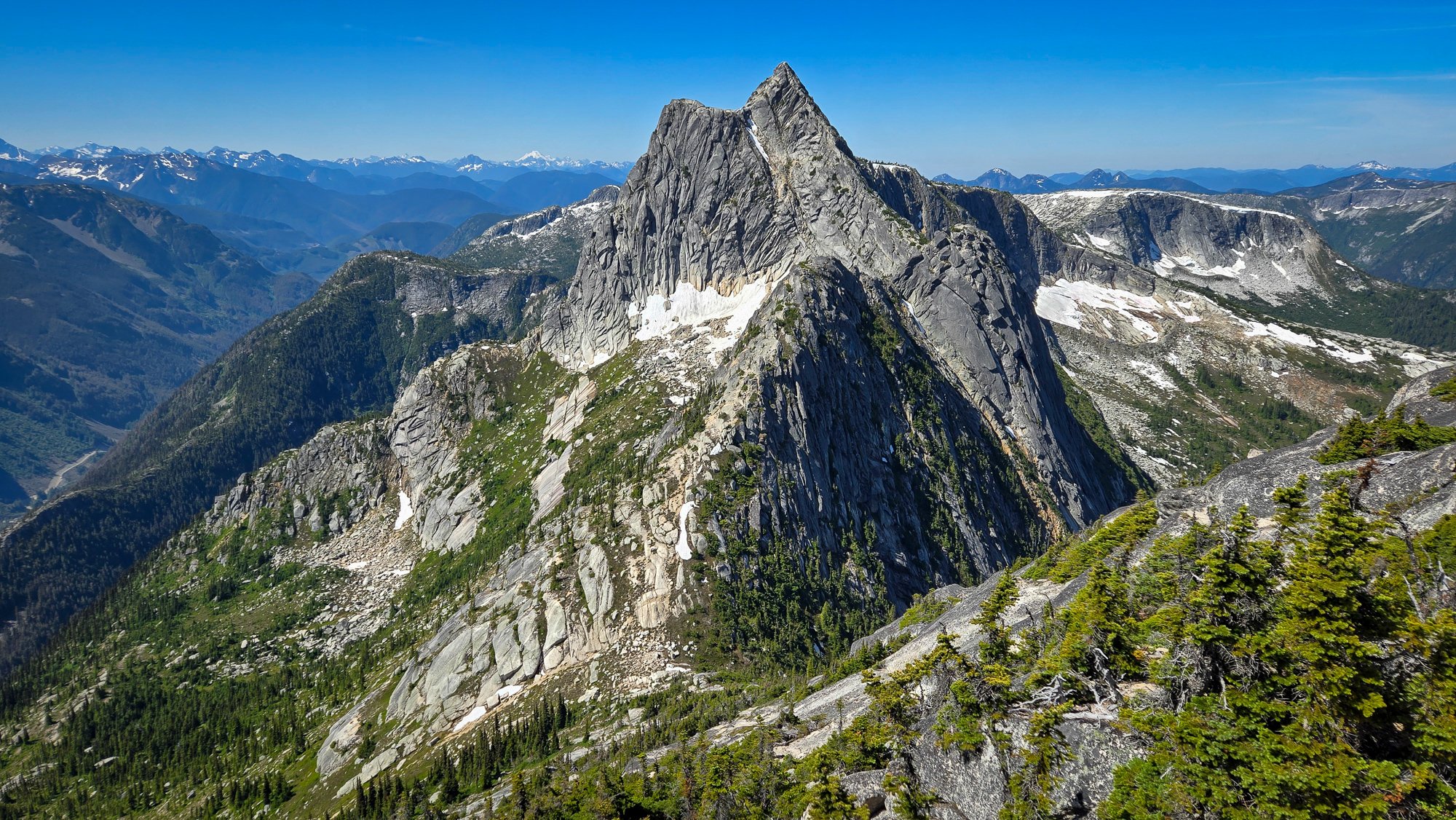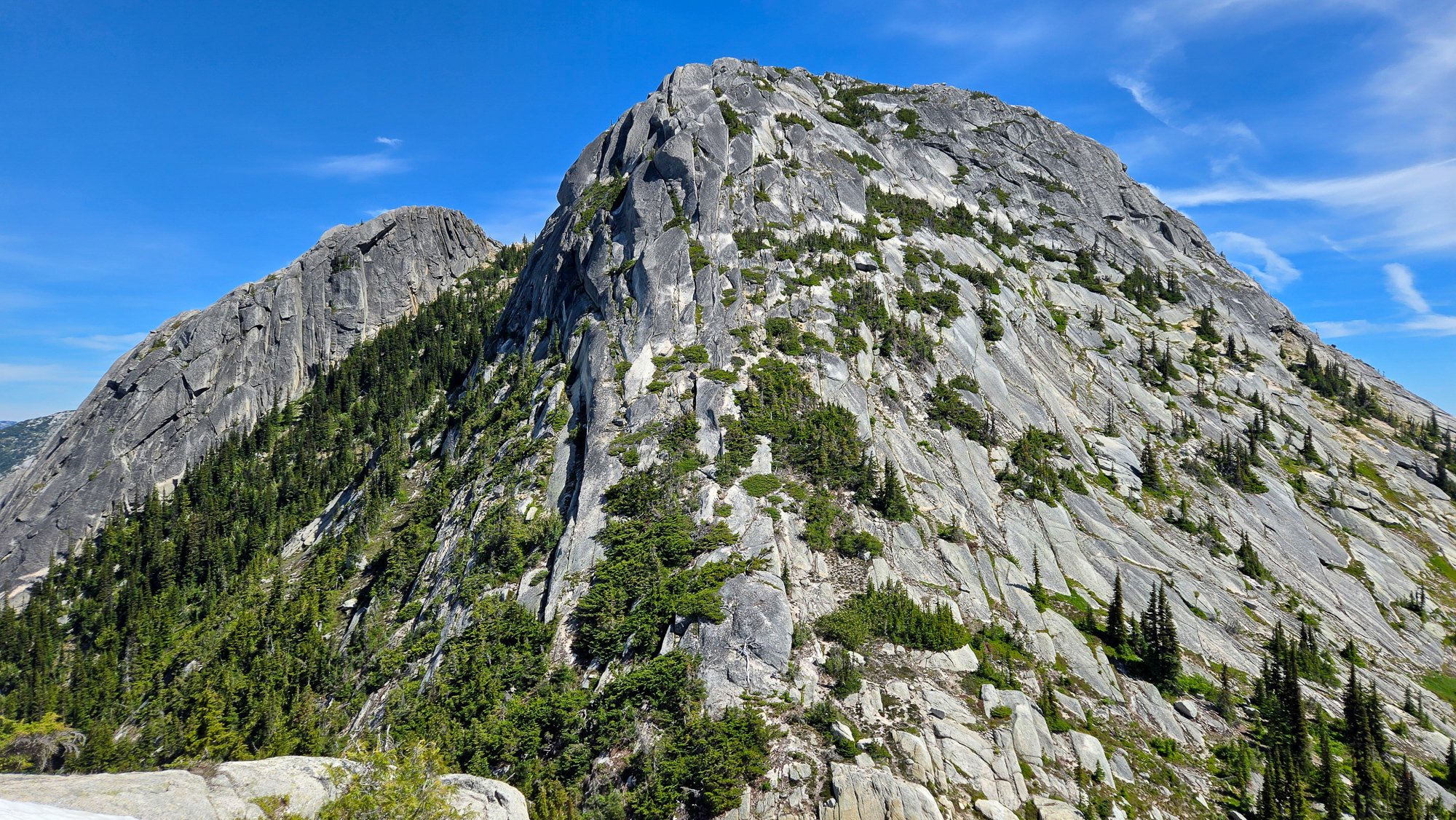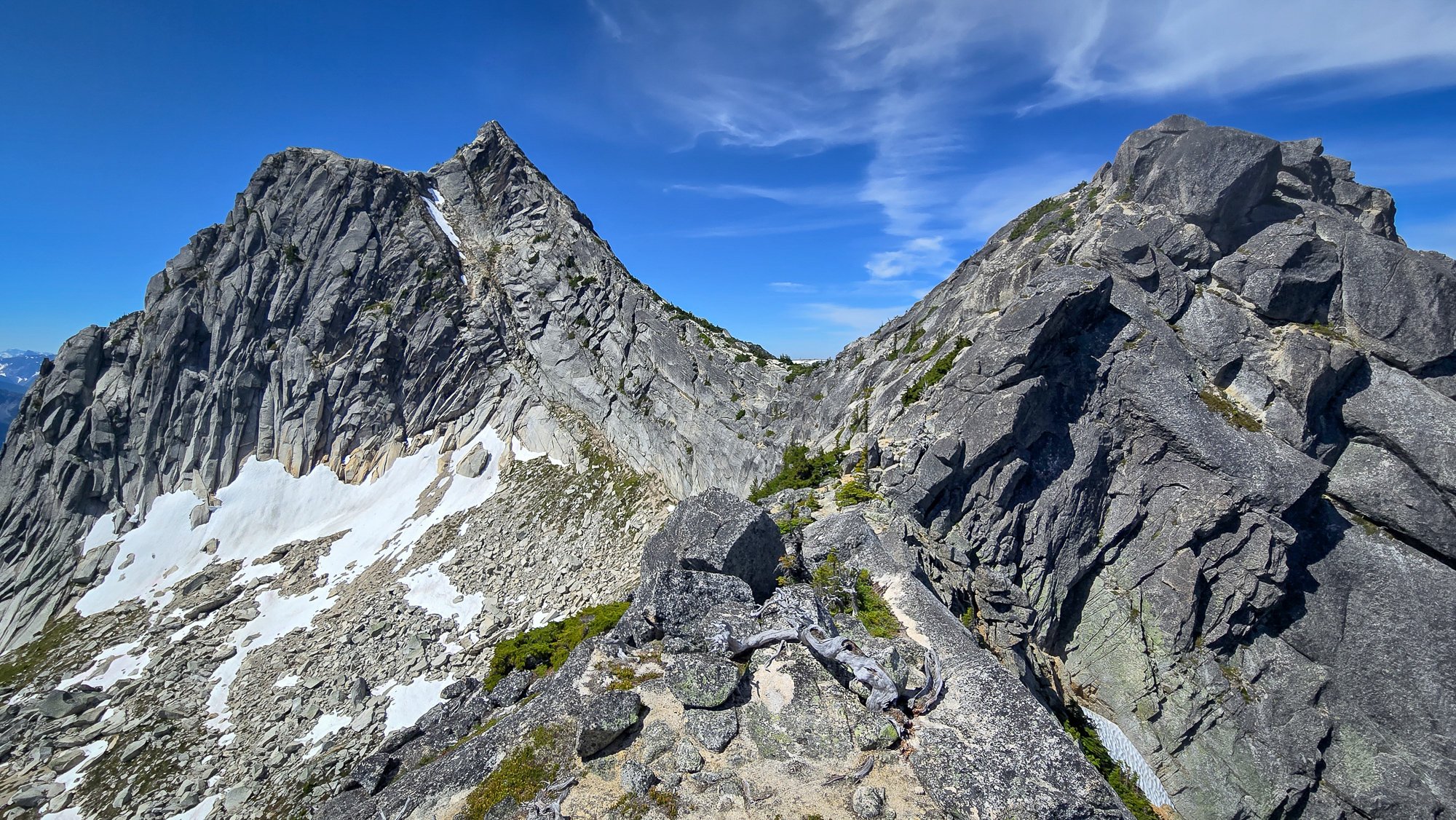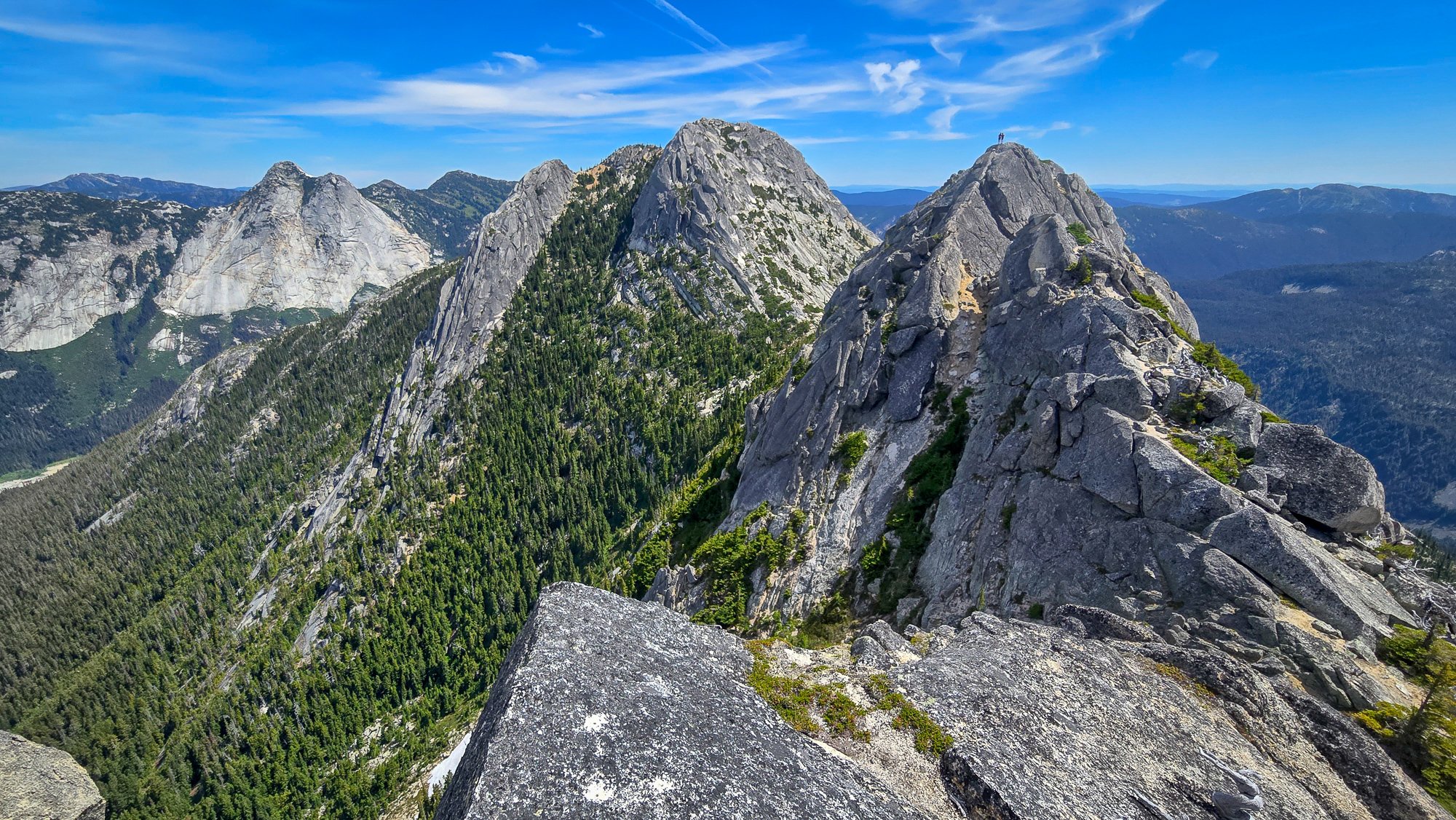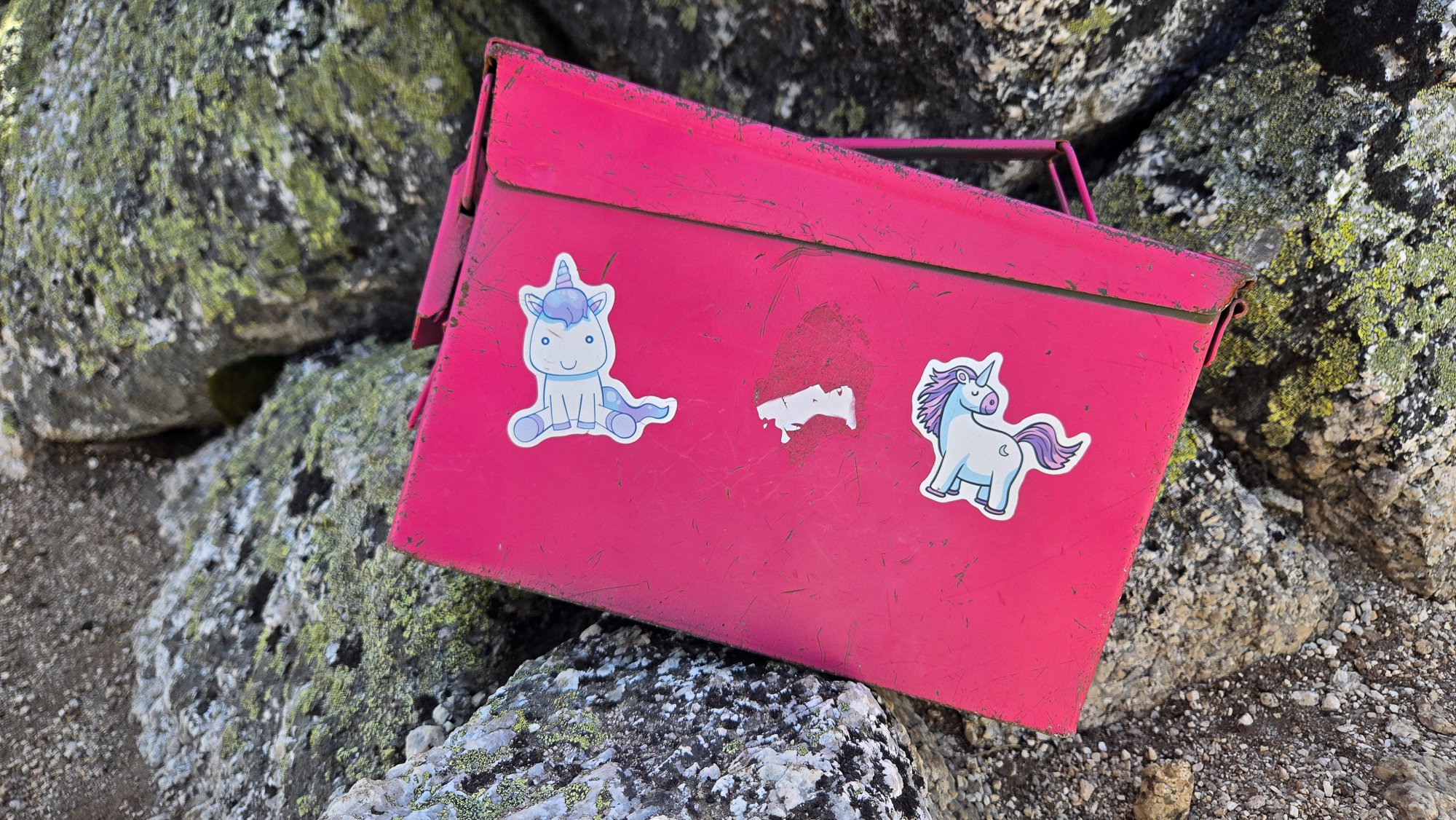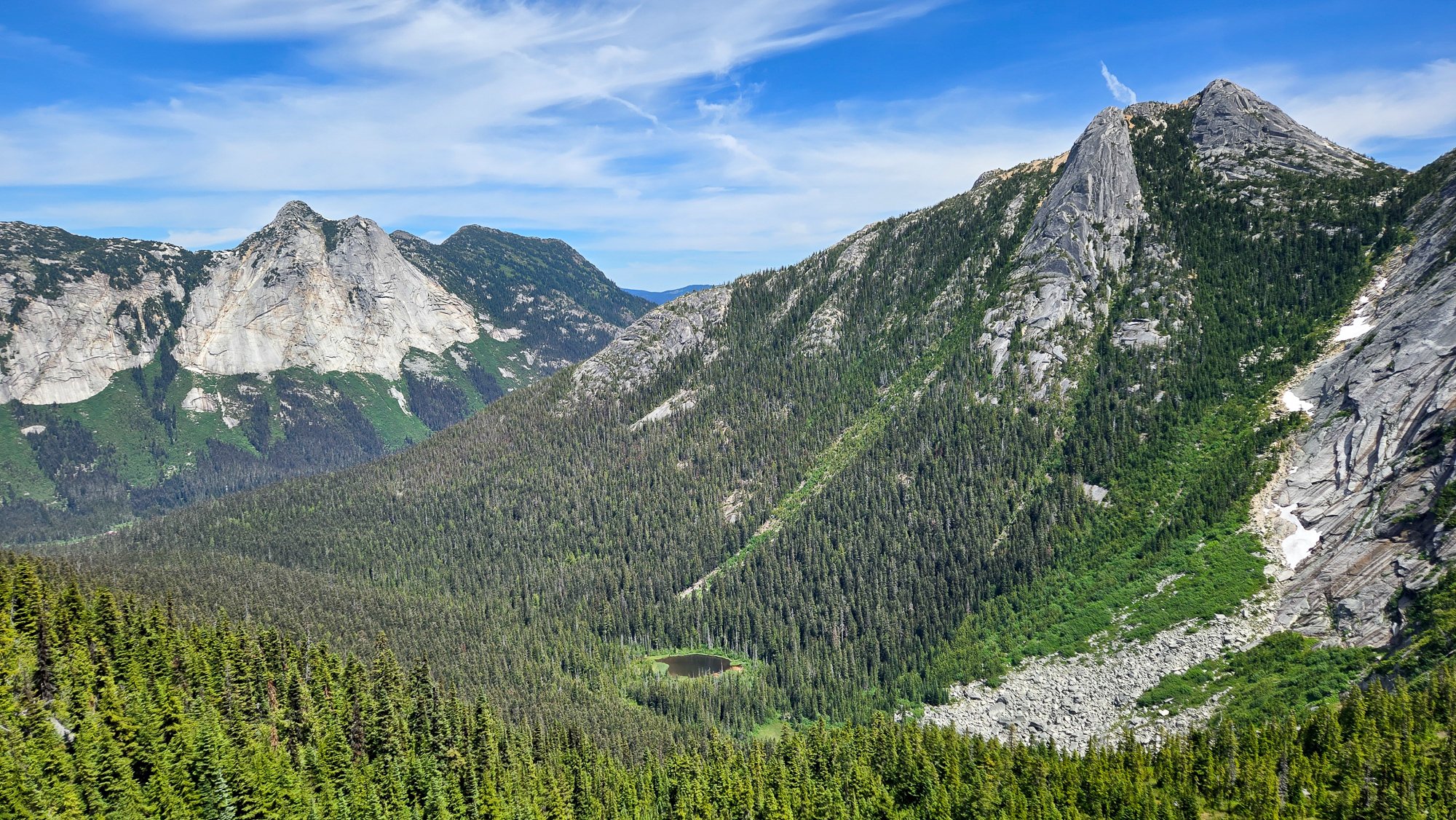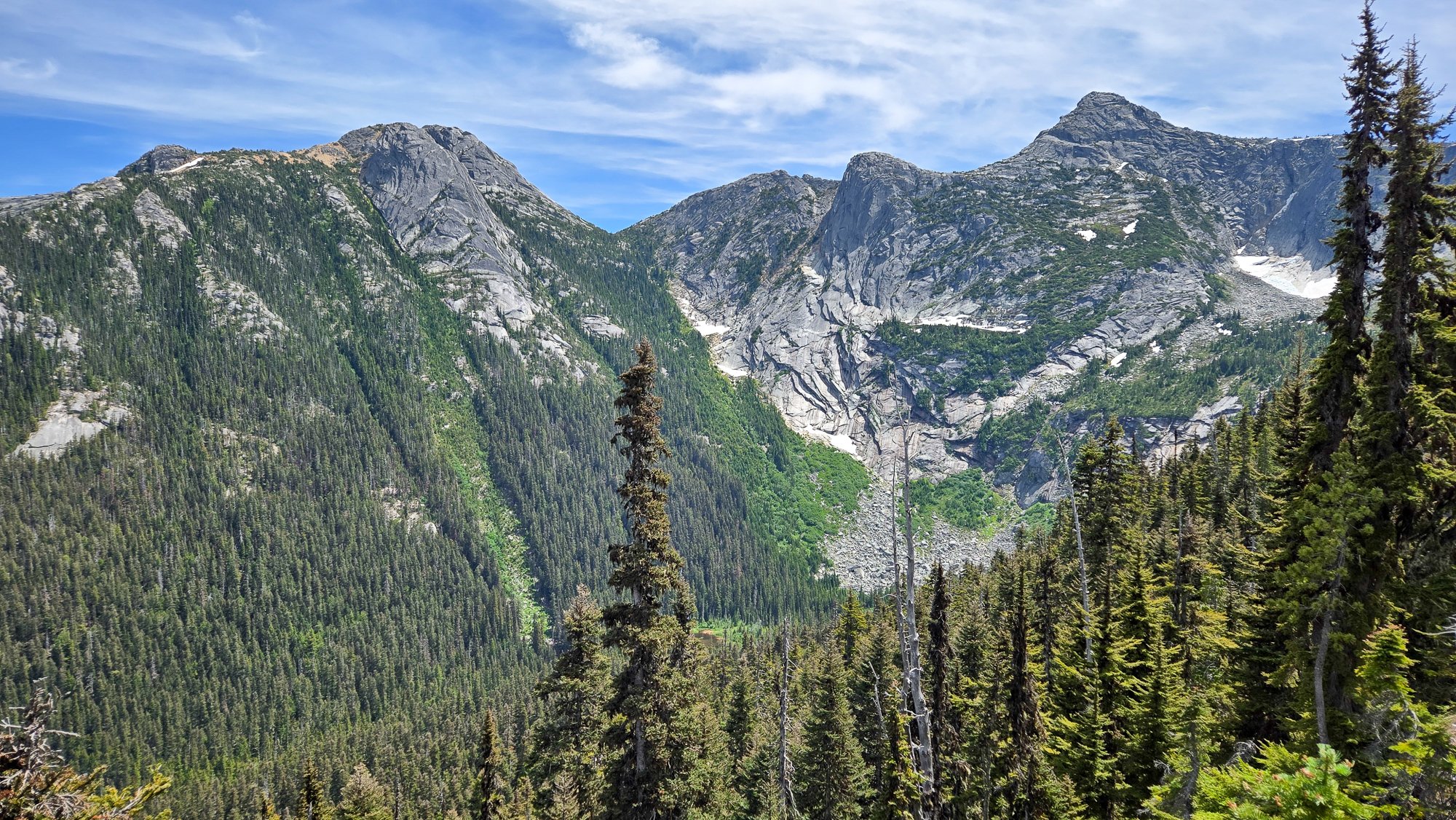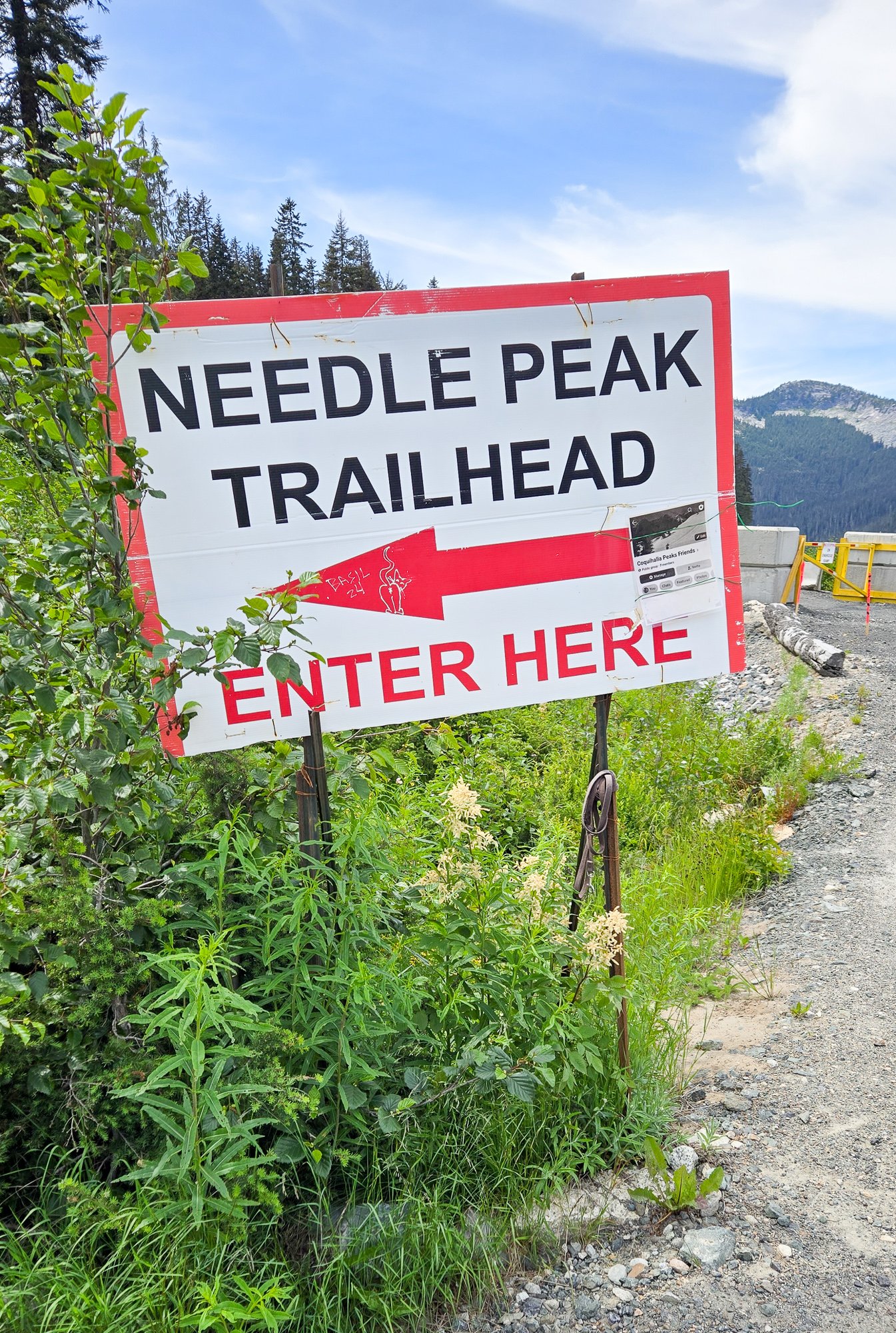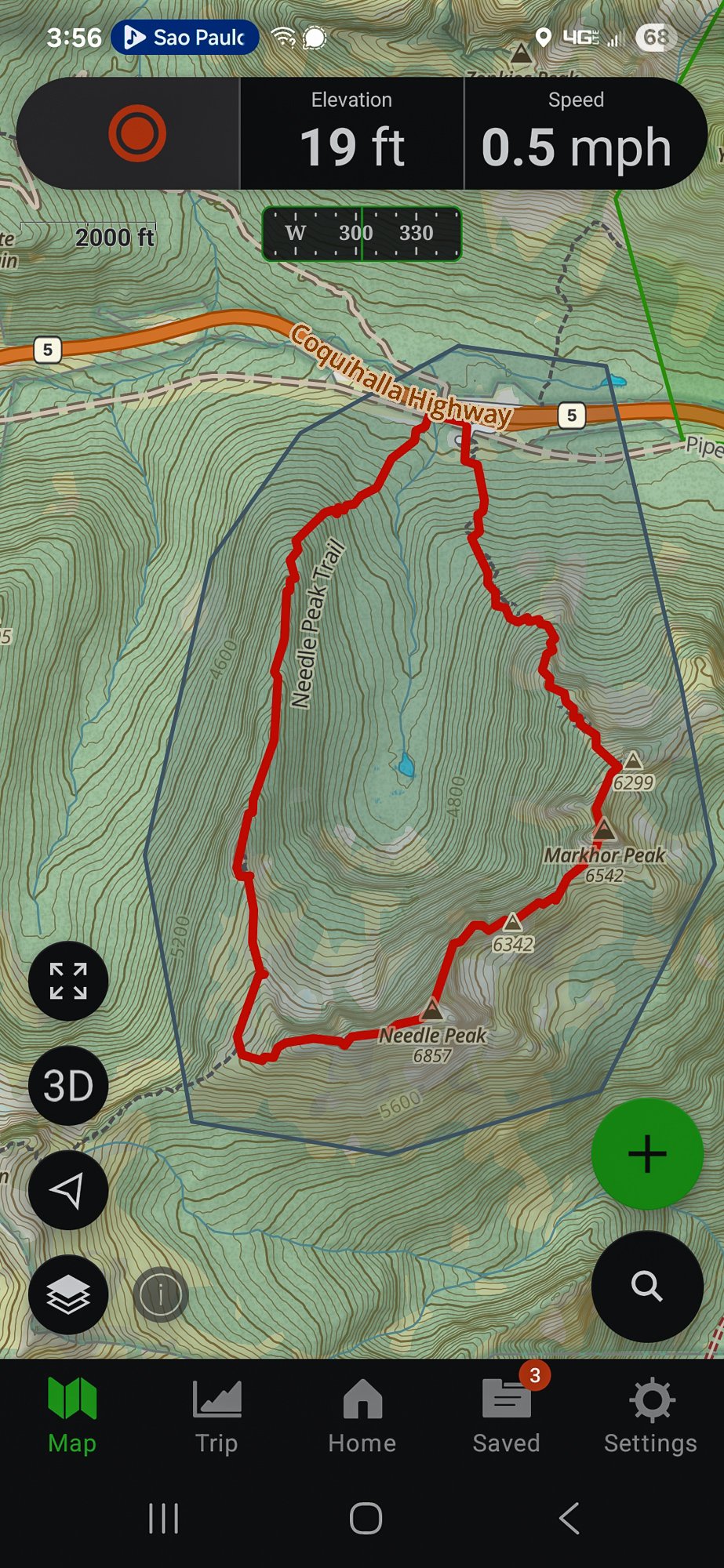Leaderboard
Popular Content
Showing content with the highest reputation on 07/28/25 in all areas
-
Trip: Johannesburg - NE Rib Trip Date: 07/24/2025 Trip Report: Another Johannesburg NE rib trip report is something the world likely doesn’t need but I’m in a bit of beta happy mood lately. Certain kinds of climbers might find the endless scrambling pretty enjoyable. And with perfect route finding the route doesn’t have to be especially sketchy, though as I found, navigation errors might be punished severely. The steep dirt embankment right off the road is a heads up rude awakening that foreshadows what lies ahead. And for such a short approach the bushwhacking is not insignificant. Steph Abegg has a good photo of the start of the route but the snow fan cuts off the very bottom of the slab and the elevation is wrong. You gain the rock more like 4100’. This confused me back in early June when I came to try the route. I got spooked off the slabs at the start. Thinking I may have missed something due to the “4400’” annotation, I climbed snow higher, but found only sheer cliffs above. On my way back down I saw from Steph’s picture that I had been in the right place after all but it turned out to just be really hard instead of easy class 4. During my second attempt I began by trying to follow blocky terrain on the left side of the slab. It started out good but when it came time to move right, a drip formed an impossibly slimy 10 foot wide barrier to passage. I retreated nearly back to the bottom and instead headed up to a right facing corner left of a roof with a wet slab below it. I went this way on my first attempt before bailing. It starts with a bit of lieback on a jug and a high reach to another jug, after which you can pull up to easier ground. Right after I took this photo my feet blew on slime. It’s a low angle stance, so fortunately I didn’t go far. Humbly I reapplied and was accepted on the second try. This short sequence felt like 5th class though as my fall demonstrated, maybe not exposed enough to count as true 5th. Though I’ve spent more than my fair share of time on that slab by now, I still have no idea where the path of least resistance is. Having failed to find the “easy class 4” I also failed to find the “sketchy 5th”. At the top of the slab next to the waterfall I found good solid rock and was on my way. Worse was yet to come in the jungle section. From the stream below I noticed some tall cedars and guessed that it wouldn’t be too crowded at their bases. This was true, I was able to move between them and the rock buttress without any real entanglement (18L pack with ax and tool covered in socks and just barely stuffed inside). However I was getting further and further west and not gaining enough elevation. Finally I saw something I was hoping to find, a steep, rocky and mostly dry bed. But guarding access was minor cliff band maybe 15’ tall. Overly committed, I explored three fairly terrifying options at 5.forest and managed to get through, relying far more on good fortune than I’d like. The episode left a bitter taste on an otherwise umami day. I definitely prefer my climbs not avoidably harrowing. Above that section I tended to stay in or just to the right of the gully between the two ribs, with a wider diversion to the right just above the last major snowfield. Where the vegetation finally gives way to solid, polished rock beginning around 6K’ was the highlight of the route for me, both because this was the best quality rock for the day, and because of the sense of relief for escaping what was just below. At about 6450’ I found a promontory with a great view of the northeast face. Beyond this point the rock quality declined some (but not terrible) and the route complexity increased. I saw that I needed to move diagonally up and right to get to where the snow was on my map. I found reasonable ramps and ledges cut with interesting quartz bands. There was one more section of minor drama with steep, exposed choss to get around the corner. Then I could see the snow and ice spilling down from Johannesburg’s north face. I gained the snow at 7200’, maybe missing the famous bivy, though I noticed one small one at 7000’ with good but not panoramic views. The snow arete was AWOL. My guess is the high heat has melted it down to a boring broad shape. Passage on the left was a little narrow but in good shape. There were no real difficulties with shrunds and crevasses and no mandatory hard ice. At the upper face especially the snow was steep enough that I was glad to have sharp things on each limb. Unlike my first time here, I couldn’t locate the summit register. Before long I began the descent to the east. It was helpful to have been up and down this way before. I had forgotten how much griffin shit is in this zone. I seemed to take a long time descending. Probably I was mentally fatigued from all the no fall terrain. It was a lovely afternoon as I traversed the basin over to the ridge off of Mixup, pierced with many marmot cries dying off with slow haunting decay. Industrious workers of the underworld, unite! More mental fatigue descending the slabs coming down from that notch, then a long overdue water break below the snow (though somehow I didn’t get dehydrated despite running out shortly after the summit). Pretty straightforward and gratuitously beautiful from there back to the trailhead. It took me slightly less time than going up and down Doug’s direct had, a little under 15 hours. I think I lost at least an hour with the slab and forest cliff navigation fiascos. Many reports say this climb is best done once. I think that’s not untrue but if you really like scrambling this could be a good one, because the scrambling goes on and on hypnotically. That said, it’s a slippery one. Gear Notes: Approach shoes, steel strap-on crampons, one tool, one light ax. Approach Notes: Last hair pin before the Cascade pass trailhead. Don’t fall down the very steep hard dirt.5 points
-
Trip: Johannesburg mountain - Northeast buttress ‘51 rib Trip Date: 07/26/2025 Trip Report: I drove to the parking lot Friday night, threw my sleeping bag in the back of the truck, and fell asleep staring at Johannesburg. About an hour after sunrise I locked the truck and started walking down the road with just a hipbelt loaded with microspikes, ul rain jacket, ice axe, garmin, work gloves, 6 gu’s, and 500 ml of water. Getting to the snow was quite straight forward. I stayed on talus, just climbers left of the moraine for as long as I could, and then traversed straight across the moraine to where I could step onto the initial slabs to gain the rib. Figuring out these initial first pitches before the brush was slightly tricky, perhaps requiring the most thoughtful climbing of the whole route. Just above the slabs was a large patch of snow. I drank some water and filled up here and then started tree climbing. I was elated to not have a pack on for this section. The work gloves and trailspikes also made life much easier through this part of the route. Once I made it to the steep heather section I was able to mostly stay on the ridge crest with semi decent rock. I did not end up joining the 1957 route near the top like I’ve read in some trip reports, and instead continued up the 51 rib. This section contained the highest quality rock and climbing of the entire route. The crux of this section was probably a bomber near vertical handcrack(5.6) that lasted a couple body lengths. Suddenly, I was on snow. The glacier and snow conditions were nearly perfect, firm but not icy. I transitioned to rock close to the top of the glacier where it became too steep for 1 axe and microspikes. Moments later I was on the summit, 3h 40m from the car. I snapped some photos, and then started down the east ridge. The cairns were quite nice to have for encouragement. Less than an hour later I was at the C-J col. The heather up to Mixup was quite unstable, frustrating, and exhausting, but it was over soon enough. Meeting up to the Ptarmigan “trail” was mostly straight forward. I feel I could have found a slightly better way, but what I did worked just fine. Just above Cascade Pass, I emptied the rocks from my shoes, downed the rest of my water and a GU, and battened down the hatches before running down to the lot. The parade of hikers were true obstacles, but it was pretty fun blasting past them. Made it to the lot 6h 49m after leaving the truck. A very good day. Gear Notes: Work gloves, microspikes, axe Approach Notes: Short and sweet5 points
-
Trip: Baker to Glacier Peak: - 17 days across the North Cascades Trip Date: 07/20/2025 Trip Report: The result of years of imagination and separate efforts. Perhaps it started after exploring the Ptarmigan Traverse, but wanting more. We started gradually exploring the areas to the north and south. Many of us have noted, with some surprise, that there was not a defined “High Route” for this area, unlike some other spectacular ranges of the American West. A few years ago some mountain runners established a “North Cascades High Route”, starting from Silver Creek and ending along the flanks of Agnes mountain. This was an impressive and inspiring feat. Nevertheless we felt it incomplete and starkly contrasted with the style in which we experience these mountains. Although in the end, our route would include much of the same terrain traversing the heart of the National Park and Cascade Crest. But as we played with the possibilities of this terrain it was hard to ignore the striking aesthetics of the volcanos near each end of the range. With both Baker and Glacier Peak being slightly higher than the peaks of the crest, they act as natural waypoints to assess exactly where one is in the vast sea of Cascade summits. It would be impossible to include every spectacular basin, cirque and summit into a single high route but starting and ending with the volcanos gave us a framework to operate in. The route we eventually completed is actually composed of many different shorter routes, linked together by various less visited terrain. Within reason, our goal was to 1) stay above tree line, 2) avoid trails and 3) keep it only lightly technical. We suspect that climbers with the required stamina, skillsets and schedules will likely choose other exploits in the range, or beyond. Nevertheless we present here some basics of our North Cascades high route. Mount Baker Our route up and down the Park Glacier had some obvious benefits. Most significant was that we could change out proper mountaineering gear for more of a hybrid backpacking kit upon return to the TH (Artist Point). The route itself is pleasant, with a scenic approach and lovely high camp. The day we climbed it the snow was soft enough not to require any belay or rappel applications, though in more firm snow that would not be the case. The upper part of the glacier was fairly broken up considering it was early July. We managed an improbable line between a series of large cracks. This line may not have been viable even a week later in the season. We stood on the summit late morning of July 5th. Shuksan Navigating this terrain presented a few obvious and a few not-so-obvioius options. Perhaps at first glance one would think Fischer Chimneys…and then descending from the Crystal Glacier onto the Nooksack. Unfortunately the bergschrund separating the two was gaping by early July and would have required a substantial amount of extra gear that would become dead weight for the week to follow. Additionally the prospect of immediately starting this traverse by hiking on trail through the forest did not match the criteria we set forth. Looking instead to the North side we scouted various lines contouring high above the deep, alder filled basins. There were definitely viable lines through the majority of the terrain, but we determined them to be too complicated and conditions dependent. The biggest concern being that the time involved would be hard to predict. It could take a few hours, or a few days. Additionally there was a good deal of objective hazard traversing high in this terrain. Ultimately we chose a safer and surer, albeit less appealing line. Hiking the ridge above Chair 8 and eventually descending to meet with the White Salmon approach, we faced our first bushwhack in the hottest part of a very warm day. Once escaping the alder hell we climbed to a ridge above and contoured forest down towards Price Lake. We crossed the outflow and traveled along the approach for the Price Glacier route for a while. There would be some fuckery along the base of Nooksack tower getting down to the glacier. But once down there we continued on part of the Nooksack Traverse until Ruth Mountain. Mineral High Route On a map this looks like comparatively straightforward terrain. We did not have a pre-scouting trip for this zone. And we definitely underestimated it. The bushwhacking before and after Chiliwack pass was steep and complicated. Before we escaped tree line onto Mineral mountain there were a series of steep and improbable gullies that took us far longer to complete than what we imagined. In hindsight I think we started out in the wrong gully and paid the price. Eventually we reached “the route” but by then we really weren’t sure if the terrain would go. Finding some clearing among the multitute of brush-gulleys. Above the forest travel cleared again. Although we soon found an abandoned, and completely full backpack. A startling sight this far into remote territory, we searched around for signs of remains but found none. The pack was probably out there for at least one winter, possibly more. We noted its location and passed a message to the park service before continuing our quest. Mount Challenger via Easy Ridge This terrain was fairly straightforward, although the day we did it was very un-summerlike. With no chance of shortcutting the impasse in these conditions we continued the sog and slog down to the lower bypass. Climbing out above the crossing was fairly sketchy. It is very eroded, hard packed and water running along the surface definitely made it attention worthy. Some of the steeper scrambling between there and Perfect Pass was also potentially consequential in heavy rain. Nevertheless we made it to the pass, but soaking wet and in high winds plus white out conditions. Crossing the Challenger glacier in near hypothermic conditions was very….engaging, to say the least. We were all very relieved to step back to “dry” land an hour later. Northern Pickets Descending into the basin is fairly straightforward, albeit somewhat tedious and extended side hilling. The climb back out through Luna Lake and to the Fury shoulder is pleasant, scenic and fun. Especially given that this day the sun had returned. The lower part of the Fury glacier develops some pretty sketchy moats early in the summer and may require walking on exposed glacier ice around 30 degrees. Rather than spend time with that we found a bypass to the north, which lines up with one of the ways parties may choose to climb Fury. We skipped the summit and instead climbed Outrigger along the way. From the col we ascended a 50 foot 5.0 pitch, followed by some rightward traversing 3rd class terrain to the south ridge. Looking back, there was a way to avoid the initial low 5th entirely by starting a bit further west in the col. Descending Outrigger was one of the highlights of the trip. Easy hiking, with the Southern Picket skyline so close you can almost touch it. There was a 15m rappel, which could certainly be bypassed by down climbing 4th class terrain slightly east of the anchor. A short but exciting and exposed bit led to continued easy hiking. Southern Pickets Getting from Picket Pass to the bottom of the basin was pretty fucked. There is some 4th-ish slab downclimb that some parties have rappelled. Beyond that, some of the beta out there is pretty snow dependent. Our planned line was not viable and it took some time to find another way down. Two of us independently destroyed a trekking pole in this zone. Once at the bottom there is some unavoidable alder to contend with. You ever get through one of these, look back from a higher vantage point and realize oh wow, I could not have possibly taken a worse line. That’s what happened here. We should have stayed closer to the cliff along the SW side of the shwack. Oh well. Climbing out to the east of the McMillan spires was fairly straightforward. We managed to avoid brush entirely. Other than a few deep gullies it was a breeze, and an incredible position. From McMillans to Highway 20 Choose your own adventure, depending on legality. Once the Sourdough trail re opens you can traverse east towards elephant butte and then south along Stettattle ridge. Until then, a legal option would be to find Goodell Creek trail/approach and take that to the highway. I cant remember which of these we took… Highway 20 provides the only on route resupply. You could probably utilize Cascade Pass, or even a trip to Holden. But we did not. Isolation Traverse- much has been written on this. Its awesome Looking back to the Pickets, Redoubt from the Mccallister glacier Eldorado to Cascade Pass- decent travel along a nice ridge and basins. Nothing too complicated. Sahale arm trail for a mile or so is a nice reprieve. If you wanted to add some major style points throw in the Torment-Forbidden Traverse through here, although its likely to add some gear complications. Ptarmigan Traverse- MUCH has been written on this. Its awesome Classic White Rock Lakes shot Dome peak area- leaving the Ptarmigan and finding the Dana then Dome glaciers. We scouted a route along the south side of Dome. It probably would go but on the trip we ultimately took the Chikamin glacier around past the gunsights and onto Kaiwhat Pass Doin’ the bull dance. Feelin’ the flow. Workin’ it. Workin’ it To Canyon Lake- The terrain eases here and may involve some bushwhacking but nothing crazy. We abandoned our map, and rationality…instead navigating on vibes alone. Our line to Totem pass was awesome and on paper probably shouldn’t have worked. Between the pass and Canyon Lake there may be a way to avoid significant brush but we did not find it. Still it went quick (downhill) Canyon Lake trail- Seems decomissioned. It’s overgrown and washed out in different places, but still a comparatively decent 5 miles. Image Lake to Lyman Lakes- We looked hard how to avoid such an extended on trail section but there really weren’t any viable alpine options. When we came to this section we were exhausted and very calorie deficient. The easy miles were welcomed. The trail itself is well maintained and incredibly scenic (cloudy pass in particular). Just a hop, skip and a “fuck!” away... Lyman Lakes and beyond- We climbed over Chiwawa mountain without much difficulty. Although the last few hundred feet were steep, slimy, scree covered slab when approached from a direct north line. Pretty gross. It would be better to find the main ridge further east and continue to the summit from there. It started to rain when we were on the summit, so we schemed a bypass for the exposed scrambling awaiting on Fortress. We found a line of weakness that allowed us to bypass to the south. It didn’t take long from there to find the pass no pass trail and follow it towards High Pass (another really scenic on trail moment). Bypassing Fortress For Napeequa we took a path of least resistance well south of the summit, descended to another saddle and then back up and around Hoof. Eventually we had to traverse below the north side of Ten Peak. It took a while but overall it was straightforward. The Honeycomb and Suiattle glaciers brought us to Glacier Gap, along the standard walk up for GP. We were greeted by friends with treats. The next morning we jaunted up the last couple miles. It was a busy weekend on the peak. Spirits were high, despite the suicide gestures Standing on the summit felt surreal. It wasn’t necessarily a positive emotion. Spending the last few summers obsessed and the past few weeks starving made this moment feel like a weird dream. The hike out from there is long, but we crushed it in hopes of making it to Olive Garden in time. Which we did. All the pasta…dipping donuts in wine…it was finally over… By the numbers: 17 days 175.2 miles (73% off trail) 86k vertical gain (86% off trail), 88k lost Average vertical change per mile: 993 feet Average time from camp to camp each day: 14 hours Average calories/day ~3800 Body weight lost- 18lbs (9.6% total lost) Pizza consumed- nowhere near enough Gear Notes: a picket, 2 screws, 3 cams, 4 nuts Approach Notes: the whole thing was an approach...4 points
-
uh. DAMN. You basically compressed most of my north cascades 25 year career into one trip. I should take up knitting.2 points
-
On July 8th at 1:20am, Felipe Guarderas and I began walking up the Goodell Creek drainage with the intention of traversing across the Picket Fence skyline. We ended up climbing just a few peaks shy of the “proper” traverse but had a wonderful time moving through a ton of incredible terrain and we are very content with our execution and style of the traverse. By the time we began to walk out, we had already begun to scheme when our next trip into the range will be. We had about 56 hours of high pressure and we knew that the traverse would be an uphill battle to complete before the rain arrived. We opted to climb in a stripped down, lightweight style carrying a small bivy kit and tarp to maximize our ability to move in the terrain. We carried two dinners and two breakfasts just in case we would need to bivy a second night and we both carried about 3000 calories/person per day. Approaching the Southern Pickets in the early morning of Day 1. We had a rack and a half of cams, aluminum semi auto crampons, 70m 8.5mm rope and shared a single Petzl gully. We both had 40L packs and carried a small puffy, vest, wind jacket and hardshell rain jacket. We hoped that we wouldn’t have to deal with any rain but wanted to be prepared if the weather arrived a bit early. The approach went smooth with lots of snow above 6000’ and we arrived at the base of Little Mac at 7:30am. We enjoyed a long break on the warm rock and attempted to dry out our approach shoes and socks from the long snowy walk above the tree line. Soloing over to the base of Little Mac. We scrambled the exposed heather ledges to the base of the 5th class climbing on Little Mac and then launched up into the 5.7 terrain above. After a bit of terrain confusion, my pace started to increase and I began to find the flow through the exposed face climbing on the upper panel of Little Mac. We continued climbing up to the summit and continued up and over the three Macmillan spires. East Face of East MacMillan. Summit of East MacMillan. I had attempted the traverse last August with Dan May, and we had made it to the backside of Terror before pulling the plug and retracing our steps back over the East Face and down into Crescent Creek Basin. This go around I felt more familiar with the terrain and moved a bit quicker through some of the confusing 5th class terrain that Dan and I struggled to read last year. We continued simuling and soloing across the skyline until we reached the base of East Tower #5, where we broke the rope out and Felipe fired the stiff 5.8 pitch to the summit. We rapped into the familiar gully of Inspiration Peak and soon after found ourselves at the base of the East Face of Inspiration. Felipe led up the impeccable pitches on the East Face of Inspiration before we rappelled down to the Inspiration-Pyramid Col and continued racing towards our hopeful bivy at the base of Mount Terror. P1 on the East Face of Inspiration Peak. P2 on the East Face of Inspiration Peak. Pyramid and Degenhardt went quickly and we reached the base of Terror at around 7pm. Tired but very psyched on all the terrain we had travelled. There were minimal bivy options and the wind had increased throughout the day out of the south. Pyramid's 5.8 Chimney Pitch. Instead of enduring a lumpy dirt bivouac in the wind, we opted to utilize a large snow moat beside a large boulder that marks the start of the East Face of Mount Terror. We spent an hour kicking in a suitable flat spot large enough for the both of us and settled into a heavy night of sleep before an early wake up the next day. Our snow moat bivy at the base of Mount Terror. We awoke at 3:30am and were well into our first simul block when the sun began to paint the east face at around 5am. We continued up and over Terror, onto the Rake’s extensive ridgeline and over the Blob and the Blip. Felipe on top of Mount Terror. One of the highlight pitches of the traverse was the knife edge ridge climbing of the East Twin Needle. It was a superb pitch of climbing in a very wild position. We hit the summit of East Twin Needle right around noon and the increase in winds made it obvious that a low pressure system was on its way. Felipe cruising the wild climbing on the East Twin Needle. On top of West Twin Needle. We reached the base of the Himmelhorn at 1:45pm and Felipe hiked the crux pitch of the traverse in good time. One more pitch brought us to the top of the Himmelhorn and we high fived and kept moving over to the rappels. Six total rappels brought us to the Himmel-Otto Col and by then it was about 3:30pm and fairly windy. With the Ottohorn and Frenzelspitz still ahead of us, we discussd the pros and cons of traversing the ominous choss gully over to Frenzelspitz, climbing the last peak and then retracing our steps. It seemed as though the loose terrain would eat up a ton of time and with inclement weather on the horizon it seemed like a death march out of Stump Hollow would be inevitable if we choose to complete the traverse by the book. Base of the Himmelhorn. P2 of the Himmelhorn. Looking back at P2 of the Himmelhorn. Instead, we left our gear at the Himmel-Otto Col, soloed the Ottohorn and then descended back to the col. We felt okay with our decision to leave out Frenzelspitz and began our long descent back down to the car. On top of the Ottohorn, looking back at the West Face of the Himmelhorn. One overhanging rappel brought us to snow in the gully and we moved quickly down to the heather benches of the Crescent Creek Drainage. We hit the Barrier Col at 7pm and were able to quickly find the trail down into Stump Hollow. The Himmel-Otto Couloir. I stupidly got us lost as we began our last descent to Terror Creek and we spent the next few hours making slow progress bushwhacking down to Terror Creek, across the river and back up to the Goodell Creek Trail we had approached on. Goats on top of the Barrier Col. By the time we both reached the cars it was 1am on July 9th. Just under 48 hours since we began walking uphill. Although we didn’t complete the full traverse, we are content with our style and timing. At around 7am, it began to rain down in Newhalem and we were psyched to be sleeping in our cars rather than high up in the mountains. We also figure this likely won’t be the last time we’ll be in the Pickets and it’s nice to have a few peaks to come back to… A huge thanks is in order for Wayne Wallace, Mark Bunker and Colin Haley for their initial vision for the traverse and to Jeff and Priti Wright who’s beta was invaluable throughout the trip. Additionally, Jens Holsten, Sol Werkin, Chad Kellogg and Dan Hilden’s vision for a full enchainment of the Picket Range inspired us immensely and we are pretty mind blown at what those guys were able to do over 8 days! https://sam-marjerison.blogspot.com/2025/07/picket-fence-traverse-attempt.html Gear Notes: 70m 8.5mm rope Singles .2-3, Doubles .4-2, Small Rack of Stoppers 6x Single Length Slings, 4x Double Length Slings, 2x UL Quickdraws Aluminum Crampons & Shared Petzl Gully Windburner Stove + 2x 4oz fuel cans (only used one) Rab SilTarp 2 Small Repair Kit: Repair Tape, Ductape, 30’ 3mm cord, 3x AAA batteries, bundle of bailing wire 2x 2L Soft Flasks Feathered Friends Tanager 20 Thermarest NeoAir Small Portable Battery, Inreach, Headlamp and chargers Approach Notes: Up Goodell Creek, down Stump Hollow (don’t get lost like us!)1 point
-
Trip: Seahpo / Cloudcap Peak - NE Ridge Trip Date: 07/05/2025 Trip Report: After much discussion and planning and two planned weekends that didn't happen due to weather, and even a scouting trip with binoculars, me Fred and Dylan finally climbed Seahpo / Cloudcap on July 4th and 5th. I had been on a mission the last few years to climb Dallas Kloke’s Difficult 10 peaks and completed the list this past winter with Lincoln. Now as part of my midlife crisis alpinist proving I'm after the self declared Difficult 10 Bonus Peaks. Basically anything that the consensus says ought to be on the list but since it's Dallas's list it doesn't change (much like the bulgers). I consider these so far to be Gunsight and Seahpo. We hiked up through the crowds on the 4th of July with heavy packs loaded with all kinds of climbing gear since we didn't actually know much about the route. We passed a lot of day hikers and Ruth climbers that all asked us where we were going with all of the gear on our packs, I grew somewhat tired and only half jokingly suggested we tell people either Shuksan or Icy just to make it simple. Bizarrely then we met somebody who replied that they had climbed Seahpo!! We went up and over Ruth, then Icy just for fun and made camp near the northeast ridge of Seahpo, making camp in just about 8 hours. We had plenty of time to study the route as it came in and out of the clouds and were pleased with what we saw. On a scouting trip a month earlier the route had ample snow on the ridge which we weren't prepared to deal with. On the 5th we were up at 5:00 and hiking just after 6:00, thus allowing for plenty of sleep to make up for a week of extremely early mornings for work for me. No one argued with that concept. We took the Beckey variation of getting on the northeast ridge at the first opportunity instead of the glacier which we assumed would be in rough shape this far into the 21st century. The scrambling on the lower ridge was excellent class 3 with some easy snow walking, then we got to the top of a tower before a major notch. This notch was the main unknown of the entire route since there's not really any good way to scout it and we had no beta at all. It proved to be troublesome. Naturally we assumed we would just be able to rappel into the notch and climb out the other side, but it took us about an hour to discuss, scout for a descent, and then eventually build an adequate repel anchor. You repelled into the notch, over a moat, down some easy snow, and into the moat on the far side. The moats were deep but not wide at this time. We huddled in the upper moat a little ways down from (south of) the top of the notch, where we had scouted the only fusible way out of the notch. There was a groove/gully that looked feasible to climb up and regain the ridge beyond. The plan was for Dylan to rope gun the rock in his approach shoes and me or Fred to kick steps in any snow in our boots. Nobody wanted to bring boots, shoes, and rock shoes. Tom Sjolseth mentioned in the comments of his Jagged Ridge TR that the northeast ridge of Seahpo was 5.6 or 5.7, so we figured we needed to be able to do that at least. Dylan was confident that he could lead up the groove, but I stated not so subtly that I wasn't confident I could follow it. He made it look hard but doable, and got a good belay 55m above at a rap station. I'm not sure I have ever climbed on a single rope cow tail style until now, and me and Fred were very very concerned with how little rope we had left, hollering constantly as Dylan finished out to the anchor. (Naturally as in most of the Cascades pro was very sparse and anchor opportunities more so). There was exactly enough rope left for me to stand at the last stance while Fred made it through the most difficult part that the receding glacier had just vacated before I had to step on to the wall and make the hard moves. It was extremely doable on second but I'm glad I didn't have to lead it. Definitely 5.7R. We all made it up to the belay and determined that it looks solo-able above, so we put away all the gear, never to use it again. The rest of the route above was no more than class 4 if you made the right choices, a couple of times just for ease/fun we maybe made it 5.2. Jim Nelson’s book Classic Cascade Climbs must have forgotten about this first pitch, Tom gets a Redding credit in the book so Dylan is convinced that he intentionally sandbagged the route old school alpinist style, not sure, but the first pitch is definitively mid 5th. The book calls the whole route 4th class. We encountered some pretty solid rock on the ridge, easy steep heather on the south side, and a short cruddy gully crossing per Beckey. As I have discovered on most of the more difficult routes Fred Beckey usually pretty reliable. We crossed the gully on a ledge and followed some heather slopes to a short rock finish to the summit. We launch it around for a while hoping the mistwood break and we would get some views but it was not to be. The route finance straightforward enough that it wasn't a big deal in fog but it's always nice to have a good look around. I found out later that we would have been able to holler across to Tim Halder on Nooksack Tower if we could have seen it. The climbing was easy enough that we downclimbed everything to the belay station then made a double 60m rappel to a horn above the moat, south of the initial groove pitch. From here we made another double rope rappel down to the top of continuous snow at the top of the glacier. The upper randkluft it was melted down to where we could land on rock and simply walk out onto the glacier. This rap was long and extremely steep, overhung over sock and then transferring to overhung over snow, pretty wild! I went first and was collecting myself at the bottom of the rap until I thought about the 30+ feet of more than vertical snow directly over my head, so I skedaddled a ways back to the top of the glacier. We all gathered back at the bottom, stowed the ropes and cruised down the glacier, and back along the ridge to camp. The glacier was chill with just a couple of moat cracks to walk around, nothing I would call a proper crevasse, in fact I would hesitate to call it a real glacier anymore; still potentially dangerous though. We took some time packing up camp and congratulating and thanking each other, caught a few last minute views and then headed back up the slog over the shoulder of Icy, back over Ruth, then cruised down the very familiar route to the car. We hit the car about 8:30 for just over a 14 hour day. More congratulations (real this time since we made it back properly), thanks all around, then back to civilization and “reality”. The holiday weekend made it so I could lounge around and nap the next day feeling glad to have pulled off another very challenging mountain. This one definitely ranks in the difficult 10 peaks in Washington in my book, when taken as a whole. I would rate the mountain above the first pitch as pretty enjoyable scruffy fourth class rock and heather, similar to other Cascade peaks; Jberg, Triumph, Klawatti, etc. I think if there wasn't the tough first pitch it would be a pretty enjoyable mountaineering route in a remote location, to me at least, 5.7 ads a level up. The approach was extremely enjoyable and pleasant, better than any of the Difficult 10. We pretty thoroughly scouted the pitch out of the notch both on the way up and down the route and determined that the way we climbed it seems to be the most doable line. If you want to do this mountain you need to be sure you can climb someone insecure 5.7R for half a rope length. If I had to do it again and it was up to me to lead I would take rock shoes. Gear Notes: Half rack, 2x 60m ropes, light MTN boots or approach shoes and wet feet, axe, helmet, others wore crampons, not I, extra axe and pickets for steep snow we didn't need. Approach Notes: Trail to Ruth, over west Icy (the truth summit now thanks to lidar BTW), down the other side. Follow the ridge the whole way. Dylan ascending to heaven on Ruth: The whole deal with my partners looking badass: Seahpo: From camp: Camping in an awesome setting: Morning. Clouds rose up to greet us: Approaching the line: Atmospheric weather: The lower route calls to us: Fred on rap: First pitch from the notch, Dylan for scale: On route: Easy: Break time on the summit: Part of the register. The pencil crumbled in my hands as I signed us in, so take a new one: Fred on the last rap: Descent of the glacier: Strolling out beyond Ruth:1 point
-
If anyone sees this and is looking for West Ridge Terror beta, here's what the couloir looked like last Saturday 7/19: There is a bail rap station near a moat not too far up on climber's left You'll see it as soon as you get up a little bit. Getting down into Crescent Creek Basin and making the traverse was pretty chill: Snow was in EXCELLENT climbing conditions, even for aluminum pons on Altras! The left-side snow finger at the Y in the gully felt exposed with the moats, but the step into the dry gully was chill. Crossing Terror Creek was very chill. There is a thimbleberry bush that offered us an abundance of amazingly perfect thimble berries. Last, there was a family of goats (mom, auntie, other auntie, and BABY) at the bivy which is very important beta. If you're as lucky as I was, you'll see a baby goat and a pika hanging out -- at the same time!! No, we didn't summit.1 point
-
Trip: Markhor and Needle Peak - Traverse Trip Date: 07/07/2025 Trip Report: I am too behind on everything right now to write much, but I figured some of you may be interested in a lesser known romp across the valley from Yak Peak off the Coquihalla. It is quite the scenic and reasonable outing for the mature mountaineer, but I think most would enjoy the lovely ridgeline between Markhor and Needle Peaks. It starts with a steep grunt up the climber's trail up Markhor, with expanding views of Yak Peak across the way: Within an hour or two, the summit of Markhor comes into view, with nothing more challenging than some exposed class 3 standing between the car and the summit: The view expand greatly, with the shapely Needle peak beckoning across a kilometer (we're in Canada, eh) or two of ridgeline: The bugs were a bit on the bad side so I didn't waste much time picking my way down Markhor to a rap station and fixed line which greatly aided the descent down a slabby section. I wrapped a prusik around the thin line which was a nice hand hold as I slid it down and scrambled lower. Here's looking up at the slabby bit below the summit of Markhor after clearing it: And then the really good stuff lay ahead. Always scenic, often exposed, sometimes a bit on the kitty litter side, it was nonetheless "distinctly alpine and a pure joy" to quote Fred from some peak or other in the North Cascades (Logan?). It was usually pretty easy, although a few sections edged into exposed 4th class where a fall would end very badly: I caught a glimpse of another couple behind me as I scrambled along: And soon was on the summit of Needle, alone with the festive summit register: The bugs here were terrible as well so I didn't stay long, mosying down the well trod Needle Peak trail that was very scenic the entire way. Yak Peak on the left and Markhor on the right: Partway down there was a nice viewpoint where I could take in the entirety of the Markhor to Needle ridge traverse: And soon was spit out at the well marked Needle Peak trailhead: I think it took me about 5-6 hours for the loop, including stops, which was a bit longer than the drive, thankfully. The only bummer is that it isn't longer! Gear Notes: helmet and approach shoes. Brought a 30m RAD line to rap but fixed line in place on slab downclimb Approach Notes: Park at Needle Peak Trailhead and find flagged route up Markhor to the east, starting in pipeline swath. Descend well marked Needle Peak trail after traverse1 point


